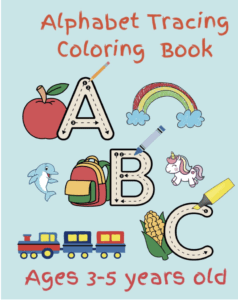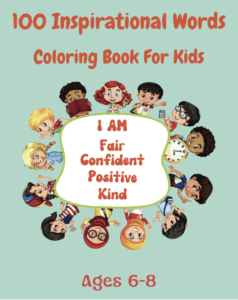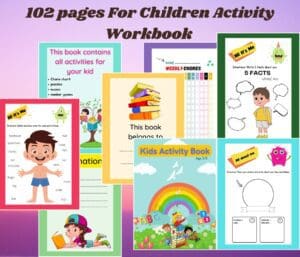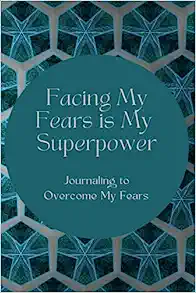Valentine's Day Guide to Treating Yourself with Love

Every Valentine’s Day, we wake up wanting to celebrate love with the significant people in our lives, but what about showing love to the most important person—you?
This time, focus on giving Valentine’s Day gifts to yourself; let’s look inward and dedicate the day to self-appreciation, self-love, and self-care.
Please note that some of the images and links are affiliate links which I may receive a small compensation.
Whether you are coupled up or single, life will always be better when you take time out for yourself. Today, we will explore different ways to treat yourself with love.
-
Organizing Your Life With Planners

From mothers with large families to people living alone and tackling chores and jobs, it can become overwhelming to deal with everyday tasks as well as maintaining personal goals.
Dedicate your Valentine’s Day plans to incorporating some organization into your life. Never underestimate the power of organizing since it will help you create space for things you love to do and meet with people who help you re-fill your social battery, too!
Benefits of Using a Monthly Planner
By using a great monthly planner, you can create a well-organized schedule that helps you stay on top of your commitments. By having everything laid out in front of you, you will be able to free up time for activities that bring you joy.
Note: Add specific time slots in your new monthly planner for self-care slots. The best way is to make them a non-negotiable part of your day.
Take advantage of the planner’s goal-setting section to outline the personal milestones you want to cross in life. Whether it’s a new hobby or completing a personal project, by breaking down the larger goals into smaller, manageable tasks, you can increase a sense of accomplishment.
Recommended: Appointment Book
Getting an Appointment Book that includes monthly and weekly planning options can be a great way forward. It includes appointment pages, federal holidays, note sections, and even a monthly savings tracker.
With a beautiful design of geometric shapes and several colors, you will be able to have a cute monthly planner by your side on your journey to self-love!
Tips for Effective Planning
There are only two things that you should keep in mind when you are starting on the path to organization.
Firstly, make sure to designate specific time blocks for self-love activities, ensuring they become integral to your routine. Secondly, don’t forget to give yourself time to celebrate! Reserve space in your planner for reflections on accomplishments and moments of self-love. Celebrate small wins, reinforcing positive self-affirmations.

Wake up on Valentine’s Day with gratitude for yourself and your life.
Gratitude can be a powerful force to turn your perspective into a positive one, improving your overall sense of well-being. Introducing a gratitude journal into your routine allows you to shift your focus from what's lacking to what you're grateful for.

Benefits of Practicing Gratitude
Practicing gratitude has numerous positive effects on mental and emotional health. Research suggests that regularly expressing gratitude can lead to increased happiness, improved relationships, and reduced stress levels. By integrating a gratitude journal into your daily routine, you invite a sense of appreciation into your life.
Recommended: Gratitude Journal
Take your life with positivity! Get the beautifully handcraft Gratitude Journal to write down everything you are thankful for in life. By reflecting every day on how you feel and remembering the things you have in your life, you will turn your outlook on life into a more positive one. It can try to help in creating self-love for life.
Plus, it makes a great Valentine’s Day gift for loved ones, too.
Guided Exercises for Gratitude Journaling
We recommend setting aside a few minutes every single day to jot down at least three things you are grateful for. During this me-time, you can note down any simple pleasures, moments of joy, or supportive people in your life that make you smile.
The Gratitude Journal can even be a great way to spin challenges in life into opportunities for growth. By reflecting on any difficult situations and identifying the lessons you have learned, you will foster a remarkable level of resilience.
The Connection Between Gratitude and Self-Love
Practicing gratitude is a form of self-love. By acknowledging and appreciating the positive aspects of your life, you cultivate a sense of self-worth and contentment.
-
Reconnecting With the Spirit

Love is the best way to connect with inner spirituality, and what day could be better to start than Valentine’s Day?
This one is for religious people who want to bring love and positivity into their lives with spirituality. Taking the time to channel your spiritual reflections and creating a sacred space to connect with your inner self and foster a sense of divine love can be a life-changing experience.
The Spiritual Aspect of Self-Love
While self-love often involves practices that address the physical and mental aspects of our lives, the spiritual dimension is equally vital. Embracing spirituality can offer solace, purpose, and a deeper understanding of oneself.
Recommendation: The Dear Lord Almighty Notebook
The Dear Lord Almighty" notebook can become a powerful conduit for spiritual musings. The pages are thoughtfully designed to encourage exploration of beliefs, seek guidance for a Higher Power, and express gratitude for life.
An elegant floral notebook for daily writing can become a sanctuary for the many emotions we feel in our daily lives: pain, sadness, happiness, relief, excitement, and, most importantly, love. Getting clarity on your deepest inner thoughts can be a powerful spiritual experience as you reconnect to the life around you and the life beyond you.
The Role of Spirituality in Self-Acceptance
Connecting with your spirituality provides a sense of purpose and belonging, contributing to greater self-acceptance. By acknowledging the divine within, you strengthen your foundation for self-love and acceptance.
-
Nourishing Your Skin with Skincare

Self-love goes beyond just emotional and spiritual aspects –it also includes your physical self. A skincare routine isn’t just a beauty regimen but gives you extra time every single day to commit to self-pampering and a declaration of self-worth. When making your Valentine’s Day plans for this year, make sure to end the day with a pre-bed skincare routine.
While it does bring aesthetic benefits, a skincare routine can help you prioritize your well-being. Taking out 15 minutes and doing something for yourself can be the ultimate way to practice self-love.
A log book for all your skincare steps can help you record all the products you use and how you use them. We realize that stepping into the world of skincare can be overwhelming since there is a huge selection of products; it can help to have a diary to jot down your skincare goals, dermatologist appointments, and what is working for you.
Pampering Skincare Routines
Here are some basic skincare treatments to get you started on your me-time:
- Cleansers and Exfoliants: Begin your skincare routine with a gentle cleanser to remove impurities. Incorporate exfoliants to rejuvenate and revitalize your skin.

- Moisturizers and Serums: Hydrate your skin with nourishing moisturizers and serums. Choose products that cater to your skin type for optimal results.
- Face Masks for Relaxation: Treat yourself to a spa-like experience with indulgent face masks. Opt for masks with ingredients that address your specific skincare needs.

-
Meditating and Manifesting a Better Life

Mindfulness takes center stage when you want to treat yourself with love. This Valentine’s Day, start the day by taking a little time to meditate. By manifesting positive changes in your life and practicing gratitude for the good things in life during your meditation routine, your outlook on life will change to one of love.
Meditation for Mental and Emotional Well-Being
Meditation is a powerful tool for enhancing mental and emotional well-being. Regular meditation practice has been linked to reduced stress, improved focus, and increased feelings of inner peace.
Manifesting Through Meditation
Manifestation involves channeling positive thoughts and intentions to bring about the life you desire. By combining meditation with intentional manifestation, you align your mind with your aspirations, fostering a sense of purpose and self-love.
Recommended: Manifest, Meditate, Make It Happen Journal
A gorgeous journal to write down the things you want in life can be a great way to channel your manifestations into reality. By dreaming it, working towards it, and always keeping it close to your heart, you will be able to achieve everything you want.
Guided Meditation Exercises for Beginners
Here are some guided exercises you can start with:
- Breath Awareness Meditation: Start with simple breath awareness. Focus on your breath, inhaling and exhaling deeply. This helps quiet the mind and create a sense of inner calm.
- Visualizing Your Ideal Self: Envision your ideal self and the life you want to lead. Picture it vividly during your meditation, allowing positive emotions associated with that vision to permeate your being.
- Gratitude Meditation: Combine gratitude with meditation by focusing on the things you're grateful for. This practice reinforces positive thinking and encourages self-love.

-
Other Self-Care Activities
Self-love is an ongoing practice that goes beyond scheduled rituals. By incorporating self-care activities on Valentine’s Day, you not only prioritize your well-being but reinforce the message that you are deserving of love and attention.
Here are some other self-care activities you can include in your Valentine’s Day plans:
- Relaxing Bath Rituals: Draw a warm bath infused with calming essential oils or bath salts. Use this time to unwind, reflect, and pamper yourself.

- Enjoying a Favorite Book or Movie: Immerse yourself in a captivating book or movie that brings you joy. Allow yourself to get lost in the storyline and savor the experience.
- Exploring New Hobbies or Activities: Use Valentine's Day as an opportunity to try something new. Whether it's painting, cooking, or physical activity, discovering new passions fosters self-growth.
Nurture self-love and treat yourself with love on Valentine’s Day. With our recommended activities, you can go beyond just one day of self-love and make sure to create a long-term journey of self-appreciation.
As the day dedicated to love concludes, remember that self-love is not confined to a specific date on the calendar. It's a lifelong journey, and every act of self-care, reflection, and affirmation contributes to a deeper and more meaningful connection with oneself.
Ultimate Holiday Gift Guide for Moms: Amazing Finds Under $15 That She’ll Love!"

The holiday season is a magical time for families, filled with excitement, decorations, and of course, gifts. But as moms, many of us are looking for ways to make it special without overspending by keeping things simple and stress free.
Thankfully, when it comes to gift-giving, a meaningful present doesn’t have to come with a high price tag. Books and journals, in particular, are a wonderful way to show you care, while making sure you stretch every dollar.
This guide offers a list of affordable holiday gifts under $10, covering a range of interests for kids and moms alike. I created these books to provide families with meaningful, affordable ways to learn, create, and connect.
Each book is designed to encourage curiosity, joy, and shared experiences, making the holiday season a little brighter without breaking the bank.
Let’s dive into gift ideas that are as kind to your wallet as they are memorable!

Holiday Gifts for Kids Under $10
One of the best ways to encourage learning while keeping kids entertained is through activity books that also allow parents to join in. Here are some affordable and engaging options that make great stocking stuffers.
1- Alphabet Tracing Coloring Book
For families with young children, the Alphabet Tracing Coloring Book is an educational gift perfect for preschoolers and kindergarteners. Priced under $10, this activity book combines fun and learning, giving kids a head start on handwriting and letter recognition.
Kids will enjoy tracing letters, and parents can bond with them over activities that improve hand-eye coordination and fine motor skills. It also provides a structured foundation for future learning, making it a meaningful gift that helps build confidence and keeps little ones engaged.
- Why Moms Love It: Affordable, educational, and perfect for ages 3-5.
- Key Benefits: Early learning, fine motor skills, and family bonding time.
2- 100 Inspirational Words Coloring Book
If you’re looking for an inspiring yet budget-friendly gift, the 100 Inspirational Words Coloring Book for kids aged 6-8 is ideal. This coloring book is filled with uplifting words designed to build confidence and self-esteem.
With a retro design and fun, floral fonts, kids will enjoy coloring while also being reminded of their own potential. It’s perfect for a quiet afternoon or a family coloring session, making it both a creative and empowering gift.
- Why Moms Love It: Uplifts young minds while providing screen-free entertainment.
- Key Benefits: Boosts confidence, encourages creativity, and offers relaxation.
3- Adorable Baby Animals: Bold and Easy Coloring Book
A heartwarming gift for all ages, the Adorable Baby Animals: Bold and Easy Coloring Book features 68 pages filled with delightful, large illustrations of baby animals, from cuddly lions to charming polar bears.
Designed with simple, bold lines, this coloring book is perfect for young kids learning to color and for adults seeking a calming, creative break. It’s a versatile activity that brings families together, whether for a cozy coloring session with kids or a relaxing moment alone.
- Why Moms Love It: Provides a calming, screen-free activity that’s perfect for any age.
- Key Benefits: Develops fine motor skills, encourages family bonding, relieves stress, and promotes creativity.
4- Christmas Word Search Puzzle
Here’s a gift for puzzle lovers! Bring some holiday magic into your home with the Christmas Word Search Puzzle book for ages 6-8. This word search activity book, filled with Christmas-themed words, is an engaging stocking stuffer.
Word search puzzles help kids improve concentration and vocabulary, and they’re great for road trips or cozy evenings at home.
- Why Moms Love It: Great stocking stuffer under $10 that keeps kids entertained.
- Key Benefits: Enhances learning skills, holiday-themed fun, answer key included for added challenge.
Affordable Gifts Under $15: Ideas for Young Chefs Too!
Encouraging kids to explore new skills can be a valuable holiday gift, and there’s no better way than to introduce them to the joys of cooking.
Here’s a fun and budget-friendly journal that lets kids capture their culinary adventures.
5- My First Dessert Recipe Journal
A unique and memorable gift, the My First Dessert Recipe Journal is perfect for budding chefs aged 8-12. This journal encourages kids to explore the joys of baking, allowing them to jot down recipes and ideas for delicious treats.
It’s more than just a recipe book; it’s an opportunity for kids to learn critical thinking, follow instructions, and feel proud of their creations. This journal is a gift that keeps on giving, as it brings families together in the kitchen to create cherished memories.
- Why Moms Love It: Encourages creativity and hands-on learning.
- Key Benefits: Builds critical thinking, promotes family time, and boosts kids' self-esteem through baking.
Activity Books for Kids
Learning doesn't have to be so tedious especially when it comes to math. I've developed a fun math activity book that's creative and fun.
6- Math Activity Book for Ages 6-8
A practical and engaging gift, the Math Activity Book for ages 6-8 is designed to make math fun. With activities like dot-to-dot numbers, addition, and subtraction, this book reinforces basic math concepts while providing hours of entertainment.
Parents will appreciate a gift that combines education with play, helping kids build math skills in a fun way.
- Why Moms Love It: A budget-friendly way to encourage math practice without screen time.
- Key Benefits: Enhances math skills, supports learning outside the classroom, and makes a perfect educational gift under $15.
Digital Downloads are an inexpensive way to give kids learning tools without buying the entire book! And...it's a fun stocking stuffer too. Check these out from my Etsy store.
7- The Cat Holiday Coloring Book
Celebrate the holidays with this adorable cat-themed coloring book! With over 70 beautifully detailed pages featuring holiday-inspired cats, this book is the ultimate stress reliever for both kids and adults. Each page is crafted in high resolution (300 dpi) for clear, vivid printing.
8- Amazing Children's Activity Book
A perfect educational tool for kids aged 3-7, this activity book is filled with fun worksheets designed for Pre-K to First Grade. It’s ideal for both homeschooling and classroom settings, providing age-appropriate lessons and activities that make learning engaging. The 300 dpi resolution ensures each printed page is crisp and easy to read.
9- Kids Christmas Coloring
Filled with festive Christmas scenes, this coloring book includes big, bold illustrations of Santa, reindeer, snowmen, and more holiday favorites. Designed for kids to enjoy hours of coloring fun, this book brings holiday cheer to the youngest artists, while offering older kids a creative way to relax. Perfect for the entire family to get into the Christmas spirit!
Budget-Friendly Holiday Gift Ideas for Adults
Puzzle books and Kindle reads make perfect holiday gifts, blending fun and creativity without breaking the budget. With engaging challenges and instant access to stories across genres, these picks are sure to bring joy to readers and puzzle-lovers of all ages.
10- Puzzle Books for All Ages
Puzzle books are a fantastic gift for both kids and adults, especially if you’re shopping on a budget. Here are a few options to consider:
- Crossword Puzzle Books: These classic puzzles are excellent for sharpening vocabulary and problem-solving skills.
- Sudoku Puzzle Books: Perfect for anyone who enjoys numbers and logic, sudoku puzzles provide hours of challenging entertainment.
- Word Search Books: Fun and simple, word searches are relaxing and enjoyable for puzzle lovers of all ages.
Puzzle books generally come in various themes, from holiday-specific ones to everyday classics, making them a versatile and thoughtful gift.
11- Kindle Books and Short Stories Under $10
For book-loving moms and older children, Kindle books and short story collections are affordable, accessible, and clutter-free gifts.
With prices typically under $10, Kindle books cover a wide range of genres, so there’s something for everyone.
For young readers, consider fun and festive stories to spark their imagination. For adults, there are motivational reads, cozy mysteries, or seasonal romance novels that add holiday cheer.
Our Gabe Willoughby's Secret Abilities series is available on Kindle!
- Why Moms Love It: Digital books are eco-friendly, budget-friendly, and easy to access.
- Key Benefits: No need for physical storage, unlimited options, and a personalized reading experience.
A few Ideas to make your gifts extra special:
- Pair Books with Simple Accessories: Consider adding a few affordable extras to make a mini gift bundle. For example, pair a coloring book with a set of crayons or a recipe book with a cute kitchen towel.
- Create a Mini Library: Choose a few different books under $10 each and bundle them together for a small collection, perfect for keeping kids engaged with multiple options.
- Add a Personal Touch: Include a handwritten note, bookmark, or even a printed family photo to make your gift more meaningful. These little details can make an inexpensive gift feel like something truly special.
I created these books with the hope that families would find joy and bonding in simple, thoughtful activities. Each book and downloadable file is designed to encourage learning, creativity, and togetherness – bringing happiness to the holiday season in a way that’s both affordable and meaningful.
With a little planning, it’s possible to fill the holiday season with joy and warmth without spending a fortune. From budget-friendly activity books to affordable Kindle reads, there are plenty of ways to make each gift thoughtful and special.
By focusing on items that entertain, educate, and inspire, you’re sure to give gifts that your family and friends will love – and you can feel great about staying within your budget.
So, as you prepare for the season, keep in mind that the best gifts aren’t always the most expensive ones. Thoughtfulness, creativity, and a personal touch go a long way, making this holiday season both memorable and budget-friendly.
I hope these gifts bring as much joy to your family as they’ve brought to mine.
Happy Holidays!
How Can Savvy Moms Score Designer Bags
Without Breaking the Bank?

Yes, you read that right. You can indulge in doing a little something for yourself, like buying that designer bag you’ve been eyeing for a long time, without putting a hole in your wallet. Here’s how you can do it.
Let’s explore our top tips and places for buying authentic yet discounted luxe bags without paying their hefty price tags. This is perfect for moms who want to look chic without spending a fortune.
Pro tip: Designer bags at a discounted price make great holiday gifts and with our tips and suggested platforms you’ll be able to find some gems without blowing your holiday budget.

5 Tips on How Budget-Conscious Fashionista Mamas Can Afford High-End Bags
Being a mom means managing millions of things all at once in a bounded budget. While setting money aside for necessities like grocery, transportation, health care, insurance, and housing costs, spending on your own style goals can take a backseat.
Below are some tips that have worked for other savvy moms like myself in snagging a favorite branded bag.
- Buy Preloved. When you buy preloved designer goodies, you end up finding vintage products at a remarkably low price, usually a like-new piece for one-third of the price (unless you’re buying Hermes, LV, or Channel). Plus, the older bags often have a better make and production quality than the newer editions.
- Benefit from the Sales: Sales are a blessing for budget-minded shoppers unless you are looking for a coveted highly sought-after item in the brand’s collection. Usually high-end department stores like Nordstrom, Neimean Marcus, Saks, and Bloomingdales, all have big sales during the holidays where you can also rack up points if you sign up with your email.
You can also sign up for the newsletter of your favorite brands to stay in the know about upcoming sales or offers before anyone else.

- Consider Mid-Range or Lesser Known Bags: The world of designer bags does not only revolve around Gucci, Prada, Louis Vuitton, Hermes, or Chanel. Plenty of mid-range brands like Tory Burch, Coach, and Kate Spade also offer luxe and timeless pieces. If you still want to go for more cost-effective and entry-level options. You’ll also find lesser-known brands with a cult following, such as Polène or JW Pei, which have gained popularity for their affordable yet trendy designs.
- Resell the Bags You No Longer Use: If you have been growing your designer handbag collection for quite some time, you might have some of the bags in pristine condition that you no longer use. Resell them and put the money into a new purchase. Websites and Apps like Whatnot Thredup and Poshmark all have millions of followers just looking to snag a great deal on designer goods.
- Enroll in a Credit Card that Gives You Points: When you are more into spending on designer goods (e.g., bags), why not be a smart spender and make every purchase work for you? Opt for a credit card that aligns with your shopping habits and offers reward points or cashback. You can redeem these points for your next designer bag purchase. Some cards even offer member-only discounts or deals in collaboration with designer brands.
- Look for High-Quality Dupes: Yes it's controversial but let’s admit it…at times even pre-loved or discounted designer bags can STILL remain out of budget and out of reach. Women all around the world still need a reliable resource. With that in mind, a high-quality dupe resembles a designer bag with a near-identical impression, yet it is priced much lower than the original. Brands that specialize in creating near-perfect-looking replicas are made from high-quality materials and are similar in style but are less expensive. Perfect for moms who want that fashionable look without breaking the bank. A reputable website that sells high-end designer dupes is condup.com.

Affordable Places to Find Authentic Designer Bags at a Fraction of Price
So, mamas, now that you have the tips on how you can score high-end bags without pouring all your money over them, let’s introduce you to some places where you can buy your designer bags guilt-free.
-
Rebag
Rebag is one of the leading websites and an authentic luxury resale authority and for good reason. They have strict guidelines and conditions for accepting the resale items. from potential sellers and only accept designer bags from a select few well-known brands and have specific requirements for item photography.
The items undergo a strict authentication process by their in-house team who have 100+ years of experience reviewing and certifying the products so that you receive only authentic items. The icing on the cake? They also offer a 7-day return policy for any reason. Since all the items in their collection are pre-owned, you are more likely to find limited edition bags or styles that some retail stores won’t have.
Before you splurge on your dream bag, why not rent it first and try it out? It’s a great way to see how it feels on your shoulder, wrist, or arm in terms of both weight and style. After a week, you’ll know if it’s really worth the buy.
Vivrelle offers exclusive memberships (for three months minimum) for fashion and lifestyle enthusiasts starting at $45. Four membership plans are available, depending on the number of items you want to rent and the collection you’d like to explore.
Apart from enjoying special membership perks you also have access to NYC showrooms for the ultimate luxury experience…perfect way to enjoy and feel luxury with all your senses.

The RealReal is a luxury consignment store where you can get your hands on second-hand and authentic designer goods at a fraction of their original cost. There are three membership options. One is completely free and two are paid.
TRR’s free membership is a good gateway to start your journey of buying designer bags or other goodies without spending a fortune. All listed items are photographed from different angles, under a well-lit environment, and with a high resolution so that you can get the feel of what your product actually looks like on you.
The downside....TRR doesn’t offer any free shipping. However, you can get 20% off with a coupon code “REAL” for multiple items.
Reliable eBay Stores for Shopping Luxury Bags with Peace of Mind
Other than authentic websites and thrift stores, you can also turn your face to eBay to buy designer bags at discounted prices. Ebay also stands firm on guaranteeing authenticity by its own experts. Check this out: https://www.ebay.com/authenticity-guarantee/handbags
One valuable tip for finding high-quality products on eBay is to consider shopping from Japanese stores or sellers. Japan has strict regulations against counterfeit items, and Japanese sellers often offer authentic products at competitive prices.
Below are a few Japanese stores with excellent ratings with many loyal customers that you can follow and make your purchase without worry.
The store boasts a 99.8% success score and 21,300 positive reviews. They also have been recognized by eBay as Japan’s Honorary Seller since 2017 and have maintained their legacy even in 2019, 2020, 2021, and 2022.
They feature a wide range of pre-owned designer bags that are continuously restocked. All the featured items are inspected by luxury brand experts to check for their authenticity so that you get 100% genuine items.
Brand JFA is another highest-rated seller on eBay with a 99.3% success score and 3,446 positive reviews. They only deal in 100% authentic items. This seller is highly communicative and offers prompt delivery with immaculate packaging so that your bag reaches you with zero damage during transit. The seller reaches out to you and explains the bag’s condition so that you know what to expect and are happy with the purchase.
J-style Japan has a whopping 98.2% success score and 619 positive reviews from its buyers. They deal in used designer bags sourced from reliable markets throughout Japan. The products you find in the store are 100% authentic and curated to satisfy budget-minded shoppers' needs. Be sure to check them out for your next purchase and you’ll receive the items exactly as described by the store.

Go Ahead Mama, and Snag that Dream Designer Bag.
Life is all about keeping a balance whether it’s juggling kids, home, work, or stretching your paycheck. But, your style doesn’t have to suffer while you are busy performing that long list of mom duties.
With these helpful tips and the recommended platforms for purchasing high-end bags at affordable prices, you can indulge your love for designer bags without breaking the bank. Finding designer pieces at an affordable price is part of the exciting journey. Then, when you finally find one that complements your style without breaking the bank...well..that's what we call a win!
Now that you have many options for making your wish list, keep all the tips in mind, and soon you’ll have a designer bag to rock within your budget…because you deserve it!
How Can New Moms Cope With Postpartum Hair Loss and Thinning Gracefully

Someone rightly said, “God can’t be everywhere, that’s why he created a Mother.” And that explains the sanctity of motherhood.
As women embark on their journey of becoming new moms, there’s a great sense of excitement and joy accompanied by some anxiety and nervousness, though. While you sailed along the tough time of pregnancy and delivery of the baby, you are now more worried about what awaits next—the postpartum period.
A major concern of the new moms is the hair loss and thinning during this period. Research suggests that postpartum hair loss accounts for up to 400 hairs daily.
In this article, we delve into the various concerns of new moms on postpartum hair loss and thinning, the underlying science, ways to cope with the inexplicable experiences, emotional and psychological impact, the role of family, friends, support groups, and therapists, the best advice on managing your hair and more.
Understanding Postpartum Period

In medical parlance, the postpartum period usually starts after the baby is delivered and continues over the next six to eight weeks. It is presumed to end when the mother returns to her normal pre-natal state.
A new mom undergoes quite a few physical, emotional, and psychological changes. In essence, this period is crucial for the long-term well-being of the mother and the baby.
Postpartum Hair loss and Thinning
As new moms, you need to be aware of some key postpartum period changes. During this time, it's normal to experience hair loss and thinning. Usually, this starts three months after delivery and continues for nearly six months, peaking at four months.
Rest assured, it's a temporary phase, and you will regain your original hair volume within a year of the delivery.
“I encourage my patients to be patient as this is a temporary phase. This state of shedding usually will resolve in three months once it starts. Understanding that this transition with your hair will most likely occur can help you prepare mentally,” explains William D. Yates, M.D., a hair replacement surgeon and hair loss expert in Chicago.
Delving into the Underlying Science
While some may be able to manage postpartum hair loss casually, it might be daunting for others. If you find it too depressing, it's important to reach out to healthcare experts. Addressing the emotional impact of the hair loss issue is as important as the physical side.
As you pass through the various stages of motherhood, you also come across changes in your body, appearance, and hair. When we talk of hair, it passes through three stages - growth, resting, and shedding phases. During pregnancy, the estrogen hormone increases, which causes more hair to grow; in other words, the shedding stops.
So, you observe a huge volume of hair growth. However, after about three months of delivery, the estrogen levels return to usual levels, which is why hair shedding begins. This excessive shedding of hair is medically termed telogen effluvium.
It’s normal to experience this after pregnancy, and you will regain your hair's original volume within a year. Keep in mind that during pregnancy, your hair goes into the resting phase due to a rise in hormone levels.
Once you deliver, the estrogen levels reach normal levels, and the hair that would have otherwise been shed earlier starts to fall.
And, your hair growth will come back to normal within a year of the delivery. While being anxious is natural, there’s no need to worry.
Did You Know?
- Postpartum hair loss affects 40%-50% of pregnant women, and it can’t be prevented.
- At any time, 95% of hair follicles are in a growing phase; however, during postpartum, 60% enter the resting and shedding phases.
- Studies revealed that a history of hair loss, gestational diabetes, stress, and other factors could affect postpartum hair loss.
Busting Some Myths Around Postpartum Hair Loss
Continue taking prenatal vitamins: Always remember that the supplements you took during prenatal were for the healthy growth of the baby. However, postpartum vitamins focus on reducing the hair shed and building strength. So, they serve different purposes.
Cutting hair will reduce shedding: Well, this isn’t completely true. Postpartum shed will happen; however, by cutting the broken and split ends, your hair will look voluminous and fuller.
You can’t do anything as it’s a hormonal change: While it certainly is due to hormones, you can take some measures.
- Speak to your doctor and get some vitamin supplements
- De-stress yourself and get enough sleep
- Treat your hair gently and avoid tightly tying it
Do You Know the Emotional Impact Caused by Postpartum Hair Loss and Thinning?

Stress and Anxiety Related to Physical Appearance
Our physical makeup always plays a major role in boosting our confidence. Primarily, our appearance tends to make us feel valued in our society. That said, postpartum hair loss and hair thinning can induce a stigmatic self-perception, in turn diluting our confidence. This adds to further stress and anxiety, which emotionally impacts us.
Feeling Anxious about Your Appearance
Hair is considered a natural accessory by us - women. Whether you are someone with long, wavy hair or with short curly locks, you treasure them. In the postpartum, when you experience hair loss, the situation seems unmanageable. You feel as though you are losing your self-esteem.
The problem may seem relatively severe in the case of working moms who need to face their office colleagues every day.
Are You aware of Postpartum Depression?
Motherhood is an absolute joy. Nevertheless, some of us experience intense sadness, anxiety, and fatigue after a long period of pregnancy and delivery. This leads to what’s medically termed postpartum depression. While the degree of this depression itself is much higher, the hair loss causes it to feel more severe.
Most new moms suffer from postpartum hair loss and thinning issues - be it celebrities, for that matter.
“The postpartum hair loss is REAL” - actress Lea Michele.
“Four months postpartum, my whole hairline fell out, and now I have a bunch of cowlicks from all the baby hair growing in,” said supermodel Ashley Graham.
Steps to Cope with Postpartum Hair Loss and Thinning
Acknowledge your problem and validate your feelings
To resolve a problem, the first step is to acknowledge the existence of the problem. If you have difficulty handling postpartum hair loss, you need to accept the issue first.
Next, you must introspect your feelings and try to come to terms with the situation. Only then can you proceed further towards the resolution.
Build a Support System
Online communities and forums
It’s a hard truth that postpartum hair loss issues can be severely distressing. Thanks to the online communities and forums that offer guidance and support to tackle this. You could become a member and share your concerns, experiences, and thoughts with experts and other new moms, building your courage and confidence.
Support from family and friends
Family is the core strength in any difficult situation or crisis. Seek the support of your husband, in-laws, and others to help you sail smoothly. Talk over the phone or in person with close friends to gain your mental strength and stay encouraged.
Seek Professional Help and Counseling
Therapists specializing in postpartum issues
In recent times, a lot of awareness has been created on postpartum issues. The hair loss and thinning causing concern among new moms has garnered significant attention. As a result, you have ample professional help available.
It's good to consult specialists or opt for therapy sessions that address your emotional and psychological problems and let you overcome these challenges smoothly.
Support groups
These days, you also have the option of connecting online to various support groups. These communities let you come closer to people with similar issues, allowing you to share your concerns and seek answers to your queries.
Using Over the Counter Drugstore Items May Help
Biotin supplements: Yet another option recommended is to opt for biotin supplements as they help increase your hair strength.

- Omega-3s: This is an essential vitamin that you must take either through diet or supplements. It promotes the growth of hair follicles, builds hair strength, and nourishes your hair.
- Vitamin E: This vitamin is important to stop hair shedding and strengthen your scalp. You get it in a diet like nuts, red bell pepper, or Vitamin E supplements.
Topical treatments and shampoos
As you go through the postpartum hair loss and thinning experience, we suggest you embrace certain effective topical treatments that can ease your situation. Here are some of the best tips:
Minoxidil: Commonly known as Rogaine, this is an extremely effective over-the-counter treatment that helps in opening up your hair follicles.
LED Light Therapy: This is a cost-effective yet useful treatment that lets you make up for hair loss. It greatly enhances hair quality, boosting blood circulation.
Platelet-rich Plasma treatment (PRP): In this simple process, the expert draws your blood, creates a separate platelet from the plasma, and injects the plasma into your scalp. That way, your blood vessels gain strength, which promotes healing.
Scalp analysis: Another technique that can help you is scalp analysis, such as the Pharma Hermetic Hair Recovery, which focuses on nourishing your scalp and not just addressing the hair loss issue.
Focus on shampoo and conditioner use: To tackle postpartum hair loss and thinning, it’s best to use volumizing shampoo as that makes your hair volume appear good enough. Additionally, use conditioner only on the strands of your hair. If you apply it all over the hair, the rest of the hair can weigh down making it seem limp.
Embrace Lifestyle Changes and Self-Care Techniques
Healthy diet and nutrition
Major events in life, including pregnancy, call for a change in your lifestyle. Postpartum care invariably requires you to embrace a healthy, nutrition-rich, and balanced diet. Sometimes, post-pregnancy may cause loss of appetite resulting in hair loss.
You should eat properly, drink enough water, and stay hydrated to prevent any nutrient deficiencies. Include fruits, vegetables, and whole grains in your meals.
Stress management techniques
Most of us tend to take a lot of stress. In addition, the responsibility of the newborn makes us feel overly concerned while being protective. The new mother in you wants to ensure that your baby is all safe and secure, getting everything it needs.
On top of all this, your hair loss and hair thinning make you worried. These feelings create an added element of stress during the postpartum recovery time.
One of the best ways to stay calm and composed is by adopting stress management techniques. Regular exercises, yoga, practicing mindfulness meditation, and praying contribute significantly to helping you de-stress while ensuring inner peace.
Hair Care Tips and Tricks
While postpartum hair loss could trigger anxiety, following some simple hair care tips can help tackle the issue.
Gentle hair handling
- Ensure you handle your hair gently, such as by using a wide-toothed comb.
- Use natural products like almond oil on your hair to avoid loss.
- Avoid the use of harsh chemicals, as these could be severely damaging.
- During postpartum care, your hair may not withstand excessive heat. Avoid styling or using dryers during this time.
Mostly, the hair loss and hair thinning after postpartum are mild and temporary. In case, you find unusually excess loss of hair such as scalp issues or allergic reactions, do consult a doctor immediately.
Suitable hairstyles
To deal with the postpartum hair loss and thinning, here are some ways:
Shorter haircuts: Keeping hair short can make it appear voluminous and confident.
Opt for loose hairstyles: Tightly tying up your hair in ponytails or buns will cause more hair loss. Instead, go for loose hairstyles.
Use hair accessories: Another best option we suggest is to use hair accessories like headbands, hats, and bandanas.

Some special hairstyles that will give you a great look are - layered cut, pixie cut, and Bob cut, to name a few.
Develop a Positive and Encouraging Mindset
Whether you’re a stay-at-home or a working mom, postpartum hair loss is bound to make you concerned. In particular, if you lose several locks of your precious hair in a short time, you will feel sad and worried. However, the best mantra is to always remember that this is just a passing phase. You will regain your normal hair volume within a year of the delivery, and everything is going to be fine. Keep bolstering your mindset with the “temporary” nature of postpartum hair loss, and stay confident.
Focus on Overall Health and Well-Being
Besides the special care and attention to your hair, a focus on your general health is equally important. The most vital aspect is to take enough rest postpartum. A nutritious diet, regular exercise, and taking supplements - all contribute to a healthy body and mind.
A truth that most of us overlook is that we know ourselves best. While it’s great to seek support and encouragement from others, nevertheless, you are your best friend. That said, you may try out these affirmations to boost your confidence and instill a positive mindset.
- I have beautiful hair
- My hair is marvelous, and I won’t compare it with anyone else’s
- I am thankful for my precious hair which will grow back soon
Your Partners or Loved Ones Can Make the Difference in Your Recovery More Quickly
Partners or husbands play a key role in helping new moms cope with postpartum. Here are some ways your hubby could help.
- If possible, taking paternity leave and spending time with you, will aid in a faster postpartum recovery.
- Your partner can also bring in good vibes through positive reinforcement
Most importantly, your partner can best know any changes in your behavior or thoughts about hair loss, which can signal the need for a therapist. And your family and friends? Yes, certainly, they can play a huge role in your journey.
All said, a newborn is a bundle of joy for everyone in the family. However, it’s also the time for elders to get more responsible. Check out some of the ways your kin can ease you during this challenging time.
- Parents and Parents-in-law can take turns to look after the newborn and let you relax.
- Additionally, friends who may also be new moms or working moms will empathize better.
- Chats with friends on your hair loss concerns can significantly enhance your feel-good factors.
- A close family member who spends more time with you can understand your needs and look for a midwife, nurse, doula, or extra help to improve the situation.
Prepare Yourself From a Long-Term Standpoint
During the postpartum period, you must start accepting the changes gradually. It’s easier said than done. However, by understanding and internalizing the fact that hair loss and thinning are normal aspects of post-pregnancy, and you aren’t experiencing anything unusual, you can tackle the situation successfully.
Keep in mind that change is the only constant. And this challenging time will change, too. Plan for the coming months on how to nurture your new hair as it grows. Flip through beauty magazines or talk to your partner about how best you will look.
While you know that your hair will regrow and you will enjoy the thick volume again, sometimes embracing the “new” or doing away with the “existing” may seem overwhelming. Nevertheless, life must go on.
And, that’s possible only when you welcome the changes in your body. In case you find it hard, speaking to therapists will certainly help.
So, All You Need To Do Is:
- Educate yourself on postpartum period changes
- Acknowledge the changes as they come and validate your feelings
- Focus on eating a balanced diet rich in nutrients
- Use stress management techniques like yoga, mindfulness
- Seek support from family, friends, support groups and therapists
- Start welcoming the changes in your body
- Stay confident and cheerful
Practice Gratitude
Becoming a mother is a boon from God. Celebrate this moment to its best. Postpartum hair loss and thinning are distressing, but you are a brave woman. More importantly, a doting mother.
Introspect from time to time, see how you mature each day, seek support from family and friends, attend therapy sessions, and get good rest. Soon, you would have crossed this phase triumphantly.
Top 10 Must-Read Children's Books For Little Kiddos
Perfect Picks for Holiday Gifts: Top Choices for Young Minds
This season, give the gift of reading to the kids. In today’s complicated world, kids are facing more challenging situations in the classrooms as well as their peers. What better way to begin teaching them about empathy, kindness, compassion, and the power of forgiveness than through books that promote these messages at a very young age?
It's like giving them a superpower that they develop and use throughout their lifetime. Teaching them how to use positive words that can diffuse a tough situation, talking about their feelings, and helping them find a resolution for a much better outcome can be life-changing.
Books are like magic carpets, zooming them to lands far away, showing them unique cultures, taking in new views on life, traditions, and our shared uniqueness. It's like a passport for valuing our vast, diverse earth.
Here are some books that I created for young kids to learn about kindness, compassion, courage, and friendship. All four books are beautifully illustrated to spark their imaginations while teaching valuable lessons. All are available on Amazon.
Additionally, the books I read to my children served as a way to connect with them. By demonstrating the significance of reading and exploring the adventures alongside the characters in these stories, they were able to draw essential lessons that will stay with them for life.
I've chosen these tales for their captivating storylines, unforgettable characters, and valuable life lessons. Ranging from themes of friendship to bravery, kindness to humor, these books offer insights that resonate deeply with young minds. Let's dive into the enchanting worlds that these books unveil.
Below is a list of my top 10 children's books which I read to my kids. Each has an easy Amazon link for fast shopping.
The links listed below are affiliate links in which I will receive a small commission.
1. Where the Wild Things Are
A fun tale for kids that's charming about a little troublemaker who was sent to bed with no supper. But this punishment turns into a special adventure. Max gets thrown from the normal world into a land beyond imagination.
Here in Wild Things Land, Max isn't just a boy. He rules over these odd yet interesting creatures. He dives into their messy world, a wild ride of feelings and dreams. This tale isn't just fun. It's a journey through the uneven waters of anger and annoyance, connecting with both young and old.
The book's true magic is the amazing illustrations that make the tale come to life. The drawings feel like a party, totally nailing the uncontrolled mood of the Wild Things and Max's journeys.
The combination of images and playful font creates an immersive experience, drawing you into the story so vividly that it feels like the characters leap off the page! "Where the Wild Things Are" transcends from being just a book to a journey through emotions and visuals, a timeless gem in children's literature.

Buy on Amazon: https://www.amazon.com/Where-Wild-Things-Maurice-Sendak/dp/0060254920.
2. Charlotte's Web
In a book about friendship and perseverance, Wilbur the pig in danger of meeting his destiny of being slaughtered, meets Charlotte, a compassionate spider, who comes up with a clever plan to help her new friend.
What makes this tale magical is its gentle way of showing life lessons to youngsters. It explores cycles of life, and the wonders of friendship, loyalty, and kindness. It’s not only entertaining but a guide for the little ones to learn valuable lessons.
The images give life to the characters, making kids feel a sense of companionship. "Charlotte's Web" has been a favorite across ages, loved not only for its touching story and memorable characters but also for its wise peek at life's big mysteries. A timeless favorite for those who remain young at heart.
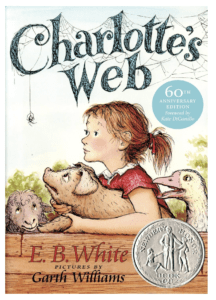
Buy on Amazon: https://www.amazon.com/Charlottes-Web-B-White/dp/0064400557
3. The Very Hungry Caterpillar
"The Very Hungry Caterpillar" is a bright gem in kid literature, and has been thrilling little readers for decades. This tale isn't only about a caterpillar's munching spree; it's a journey of learning and discovery. Picture this tiny, newly hatched caterpillar going on a yummy adventure, chomping everything from fruit to sweets. It's a blast of fun for kids, packed with teaching moments.
This classic story is full of lessons that begin with counting lessons, the caterpillar eats more treats every day - like one apple on Monday, and up to five oranges by Friday. Youngsters easily learn numbers and amounts. They even get caught on the days, building a smart sense of time and order.
But there's more than only counting. "The Very Hungry Caterpillar" pops open a window to nature's wonders. After pigging out, the caterpillar wraps himself up, only to emerge as a cute butterfly! This part gives kids a peek into the magic of change, sparking wonder about the world around them. The book itself is a treat, made for little hands, with pages begging to be turned and explored.
This collage of artwork is full of color and texture and jumps right off the page. It's a feast for the ones, who flip this book from a simple read to a full-on adventure.

Buy on Amazon: https://www.amazon.com/Very-Hungry-Caterpillar-Eric-Carle/dp/0399226907
4. Harry Potter and the Sorcerer's Stone
A young Harry Potter stuck in a boring life with his crummy relatives, the Dursleys. Suddenly, on his eleventh birthday, he finds out he's a wizard, a complete turnaround in his life.
Whisked to Hogwarts School of Witchcraft and Wizardry, Harry dives into a land full of magic, mystery, and adventure. Hogwarts is more than a place for cool spells and mythical creatures. Harry discovers the power of friendship, resilience, and the power of love. Partnering with cronies Hermione Granger and Ron Weasley, he undertakes copious challenges, each more gripping than the last.
This book is so creative and captivating that is appropriate for all ages over 6. A wizard theme is based on audacity, self-revelation, and, especially, the unending fight of good versus evil. However, the real magic of this book is that it influences kids to put faith in the fantastic, to dream immense, and to find their inner magic. It transforms readers into believers of wonders and dreamers of the insane.

Buy on Amazon: https://www.amazon.com/Harry-Potter-Sorcerers-Stone-Rowling/dp/059035342X.
5. Matilda
Spark the imagination of your little one with a tale of a gifted girl named Matilda Wormwood. This is a heartwarming tale of triumph and courage when faced with cruelty. Matilda possesses tremendous intelligence and special telekinetic power, utilizing books as an escape from her dull family and the tyrannical school headmistress, Miss Trunchbull.
As Matilda starts using her powers, she gains the courage to confront unfairness, saving her peers from Miss Trunchbull's bullying. Matilda's strength, compassion, and tenacity make her an inspirational character, motivating readers to challenge themselves and make a difference.
Children see their struggles reflected in Matilda's story, finding motivation in her ability to reshape her destiny.
The vibrant illustrations bring readers into an eccentric yet relatable world where integrity and intellect conquer cruelty. "Matilda" goes beyond being a children's book, honoring the bravery inherent in every child and enduring wisdom in the face of injustice with both grace and wisdom.

Buy on Amazon: https://www.amazon.com/Matilda-Roald-Dahl/dp/0142410373
6. The Cat in the Hat
The silly classic yet profound "The Cat in the Hat" has captivated young readers for decades. On a dull rainy day, two bored children meet the Cat, whose red-and-white-striped hat signals pending excitement. The mischievous Cat and his helpers proceed to turn the house into a circus. Amid escalating chaos, the children's pet fish serves as the voice of reason, but to little avail.
While the Cat's wild antics may seem random initially, Seuss weaves magic through his playful, made-up words, catchy rhymes, and rhythmic storytelling. This linguistic playfulness builds early literacy skills, expanding children's vocabulary. The tale underscores creativity's spark to turn a boring afternoon into a fantasy adventure. And despite the mess, the smiling Cat returns the order before whisking off to his next escapade.
"The Cat in the Hat" does more than chronicle a zany cat's pranks. It celebrates the power of imagination to transform the mundane into the extraordinary. It opens up a world of wonders and encourages an open mind and creativity. The lessons and experiences gained from reading books stay with young readers long after they have finished the final page. It's amazing how books can inspire and spark a child's imagination, encouraging them to explore and discover the world around them.

Buy on Amazon: https://www.amazon.com/Cat-Hat-Dr-Seuss/dp/039480001X
7. Goodnight Moon
One of my kids' favorites before going to bed was Goodnight Moon. This timeless bedtime story Goodnight Moon is about a bunny in a great green bedroom, bidding goodnight to familiar possessions as lights dim and darkness looms. The little bunny whispers goodnight to three bears sitting on chairs, toy kittens and mittens, and even a picture of the cow jumping over the moon – all classic childhood joys.
The power of this vivid tale springs with each turned page, and reads like a gentle lullaby, easing young minds into the peaceful realm of sleep. "Goodnight Moon" delivers a profound message. More than a bedtime story, it teaches oneness through love and gratitude. The little bunny embodies a consciousness connected to all things, great and small.

Buy on Amazon: https://www.amazon.com/Goodnight-Moon-Margaret-Wise-Brown/dp/0694003611
8. The Tale of Peter Rabbit
The Tale of Peter Rabbit is about a brave bunny with a taste for mischief. While ignoring his mother's caution, he runs into Mr. McGregor's garden, embarking on thrilling escapades, from nibbling on vegetables to evading the gardener's watchful eye. Peter captivates young hearts with his daring spirit and playful ways.
The exquisite watercolors used in this book draw young children into this enchanting tale. From the countryside scenes to the lush gardens, the artistry shines through leaving kids feeling that they are a part of Peter’s adventure. This book teaches kids about curiosity, the consequences of disobedience, and the impact of our actions. It captivates while imparting wisdom, making it a memorable lesson for kids.

Buy on Amazon: https://www.amazon.com/Tale-Peter-Rabbit-Beatrix-Potter/dp/0723247706
9. Anne of Green Gables
Anne of Green Gables celebrates the power of friendship, imagination's spark, and simple life’s joys. It urges embracing one's uniqueness and finding everyday wonders, encouraging timeless lessons for all.

Buy on Amazon: https://www.amazon.com/Anne-Green-Gables-L-Montgomery/dp/0486410250
10. The Lion, the Witch & the Wardrobe
This book takes readers through an adventurous journey of bravery, selflessness, and personal revelation. It celebrates the triumph of good over evil while highlighting the significance of faith and togetherness. This timeless tale enchants readers of every generation.

Buy on Amazon: https://www.amazon.com/Lion-Witch-Wardrobe-Book-Chronicles/dp/0064404994
The magical stories highlighted above have sparked young imaginations for decades. Whether escaping to Hogwarts School, joining Matilda's courageous crusade for justice, or whispering goodnight alongside a sleepy bunny, children have found truth, courage, and timeless life lessons within their pages.
These books don't just charm young readers. They shape lives – nurturing creativity, intellect, and morality that blossoms into adulthood. Their messages underscore empowerment, integrity, and our shared connection that binds humanity. Such visionary tales are more than children's stories. They are roadmaps to living rich, purposeful lives brimming with imagination and possibility.





Mommies Ultimate Guide to a Perfect Holiday Glow-Up!
Wondering how to get that perfect glow-up for the holidays? Take a minute to check out these simple yet effective makeup tips that are quick and easy to do while handling your hectic schedule and day-to-day activities with the little ones.
Holidays are meant to be special for everyone. Yet there's someone in the family who doesn't get to enjoy it as much as others. Yup, you got it right; I am talking about the 24-7 mommy on duty. Whether you are a working mom or a stay at home mom, finding time for yourself is a blessing.
While trying to manage everything from changing diapers to doing household chores or working in an office, we all compromise on caring for ourselves. Doing what we loved to do before having kids like putting on makeup, dressing up, or even spending time with yourself seems like a world away. So why not bring a change this holiday by taking time for that perfect holiday glow-up?
Time to take action! Dive into these tips and discover the ideal holiday glow-up you can't afford to miss!
L'OrealParis Makeup Infallible Full Wear Waterproof Matte Concealer
Being a mom and having dark circles and eye bags – are inseparable. So, get your hands on this masterpiece from L’Oreal Paris! It comes in 24 shades to help you pick the one that best matches your shade. Technically, you should get one shade lighter than your skin tone. Just a few swatches and bid farewell to those dark circles and uneven skin tone.
HUDA BEAUTY GloWish Multidew Vegan Skin Tint Foundation
One of my favorite products is HUDABEAUTY's GloWish Multidew Foundation! This amazing product creates flawless base layers for the further application of products. It comes in 15 shades, has a blendable application, and has a dewy finish.
This gives you beautiful lightweight coverage that gives you just enough color to wear every day too!
What sets it apart from other foundations are its skin-loving ingredients, like Damascus Rose Oil, ed Bell Pepper Extract, and Damascus Rose Oil. Simply put, this skin tint foundation is ideal for a natural makeup look for the mommy who doesn’t wear makeup or just wants a little umph.
SEPHORA COLLECTION Matte Perfection Lightweight Tinted Moisturizer
As in the name, SEPHORACOLLECTION Tinted Moisturizer is lightweight and has amazing coverage. It gives off a light, fragrance-free finish, covering dull spots and redness. Besides this, it locks in the moisturizer to give your skin that plump look.
PAINTLAB ALMOND PRESS ON NAILS
Nail art is getting immensely hyped these days. But how do we guys get into the trend when we don't have enough time to go to the nail salon, nor do our kids let us do that neat salon-finish nail art at home?
So, what’s the escape strategy? Get your hands on the fake nails from PaintLab. Each pack comes with 24 pieces with an Almond shape. Design variety is also tempting, as you can choose from 56 options. The best part? It comes with non-toxic nail glue, a wooden cuticle stick, and a dual-sided nail file and buffer. It’s easy and quick and your nails will look amazing!
Banana Boat Broad Spectrum Sunscreen Lotion
The most crucial component of every glow-up is a good sunscreen lotion. This weightless and ultra-breathable sunscreen absorbs all the excess oil and moisture when keeping the pores unclogged.
Besides that, it’s a water-based formula that is water-resistant and fast-absorbing. Last but not least, Banan Boat sunscreen is recommended by THE SKIN CANCER FOUNDATION for its excellent performance in protecting against the sun's harmful rays.
Dior Addict Transfer Proof Hydrating Lip Tint
Yes, it’s a splurge but…this lip tint range of Dior is an amalgamation of various shades ranging from bright highlights to soft finishes. I love the shade 771 Natural Berry. Overall, the tint texture is semi-matte with a natural and moisturized finish.
Other amazing shades include the 491 Natural Rosewood, 561 Natural Poppy, 251 Natural Peach, and 421 Natural Tea. If you love nude shades, go with the shade 251; if you are into natural finish, go with the shade 421 and more.
Chanel Le Crayon Yeux 01 Noir Black Eyeliner
Another splurge is this dual-head eyeliner, which has made the eye lining procedure a breeze with a pencil head on one side and a brush one on the other. Though it comes in seven different shades, it’s up to you whether you want to stick to the basics and try the Noir Black shade or just bring up some creativity with brownish, greyish, bluish, or greenish hues.
Saltair - Pink Beach Body Oil
Don’t forget the rest of your body! Saltair is a luxurious body oil that’s affordable and beautifully scented and absorbs quickly into the skin leaving well hydrated and smelling beautiful. Featuring natural ingredients, this effective body oil is ideal for mommies wanting to get that dewy, glowing skin during the holidays. Its notes of coconut, vanilla, and almond blossom offer a delightful experience of traveling to the island bliss. The best part? It suits all the skin types.
EltaMD UV Clear Tinted Face Sunscreen
EltaMD's tinted face sunscreen ensures protection for sensitive and acne-prone skin. Moreover, it’s lightweight, fragrance-free, and has no white cast. This tinted face sunscreen features Zinc Oxide that perfectly blends into the skin, offering coverage for sensitive, rosacea, and hyperpigmented face regions. Other sunscreens that are very popular and have a cult following are in the K-Beauty realm such as Beauty of Joseon and Numbuzin.
MAC Lip Pencil Whirl
Besides lip tints and balms, having a lip pencil should also be in every mom's makeup vanity. This masterpiece from MAC gives off a creamy, long-lasting, and softening effect. Line up your lips and fill them up with lip gloss for that iconic glam-up!
Key Tips for Fostering Skincare into Your Routine
Besides getting and using the abovementioned products, you should try to introduce skincare into your routine.
Keeping your skin hydrated is key to glowing skin. Exfoliate once a week or even 3 times a month. Put it on your calendar and stick to it.
Check your diet and try to avoid sugar or high-fat foods if you can help it. No doubt, you need to multitask, but simply eating a small bag of nuts, carrots, or apples that are individually packed can simply the sweet tooth cravings without the extra fat and calories.
Finally, SLEEP! Sleep deprivation can lead to a whole host of issues like impaired cognitive function, weakened immune system, mood swings, and increased risk of chronic health conditions.
The holidays can be stressful but doing one or two things to get that glow is doable. Managing skincare with all the rest of your duties might seem like an afterthought, but by using a simple tinted moisturizer, along with a little gloss and some mascara can help you look like the best version of yourself.
Lastly, enjoy the holidays with the ones you love, keep things simple, and glow it up! Happy Holidays!!!





Selecting a Pre-School: My Personal Journey Through the Anxiety and Excitement
When my husband and I started looking into preschools for our children, I'll admit it was pretty overwhelming at first. There were just so many options to consider—big schools, small schools, Montessori, Waldorf, religious-based, play-based, academic-focused, and the list went on. For a while there, I definitely experienced a fair share of anxiety around making the right choice for our child. But after doing loads of research, asking other parents relentless questions, and visiting what felt like a hundred schools, my fretfulness finally started to fade. I gained more clarity and confidence that we would find the perfect environment for our kids.

To make it more challenging was the fact that we moved to a new area. New neighbors, new schools, and new everything! However I gathered intel and I talked to all the parents in our life—friends, my husband’s coworkers, and family who seem to have an opinion on everything.
We asked if they were pleased with the preschool their kids went to and what they liked or disliked about the program. Their insights ended up being super helpful as we compiled a running list of schools to explore further.
We also did a ton of Googling about various preschool philosophies and approaches. I read article after article so I could understand the core differences between play-based versus academic-focused curriculums. I wanted to figure out which methodology aligned more with my own views on early childhood education. Simultaneously, I looked into student-teacher ratios at prospective schools. We learned that lower ratios are usually better for younger kids because it allows more individual attention.

In addition, we spent hours reading reviews on sites like GreatSchools.org to get feedback from fellow moms and dads. So many people take the time to rate schools and share candid pros and cons. It was invaluable to hear different parents' perspectives on how they truly felt about the preschool options in our area.

Schedule Classroom Tours to Get the Real Scoop
Once we narrowed it down to a shortlist of six promising preschools, it was time to schedule tours. Let me tell you, visiting the schools in person was absolutely essential. Until you actually step foot in the classrooms and get a vibe for the environment, it's impossible to know if a school is the right fit.
On our tours, we paid super close attention to how the classrooms were set up, the types of activities going on, how the teachers interacted with the kiddos, etc. We also watched the drop-off and pick-up process closely. Let's just say we witnessed a few chaotic scenes that definitely turned us off from a couple of contenders. One place was like a zoo at dismissal time. Red flag!
Beyond the standard tours, we decided to take it up a notch and observe a few of the classrooms for a longer stretch of time. With the school's permission, we hung out for an hour or two to watch the ebb and flow of daily activities. This gave us deeper insight into the routines, curriculum, and social dynamics. We got to see how teachers handled redirection and discipline. We also noticed which schools had kids who seemed genuinely engaged in learning.
Reflect on Your Child’s Unique Personality and Needs
While evaluating all these preschools, our numero uno priority was considering my kid's specific personality, learning style, and needs. My son was on the shyer side around strangers and a bit slow to warm up in new environments. For his temperament, we thought a smaller preschool classroom with lower student-teacher ratios would help him feel more comfortable.
My daughter on the other hand was very different. Because she was outgoing and energetic, we would look for preschools with more robust socialization opportunities. The right environment for one child may not be the same for another. As parents, we really tried to envision where our daughter would thrive based on her unique character traits.
Have In-Depth Conversations with Teachers and Directors
An important part of our vetting process involved scheduling meetings with directors and teachers at the schools we were seriously considering. We wanted to dig deeper into their educational philosophies and approaches. During these conversations, we asked about the teachers’ credentials, training, and years of experience working with preschoolers. After all, we wanted qualified teachers who were warm, patient, and nurturing.
We also asked lots of specific questions about curriculum, enrichment programs, diversity/inclusion efforts, transitions between activities, and how they partner with parents. I was really thorough and even had them explain how they handle discipline and challenging behaviors. My background in journalism and research helped me deeper and I left no stone unturned! The more we discussed, the better sense we got for whether a school’s values aligned with our own.
Trust Your Parental Instincts
Even after gathering all the factual information, touring facilities, and having in-depth conversations, I knew we still had to listen to our gut instincts. When it came time to make a decision, I thought a lot about which school just felt “right” based on the overall vibe. Where did I envision my kids being the safest and happiest in their early development? Which teachers made us feel most aligned in educational philosophy and priorities?
Of course, practical factors like tuition costs and location played a role too. But that inner voice, the feeling of “yes, this is the one!” was ultimately the driving factor behind our final preschool selection. As parents, I think we all have that innate sense of what environment would be the best fit for our child. So trust those parental instincts when making this big choice.
Accept That There's No Perfect Preschool
Going into this, I had to accept the reality that there's no one “perfect” preschool that would magically check every box on my wish list. The “right” school for our kids is what worked best for our family’s needs and budget in that moment. It’s not necessarily what every family would have chosen if they were in our shoes.

I had to let go of the notion that we would find some utopian preschool where literally everything about it was ideal. That simply doesn't exist in the real world. Instead, we focused on finding the environment that seemed like the best match for our kids needs and temperament at that particular time. And we also realized that as they grow and change, we can always switch programs if their needs shift. Selecting a preschool is just one phase of their long academic journey.
How I Handled My Anxieties as a First-Time Preschool Dad
My firstborn was my son and the first to attend a Montessori preschool. The first few days of school gave me separation anxiety. I knew it was totally normal to feel worried when entrusting your precious child to new teachers and environments. But here are a few things that helped me cope with those anxieties:
- Letting Go of Perfectionism – Once I accepted there’s no perfect preschool decision, it alleviated a lot of pressure I initially put on myself. I realized my son would thrive at whichever school we chose thoughtfully.
- Sharing My Concerns – I was open with the teachers about my worries. They really provided great reassurance about how the first few weeks would go.
- Talking to Other Parents – Learning that even experienced parents still get anxious sometimes made me feel less alone. Their stories of past preschool transitions were comforting.
- Focusing on the Kids Excitement – Instead of projecting my own nerves onto them, I tuned into their natural enthusiasm. Their excitement helped abate my needless worrying.
- Refocusing Positively – Rather than dread the change, I chose to view preschool as the start of an amazing educational journey..
- Staying Present on the First Days – My husband took some time off work when school started. Lingering at drop-off helped ensure a smooth transition until they acclimated. Once I saw them happily engaged with teachers and peers, my lingering worries subsided.

By managing my own anxieties, while also trusting the care and competence of wonderful teachers, the preschool transition ended up being very smooth. The kids loved their new school right from the start! It was clear we’d made the right choice for their development.
Managing the Preschool Anxiety Struggle Bus as a Parent
Even after finding a preschool, I felt good about it, I was still stressed over this big transition. Here are a few things that helped keep my sanity:
- Letting go of finding the mythical “ideal” school. No school is perfect.
- Tuning into the kids excitement rather than projecting my own nerves.
- Being honest with teachers about my concerns so they could reassure me.
- Venting to parent friends who empathized with my worries.
- Lingering a bit that first drop-off to ensure the kids acclimated okay before leaving.
- Reframing preschool is a wonderful step instead of something to dread.
Here are Top Tips for Surviving Preschool Selection:
| Advice | Details |
| Tour in-person | Observe classes, teachers, environments |
| Trust your gut | Choose what feels right for your child |
| Ask veteran parents | Gain perspective from experienced moms |
| Voice concerns | Teachers can provide reassurance |
| Focus on the joy | Your child's excitement eases worries |
The preschool years go so fast. Choosing that first school is a big milestone. But by managing my worries, touring programs thoughtfully, and trusting my parental instincts, I found an environment I truly felt good about. Now watching my kids blossom there and come home bursting with new knowledge and pride makes all that anxiety-ridden research so worth it. They thrived, and nothing beat seeing that post-school day smile light up their face.
My Final Thoughts on Selecting a Preschool Program
While choosing the first school was a big decision, I now see it as just one step in a long educational journey. No single preschool will irreversibly shape their future. What matters most is finding an environment that meets your child’s learning needs at this young age. The right school will lay that crucial foundation for academic and social-emotional growth.
My advice to other parents going through this process is to thoroughly research your options, visit programs in person, evaluate them through the lens of your child’s needs, and go with your gut instinct. Managing your own worries comes next so you can focus on the joys of this new milestone. And remember, the “right” preschool one year may be different the next. As your child evolves, you can always switch programs accordingly.
With thoughtful consideration, you'll choose a preschool where your son or daughter feels safe, nurtured, and excited to learn. That first school experience sets the tone for them to blossom into curious, confident lifelong learners. Enjoy this special time watching your little ones spread their wings in their new classroom environment. The preschool years truly fly by in a flash, so embrace this journey!
How to Start Saving For College
Best Savings Plans for College-Bound Kids
Deciding on how to pay for your child's higher education is a huge financial commitment that requires careful planning and budgeting. When my children were born, deciding on how to pay for their higher education seemed like a huge and overwhelming task.

The costs of college have risen exponentially over the years. According to research from the College Board, published tuition and fees at public 4-year colleges have increased a whopping 37% beyond inflation over the past decade alone! This rate of increase is simply unsustainable for most families like mine. Back when my kids were born in 1999 and 2013, we felt lost on how to even begin saving for their future college expenses. Quality online resources were sparse at the time, and I didn't have many family or friends who could provide advice from experience.
After asking around, I realized first that I needed to estimate the total costs involved. This included tuition, room and board, books, fees, travel, and other expenses. According to the College Board's figures, the national average published total for one year at an in-state public college was around $25,290 for the 2021-22 school year. A moderate estimate for a full four years at a public university could total between $100,000 and $120,000. While private colleges averaged higher at $54,880 per year, even public schools represented a huge financial commitment for my family.

Next, I discussed potential college funding options with my husband to determine how much we could contribute from his salary and savings versus how much kids might cover through financial aid, scholarships, jobs, and loans during school. After subtracting the estimated contribution, we determined a reasonable savings goal for our share of their anticipated costs.
From there, I developed a tailored college savings plan with the help of a financial advisor, and a timeline aimed at meeting that funding target. I used free online calculators to estimate how much we would need to save periodically, adjusting the figures for projected inflation and investment growth. For example, the calculator showed that putting away around $400 per month in their college fund from birth through age 18 could grow to almost $100,000, assuming a reasonable 6% average annual return over 18 years.
As they grew up, we continually fine-tuned our plan based on actual college cost of inflation, changes in their college ambitions, and fluctuations in the investment returns we were seeking. I tracked our progress rigorously in a spreadsheet to ensure we stayed on track. With focus and effort, I found college savings quite manageable through the years despite volatile markets and ever-rising tuition expenses. Here are some key strategies that worked well for our family:
Choose the Right College Savings Accounts
When first building my college savings plan for the kids, selecting the right accounts to maximize tax advantages and investment returns proved crucial. Here were some of my top options at the time:

529 College Savings Plans:
These state-sponsored plans offer unique tax perks ideal for that are for college savings. Our contributions grew tax-deferred over the years. Later, withdrawals for their college expenses came out tax-free.

While investment options were somewhat limited, target-date funds provided a hands-off approach to get more aggressive stock exposure when they were young, then automatically shifted to more conservative bonds as college approached.
Coverdell Education Savings Accounts:
While contribution limits were lower at just $2,000 annually, Coverdell ESAs (Education Saving Accounts) offered more flexibility to fund K-12 expenses. They worked well combined with the 529 Plan. The downside was income limits for making full contributions kicked in at around $95,000 for single filers and $190,000 for joint filers.
Custodial Accounts:
I also put some college money in UGMA (Uniform Gifts to Minors Act) and UTMA (Uniform Transfers to Minors Act) custodial accounts that offered more investment choices and flexibility on withdrawals. However, I knew any gains would be taxed at the kids' rate rather than my lower rate as with 529 plans. Also, the money was transferred irrevocably to their control at age 18 or 21.
Roth IRAs:
Though designed for retirement, Roth IRAs (Individual Retirement Accounts) allowed tax-free growth potential coupled with the ability to withdraw contributions tax-free for college if needed. I could also tap $10,000 in earnings tax-free for their qualified education expenses once my account was open for at least five years.
Savings Bonds, CDs, and Taxable Accounts:
I supplemented my 529, Coverdell, UGMA, and Roth accounts with Series I and EE savings bonds, certificates of deposit, and a regular taxable investment account. This diversification provided more options and flexibility.I worked with a financial advisor to incorporate a tailored mix of accounts into my family's overall financial plan. Spreading college contributions across different vehicles helped reduce risks and maximize returns.

Automate Regular Contributions
Once I developed a reasonable college savings budget and timeline, I automated recurring monthly transfers from my bank account into the kids' 529 plan. Online bill pay made this easy to set up. I also had 529 contributions automatically invested through the plan's recurring purchase option.
Any time my husband received a bonus or raise at work, he immediately directed a portion of it to the kids' accounts. Birthday gifts went straight to their college fund, too.
Automating my savings habits took the manual work and decision-making out of the process. I could put college investments on autopilot and let the compound growth work its magic over 18 years.
Invest Aggressively With Stocks When Your Child Is Young
To generate high returns in the kids’ college accounts during the early years, I invested heavily in stock index funds with broad exposure across the entire market. An index fund is a type of mutual fund or exchange-traded fund (ETF) that aims to replicate the performance of a specific market index. Historically, stocks have returned around 10% annually over long periods compared to 2% or less for conservative options like cash and bonds.

I remained diversified across U.S. and international markets to reduce volatility. I also chose low-fee total market index funds and target date funds to minimize expenses.
By maintaining a high stock allocation when the kids were very young, I gave the money over a decade to ride out market swings before college. I resisted trying to time trades and instead stayed committed through ups and downs. While past returns don't guarantee future performance, stocks' long-term upward trajectory created substantial college savings for our family.
Add Extra Contributions Whenever Possible
In addition to my automatic monthly college savings deposits, I looked for ways to make extra lump-sum additions whenever possible:

Birthday and holiday money gifts went straight into college accounts.
● We saved all or a portion of monetary gifts from family members as well.
● I cut discretionary spending temporarily when possible to put any surplus funds toward their education.
● My parents contributed to the kids’ 529 plan for gifting events like birthdays and Christmas.
● Windfalls like tax refunds and insurance claim checks provided great opportunities for one-time college account boosts.
● During particularly bountiful years, we made extra year-end 529 contributions for the tax deduction in that state.
Regularly contributing even small, affordable amounts consistently adds up over 18 years. But taking advantage of chances to make periodic large deposits can really supercharge college savings.
Give College Savings Gift Contributions
Encouraging family and friends to gift college savings for birthdays and holidays provided boosts to their fund over the years:
● We requested 529 plan contributions instead of toys or other traditional presents. Many plans now offer easy online gifting options.
● Confirmation, bat mitzvahs, graduations, and other gift-giving events brought influxes to their college fund rather than short-lived material items.
● We gave the kids toys and experiences when they were young then but shifted to long-term college savings gifts as they reached their teen years.
● Some relatives bought EE and I savings bonds as gifts that can be used tax-free later for college expenses.
● We made 529 plan donations to charities in their names for a few larger tax-deductible gifts from grandparents.
Getting the family involved in teaching them about college costs early made them appreciate the contributions even more. And over time, the deposits added up nicely.
Apply for Scholarships to Reduce Out-of-Pocket Costs
While my husband and I planned to fund a significant portion of their education, scholarships provide vital aid that reduces

reliance on savings and loans. Starting freshman year, I had them apply to numerous legitimate scholarship sources using free search tools and databases.
We focused their applications on academic, leadership, community service, athletic, cultural, and other awards fitting their skills and experiences. I made sure they spent time on essays highlighting their passions and accomplishments. We also researched opportunities from community groups, foundations, professional associations, religious organizations, local businesses, clubs, colleges, and state/federal programs.
The effort paid off with two academic scholarships. Both kids worked hard to maintain grades and extracurriculars to keep qualifying. The financial assistance allowed us to preserve more college savings for graduate school.
Have Your Child Contribute Financially
While parents often pay a significant portion, getting children involved financially teaches responsibility. Here's how they contributed:

In elementary school, both kids put some monetary gifts and allowance into a savings account. We showed her the statements and compound interest over time.
● By middle school, they saved larger percentages of gift money, allowance, and earnings from chores, babysitting, and other work.
● In high school, they increased their savings habits even more with their part-time job income. We discussed budgeting, loans, the FAFSA, and more to make them informed consumers.
● They researched scholarship opportunities themselves and wrote applications each year.
● During college, they worked on campus 10 hours a week to help cover personal expenses and books.
Starting early with small contributions yielded big ownership and pride when they eventually left for college.
Understand Financial Aid Opportunities Thoroughly
Given college costs today, most families depend on financial aid. We made sure to learn about all available options:
● We submitted the FAFSA (Free Application For Federal Student Aid) starting October 1 of their senior year to qualify for federal, state, and college need-based aid programs.
● After getting their calculated expected family contribution from the FAFSA, I used net price calculators at target schools to estimate potential aid packages.
● Once acceptance letters arrived, we carefully compared likely out-of-pocket costs at each school based on the offered financial aid award packages. These outlined grants, loans, work-study allotments, and other assistance.
● I learned the critical differences between free aid like scholarships/grants vs. loans that must be repaid with interest. We were conservative borrowing.
● When a top-choice college offered inadequate aid, we successfully appealed for more based on our unique circumstances and financial restraints.
● They also leveraged competitive offers from comparable schools to negotiate additional scholarships.
Submitting the FAFSA and becoming educated on the financial aid process opened doors to making their dream colleges affordable.
Seriously Consider Community College as a Cost-Saver
Given substantially lower tuition costs, doing the first two years at our local community college before transferring to a 4-year university drastically reduced total spending on their bachelor's degree. Here were the benefits:
● They completed all general education courses and introductory math/science requirements at about 35% less cost compared to starting directly at a public university.
● They maintained strong grades with honors courses and scholarships at community college. The transfer credits applied seamlessly.
● Living at home and commuting for the first two years avoided expensive room and board bills.
● Our community college has a transfer agreement guaranteeing admission to the nearby state university. So their path was simple if they earned her associate degree.
● Careful planning and course selection ensured that they graduated on time after transferring. They will earn their bachelor's degree in just four years.
Starting at community college provided incredible value without compromising academics or time to completion.
Choose In-State Public Colleges and Universities
For huge cost savings over private institutions, the kids applied exclusively to in-state public schools. In 2021-22, average published tuition and fees were $10,740 for in-state public college students compared to $38,070 at private non-profits per the College Board - over three and a half times more!
With abundant public college options across our state, they found high-quality programs at a fraction of private pricing. And they received the public tuition rate through reciprocity at schools in nearby states as well. Avoiding the most expensive flagship colleges within our state system opened up affordable alternatives, too.
Sticking with in-state public institutions saved our family tens of thousands of dollars over the less feasible private university experience. We have no regrets.
Help Your Child Graduate On Time
Completing college in four years kept their costs contained. Here are some tips that helped them stay on track:
● They took honors and AP courses in high school to enter college, ready for freshmen-level classes. No expensive catch-up is needed.
● They researched programs and enrolled directly into their likely major. Switching paths adds unnecessary tuition and time costs.
● They planned course schedules without conflicts and completed all general education requirements efficiently in two years.
● They each took 15-18 credits per semester to stay on pace and considered summer classes when needed to get ahead.
● They mapped out the required courses semester-by-semester to graduate on time. Their advisor assisted with planning.
● They registered and secured housing promptly to avoid losing classes or delays. They also utilized campus tutoring support to excel in difficult courses.
Through proactive planning, diligent studying, and avoiding unnecessary changes, They graduated on time.

Always Have Backup College Plans
Despite best efforts, college plans can change. We prepared backup options:
● My kids applied to a mix of flagship, secondary state, and private institutions and then compared aid offers to identify the most affordable choices for our budget.
● Starting at community college first provides an automatic cost-saving transfer path if 4-year college expenses grow beyond reach.
● Taking a gap year to work and save more was a possibility if needed since some colleges allow deferring enrollment.
● If grades suffered, going to community college and transferring remained an alternative and more affordable pathway to a bachelor's degree.
● For students uncertain whether college is the right fit, vocational training offers skilled career options at a fraction of the time and tuition costs.
● Military academies like West Point or ROTC (Reserve Officers' Training Corps) programs provide full-ride college funding in return for service commitments after graduation.
Staying flexible and having backup options can prove invaluable if college plans need revising. Consider "Plan B" scenarios.
Despite rapidly inflating college costs, with strategic planning, dedicated saving, smart investing, scholarships, financial aid, family support, cost controls, and innate flexibility, funding a child's education remains very feasible for most families.
Through consistent effort and adaptation over the years, we successfully covered our children’s college costs in their entirety. Their future looked bright without the burden of excessive debt. Our family's sacrifices paved that path. If we can do it, you can, too, with determination, patience, and using available resources wisely. Stay positive, prepare for challenges, and take pride in giving your child the incredible gift of higher education.
Fang-tastic Family Fright Fest: Budget-Friendly Halloween Fun with Costumes, Games, and Spooky Delights!"
Don't Get Haunted this Holiday Season with Inflation... Unravel Budget-Friendly Halloween Costumes, Games, and Fun!
Halloween is right around the corner, and now it's time to start thinking about what you're going to be. Putting family outfits together can seem like a big task that you don't have room in your budget for, but this doesn't mean that boring not-so-remembered costumes are necessary either. With just some creativity and smart shopping skills, families can save money without sacrificing at all on fun for Halloween.
Here are 10 ways:
Shop Local Thrift Stores
One of the best ways to save money on Halloween costumes is by going to your local thrift store first before you go. Spend some time brainstorming costume ideas and be open-minded about what they could become. Take time to methodically search through the racks of clothes and accessories--inspiration can strike at any moment of browsing. Look for items that you can repurpose or combine in a whole new way to create something memorable. You might also find just the rack full of pre-owned Halloween costumes that someone else just didn’t want.
Organize a Costume Swap
You might also consider setting up a costume swap with friends, family, and neighbors. National Costume Swap Day is scheduled to be the second Saturday in October of every year – it’s a great way for everyone to get together. The rule is that each person must come prepared with a Halloween costume he or she is willing to pass out or lend another – all can tap into looks without spending one dime.
Some of the links in this article are affiliate links in which I may make a small commission if purchased.
Purchase Used Costumes Online
Another great option is to purchase gently worn costumes online. Many people wear their Halloween costumes once and then place them up for sale on an online marketplace afterward. These costumes are often in excellent condition at a fraction of the retail price costs. Take some time to search through your favorite online marketplace for that perfect costume.
Dig Into Your Own Closet
You will be surprised to know that a lot of the things you already own hanging up in your own closet can easily become turned into clever Halloween costumes. Look through your sportswear, uniforms, and even vintage clothing – or even old costumes for inspiration. With some amount of creativity, these materials can also quickly turn into unique yet budget-friendly costumes.
Go Crafty with DIY Costumes
Halloween is the perfect time for a do-it-yourself project. If you are handy with a needle, thread, scissors, or even a glue gun you can build an original costume in no time at all. Choose your idea first and then hunt down fabrics from your own home or locally from fabric stores and craft shops to create what’s sure to be a one-of-a-kind costume that only you will have.
Look for Codes
Look out for codes often offered from pop-up shops on Halloween, which are predominantly online stores with a single-time discount offer to those who sign up for their mailing list. Thus the use of code may save up to 20% on the original costume price.
Visit Members-Only Online Shopping Clubs and Shops
Become a member of any local shop that gives an exclusive selection of costumes at reasonable prices. Most members-only shopping clubs have several varieties of all ages' costumes priced fairly hence making it ideal for families too.
Sell Last Year's Costumes
If you're ready to retire last year's Halloween costumes, consider selling them online for some extra cash. Selling your old costumes allows you to raise the money needed for a new costume this year while creating more space in your closet or storage area.
Cash in your Rewards
If you’ve got store loyalty points or credit card rewards to burn, why not use those toward the cost of a new costume? Look at your balance and see if some of it can’t be used to cover the price of your Halloween ensemble. This way, you’ll save even more money while making the most out of what was coming to you anyway.
Buy Next Year's Costume Ahead of Time
People who like planning ahead can really save on next year's costume by shopping the post-Halloween sales. Stores need to get their seasonal goods off the shelves as quickly as possible, so they will often discount Halloween costumes anywhere from 50% -75%. Stock up on those future Halloweens!
By using these 10 money-saving tips, you can have one super fun Halloween without spending a lot of cash. Make sure to stay creative, think outside the box, and just have fun with your costume selections. Halloween is supposed to be all about having a good time and saving on costumes lets you enjoy it even more.
Halloween Party Ideas and Games for Kids
Halloween is an exciting time of the year when kids eagerly anticipate dressing up in costumes, going trick-or-treating, and indulging in sweet treats. Organizing a Halloween party for kids as a parent or party host is a fantastic way to celebrate this spooky holiday. In this article, we will provide you with 25 haunted Halloween party ideas and games that will ensure a frighteningly fun time for all the little ghouls and goblins in your life.
How to Throw a Kid-Friendly Halloween Party
Before you begin planning your kid-friendly Halloween party, it's important to consider the age of the children you'll be hosting. When organizing a party for younger children, it's best to keep the scare factor to a minimum. Strike a balance between exciting and spooky Halloween fun to create an enjoyable experience for everyone involved. Here are some tips to help you throw a successful Halloween party for kids:
- Choose age-appropriate activities: Opt for games and activities that are suitable for the age group you're hosting. Consider playing Halloween-themed charades, organizing a costume contest, or setting up a scavenger hunt.
- Encourage non-scary costumes: Instead of focusing on frightening costumes, encourage kids to dress up in non-scary outfits such as superheroes, animals, or their favorite characters. This will help create a more lighthearted and fun atmosphere.
- Consider the time and duration: Take into account the age of your guests when deciding on the time of day to throw your party and how long it should last. Avoid scheduling it too close to naptime or bedtime and keep the duration appropriate for the age group.
Once you have determined the right balance of spookiness for your Halloween bash, it's time to move on to decorations, treats, entertainment, and invitations that match the theme.
Decorating Your Kid-Friendly Halloween Party
Creating a festive and inviting atmosphere is essential for a successful Halloween party. Decorations can set the tone and make the event more enjoyable for kids. Whether you opt for classic decor or a specific theme, here are some ideas to get you started
Yard Decor
Start by creating an inviting entrance to your home with yard decor that sets the mood for your Halloween party. Here are a few ideas:
- Harvest decor: Use pumpkins and bales of hay to create a festive fall atmosphere. Add a friendly scarecrow at the entrance to welcome your guests.
- Haunted mansion decor: Place fake tombstones and skeleton hands in your front yard to create a spooky haunted house vibe.
- Slightly spooky decor: Hang cobwebs, purple string lights, and bats or ghosts from the trees for a touch of spookiness without overwhelming the younger guests.
Classic Decor
If you prefer a more traditional Halloween party, incorporate classic decor elements. Here are some items you can consider:
- Happy Halloween fringe garland
- Bat balloons
- Honeycomb balls in orange and black
- Plastic spiders
- Stretchy cobwebs
- Posable skeletons
- Black cauldrons
- Pumpkin string lights
- Halloween window clings
Themed Decor
To make your Halloween party more interactive and engaging, consider choosing a specific theme. Here are a few ideas to inspire your themed decor:
- Haunted House: Hang ghost decor from the ceiling and place posable skeletons in humorous poses. Dress the skeletons in silly Halloween costumes or place them in funny positions to add a touch of humor.
- Monster Mash: Decorate your space with cut-outs of classic monsters like Frankenstein's monster, Dracula, mummies, or werewolves. Add giant spider balloons to create a lively and vibrant atmosphere.
- Mad Scientist: Transform your space into a laboratory with beakers, test tubes filled with colorful liquids, and neon green slime. Dress up as a mad scientist and add a creepy eyeball garland for an extra eerie effect.
- DIY Decor: Get creative and involve your kids by making your own Halloween decorations. Decorate pumpkins using paint, googly eyes, gems, and glitter. Carve jack-o'-lanterns and roast the pumpkin seeds for a delicious post-carving snack. Create a bat garland using black construction paper, string, and tiny clothespins.
Remember, the key to successful Halloween decor is to strike the right balance between spooky and fun, catering to the age group of your guests.
Tasty Treats to Serve at Your Halloween Party
No Halloween party is complete without delicious treats that capture the essence of the holiday. While it's fun to indulge in sweets, it's also essential to provide some healthier options and consider any potential food allergies. Here are some ideas for Halloween party treats that kids will love:
- Frightening Foods: Use cookie cutters to transform sandwiches into Halloween-themed shapes such as bats, ghosts, or witch hats. Make mummy pizza bites by covering mini bagels or English muffins with pizza sauce, mozzarella strips, and olive "eyes" for a mummified look.
- Terrifying Treats: Alongside the classic candy corn and fun-size candy bars, serve unique Halloween-themed treats such as spider cookies made with Oreos, pretzel sticks, and M&M eyes. Make puffed rice pumpkins by adding orange gel food coloring to melted marshmallow mix and shaping them into spheres.
- Witch Finger Cookies: For a spooky twist on sugar cookies, add green food coloring to your sugar cookie mix and shape the dough into "fingers." Place an almond sliver at the tip of a fingernail and create creases along the cookie to resemble knuckles. Add strawberry jam along the edges for an eerie effect.
Remember to provide a mix of sweet and savory treats to cater to different preferences and dietary restrictions.
Halloween Party Games for Kids
Games are a fantastic way to keep kids entertained and engaged during a Halloween party. Incorporate these Halloween-themed games to add excitement and create lasting memories:
- Bobbing for Apples: This classic game is always a hit. Challenge kids to grab apples using plastic skeleton bones instead of their mouths for a more sanitary twist. You can even draw scary faces on the apples or replace them with fun-size candy bars.
- Mini Masquerade: Encourage guests to wear costumes that include masks and host a mini masquerade. Let the kids vote for the best costume and crown the winner as the best masquerader. Adults can join in on the fun too!
- Kiddo-Sized Maze: Set up a kiddo-sized corn maze using bales of hay instead of cornstalks. Stack them to adjust the maze's height to suit the age group of your guests.
- Mummy Race: Wrap guests' legs in white tissue or toilet paper and have them race toward a finish line without ripping the paper. This game is bound to create laughter and excitement.
- Mystery Box: Cut holes into cardboard boxes and challenge kids to guess what's hidden inside by touch alone. Fill the boxes with items like peeled grapes, cooked spaghetti, mashed banana, baby carrots, and Jell-O for a spooky surprise.
- Pin the Tail on the Black Cat: Put a Halloween spin on the classic "pin the tail" game by using a black cat as the target. Kids can take turns trying to pin the tail on the cat while blindfolded.
- Zombie Musical Chairs: Have kids walk like zombies as they play musical chairs. The last one to find a seat is out, adding a Halloween twist to this classic game.
- Pumpkin Sweep: Divide kids into teams and have them use brooms to sweep their team's pumpkin across the finish line. This activity is both challenging and fun.
- Pumpkin Bean Bag Toss: Line up carved jack-o'-lanterns on the lawn and challenge kids to toss bean bags into their open mouths. This game is sure to bring out the competitive spirit.
Remember to adapt the games to suit the age group and preferences of your guests for maximum enjoyment.
Halloween Party Activities
In addition to games, incorporating other activities into your Halloween party can add extra excitement and keep kids engaged. Here are some activity ideas to make your party even more memorable:
- Host a Magic Show: Hire a magician to perform a magic show for the kids. The interactive nature of magic shows will captivate and entertain guests of all ages.
- Do the Monster Mash: Get all the little monsters moving with a haunted Halloween dance party. Play popular Halloween songs like "Monster Mash," "This Is Halloween," "Ghostbusters," and the Addams Family theme song.
- Go Trunk-or-Treating: Organize a trunk-or-treat event in a school parking lot or community area. Parents can decorate their car trunks with Halloween decor, and kids can go from car to car, collecting treats in a safe and controlled environment.
- Show and Tell: Encourage kids to show off their costumes and share why they chose them. They can also present a favorite Halloween item, such as a toy, costume prop, or scary book or movie.
- Kid-Friendly Spooky Movie: Wind down the night with a family-friendly Halloween movie. Some popular choices include "Frankenweenie," "Hotel Transylvania," "The Nightmare Before Christmas," and "The Addams Family." Serve themed treats and provide party favors for an extra touch.
- Spooky Storytime: Hire a storyteller to recite Halloween tales with silly voices. Choose age-appropriate books like "It's the Great Pumpkin, Charlie Brown" or "Room on the Broom" for younger kids and slightly scarier options like "The Little Old Lady Who Was Not Afraid of Anything" or "Ghosts!: Ghostly Tales from Folklore" for older children.
- Halloween Costume Parade: Organize a costume parade where kids can show off their outfits while grooving to spooky tunes. This activity provides an opportunity for parents to take memorable photos and for kids to feel proud of their costumes.
- Make Your Own Slime: If your kids and their friends enjoy DIY projects, set up a slime-making workshop. Provide different colors and textures for them to create their own spooky slime. They can take their creations home as party favors.
These activities will ensure that the Halloween party is filled with fun and excitement from start to finish.
With these Halloween party ideas and games for kids, you're ready to throw a frighteningly fun and memorable event. From decorating your space to serving tasty treats, organizing entertaining games and activities, and sending out themed invitations, every aspect of your party will contribute to a beautiful celebration. So get creative, embrace the Halloween spirit, and enjoy a spooktacular time with your little ghouls and goblins!
A Lifestyle Guide for Stay-at-Home Moms - How to Feel Productive in Your Own Home

Do you ever feel like a hamster on an endless wheel, spinning tirelessly but never quite getting anywhere? Are you a stay-at-home mom constantly on the go, struggling to accomplish house chores while tending to your children? Do you long for some moments of peace and guilt-free productivity? If so, you’re not alone!
Some links below are affiliate links in which I may receive a small commission
Here in this lifestyle guide, we will provide tips on how to structure your time wisely, set realistic goals (and actually stick to them!), and maintain balance while setting up systems that will make running errands or taking care of household chores easy as 1,2,3!
Put aside those days of feeling less than productive - being a hardworking stay-at-home mom doesn't have to be daunting; in fact - it can really just be fun!
What it Means to Be a Stay-at-Home Mom

No matter how difficult the job may be, there is nothing quite like being a stay-at-home mom. The sacrifices come with an unparalleled reward that extends beyond just our family life. Our children grow up learning valuable lessons from the love and dedication of their parents, while their moms and dads often discover unsuspected talents, hobbies, and pleasurable accomplishments hidden in the mess that usually comes with taking care of a household.
To all stay-at-home moms out there, whatever hardships you are currently facing, know that you are doing a courageous job, and you deserve recognition for it. So, take some time for yourself today before this tough mothering gig has you tied to your kids’ schedule 24/7; pick up hobbies and activities that fill your heart with joy, and pamper yourself every now and then – you deserve it!
Lastly, remember: maintaining healthy boundaries between caring for your children and having ‘me’ time will always ensure top parenting performance - you got this!
Strategies to Feel Productive
Set Goals and Prioritize
As a stay-at-home mom, it is essential to be organized and plan ahead to pursue your goals. Utilizing goal-setting techniques can help prioritize activities in order to get the most important things done first. It can also help break large tasks into manageable pieces, creating smaller wins throughout the day, which can have a positive effect on one’s overall well-being.
For example, if you want to start working out more, schedule realistic times that you can dedicate to exercise and incorporate walking as well as simple stretching into your daily routine. By breaking larger tasks into small, achievable steps, you are increasing the likelihood of following through. When life inevitably throws curveballs, it is important to keep yourself organized and create breathing room in case of emergencies.
Ultimately, setting goals and prioritizing is beneficial so that you remain productive throughout the day instead of feeling overwhelmed and stressed out from a lack of organization.
Create a Productive Environment
A productive environment is key to feeling productive as a mom who may stay at home. Although it can be hard to juggle taking care of the house and doing everyday tasks, with a few simple changes, you can create an environment that is predictable and leaves plenty of time for moments of joy.
Instilling habits such as having:
● An organized kitchen counter
● A calendar-based schedule
● Regular cleaning visits can help maximize productivity.
The organization helps save time on mundane tasks, which in turn gives you more time for self-care, fun activities, or creative projects—all of which restore energy and enthusiasm. So don’t wait another day – start ditching the overwhelm and find your stride among the chaos today.
Curl up with that book you’ve had on your nightstand for weeks, or give yourself a chance for some well-deserved me time uninterrupted by the demands of daily life. After all, it doesn’t take much to make sure these small things become big wins in so many ways.
Yoga

Yoga with your comfy yoga apparel is an incredibly relaxing activity and one that helps moms who work at home to feel productive. For example, after folding laundry and picking up around the house, putting on your cozy pants and a tank top for yoga can really brighten up your day. Through the practice of yoga, you can make relaxation a priority and recognize the small successes throughout the day.
Overall, make sure to take time for yourself during your day off or before you go to bed in order to take care of your body as well as your mind. Try incorporating yoga into your routine and give yourself time to practice—you won’t regret it! If you're able to find some kind of regular balance amongst all of what life throws at you, then treat yourself by getting those special yoga clothes you would normally indulge in for a much-needed break from everyday duties.
You won’t be disappointed with how relaxed you feel and the surge of productivity you get for each task. So why not have fun doing something productive? Grab some stylish yet comforting outfits for when you practice Yoga, and enjoy every minute while feeling like royalty!
Healthy Eating Habits
Eating healthy doesn’t have to be a chore or a big task – it can actually be lightweight and delicious! In order for moms who stay at home to become more productive, they have to make sure that their diets are wholesome and nutritious. Each mom has to meet her own body’s needs with meals that are realistic, affordable, and that can be put together with convenience.
For example, if you’re a stay-at-home mom with a young child who has a busy schedule of activities, simple recipes like grilled chicken and veggies can give you the fuel you need for the day. If you don’t want your diet to impede your productivity as a mom who stays at home, get creative in the kitchen: experiment with flavors and try new recipes; this way, you won’t feel trapped by traditional meal ideas.
Reach Out and Ask For Help
For stay at home moms, reaching out for help can be a daunting task. With the pressure to do everything themselves and be the perfect mom, many can feel guilty or ashamed to ask for help. However, it is important to remember that reaching out is not a sign of weakness, but rather a strength.. Here are a few examples:
● Making a Facebook Page for the Mom’s in Your Community:
Creating a Facebook page for the moms in your community to get help with groceries can be a game-changer. Simply by setting up a private group and inviting other moms in the area to join, you can create an incredible support system for parents who are finding it hard to keep up with the demands of daily life.
From sharing tips on where to find the best deals, to coordinating grocery runs, this Facebook page can be a lifesaver for so many. Plus, by helping others, you'll feel a sense of satisfaction and pride in knowing that you're making a difference in your community.
● Getting a Carpool Schedule With Other Moms:
Getting a carpool schedule with other moms can help you feel productive and even provide some much-needed respite. Organizing a carpool schedule can be as simple as reaching out to your network of moms in your community or at your children's school.
Carpooling fosters human connections and can be an opportunity to build relationships with other moms who understand the challenges of motherhood. A carpool schedule can be a game-changer for stay-at-home moms who want to maximize their productivity while still being present for their children.
● Developing Friendships With Other Moms:
Being a stay-at-home mom can sometimes it can feel like you're stuck in a rut doing the same things over and over again, day after day. That is why joining the Parent-Teacher Association (PTA) at your child's school can be a game-changer.
It's a great way to get out of the house, meet new people, and make new friends, all while accomplishing something productive for your children and their school. Plus, it's a great opportunity to learn about what your child is learning in school and contribute to their education.
Balance Personal and Parental Responsibilities
The importance of balancing your personal and parental responsibilities in order to feel productive as a mom who stays at home cannot be understated. From getting your daily exercise to carving out time just for yourself on a regular basis, it’s possible to make small tweaks to achieve big results.
For instance, one stay-at-home mom made it a priority to catch up with her friends every month. Another gave herself 15 minutes each day for yoga and meditation. And both felt much happier and more accomplished by blending their life roles in this manner. So why not take action today? Make sure you stand firm on the responsibilities that are important to you so that you can lead a fulfilled life while raising your children – it really is achievable! And remember: if anything gets too overwhelming, don’t be afraid to call upon family members or friends for some extra help if needed.
So, use this guide as your foundation and take advantage of all the helpful advice embedded within. And remember, being a stay-at-home mother can be extremely rewarding – try setting obtainable goals, and enjoy the happiness that comes from seeing those targets reached!
With a snapshot of the organization in place, you’ll find it much easier to not only take care of yourself but your family too - giving you more opportunity to relax and really embrace the moment. Staying positive, aspirational, and content can help moms everywhere look forward to the future with optimism.
Pick up some fresh ideas here as we embark on this journey together; trials will surely come, but know that there are resources here readily available for success in overcoming them!
Unpacking 'Mom’s Mental Load': Strategies for Better Balance and Well-Being

It’s something that many of us are familiar with—the feeling that, for busy families and households, the mental load often falls to one parent. It can leave them feeling overwhelmed and exhausted as they try to juggle home life alongside work obligations. With ‘mom’s mental load’ taking on so much responsibility, it is crucial that strategies are put in place for better balance and well-being.
In this blog post, we will be exploring how families can unpack mom’s mental load through communication tactics, discovering where responsibilities should lie, true collaboration efforts between partners, and providing tangible tips for making the journey easier. So let’s get started!
Being a Balanced Mother

It’s a familiar scenario: you’re running errands like driving from store to store, picking up the groceries, dropping off kids to swim classes, etc.. Everyone else remembers what they need from you, but as you make every effort to accomplish the daily tasks is not only physically draining, but mentally overwhelming. But through it all, moms plow through and make sure that the little ones get their favorite snacks and make it on time to their activities.
As much as moms try to stay on top of it all - shopping lists, school events, birthday parties, doctor's appointments – the feeling of being swamped never entirely leaves you. Like it or not, many mothers are carrying “Mom’s Mental Load": all the invisible tasks that occupy our minds every day!
Some links below are affiliate links in which I may receive a small commission
The idea of being a ‘balanced mother’ can be intimidating: images of someone juggling everything at once while looking perfectly fine runs through our minds. But that’s not really what it means to be a balanced mother – it doesn’t mean you always get everything done all the time with ease; instead, it is about understanding your own needs and learning how to meet them without sacrificing those of your family.
Being a balanced mother is a life-long process that requires both dedication, time and effort. Juggling multiple tasks, especially when caring for home and family, entails continued effort and determination. The notion that moms can accomplish it all – this is true even if you don’t have the same resources as other mothers.
Whether you are an at-home mom or one who works outside the home, creating balance in your life will require flexible organization skills and daily mindfulness to prioritize yourself - can be a way to fight off the guilt mothers feel for making some time to do what they need to do for themselves. Getting nails done, coloring hair, or just relaxing in at home without any distractions, can make a positive difference as well as recharge your mindset.
Breeding Negative Feelings as an Overwhelmed Mother

Being a stay-at-home mother is both an emotionally and physically demanding job, between the all-day childcare duties, meticulous housekeeping tasks, and adjusting to the new way of life. All this responsibility builds up and often leaves mothers feeling unaccomplished and defeated.
Breeding negative feelings as an overwhelmed mother is far more widespread than many realize. While mothers are expected to juggle their role as caretakers with job responsibilities and other obligations simultaneously, it's vital that they take time for themselves to find balance, whether that is reading a good book or just relaxing with friends.
Strategies for Better Balance
Create a System
Developing a system is an essential strategy that overwhelmed mothers should implement to create balance in life. From time-saving meal delivery services and grocery store hacks to utilizing online reminders for busy mom tasks, the possibilities are truly endless. With these strategies, mothers can save time from mundane tasks and embrace more quality moments with their children.
As overwhelmed mothers look to reduce stress and increase fulfillment in life, systems provide steadfast support on this journey of motherhood.
Delegate Tasks and Ask For Help

Delegating tasks and asking for help is essential for any mother who is struggling with balance. By taking the small steps of delegating simple tasks such as washing dishes or grocery shopping, mothers can become more organized and also take some time for themselves.
When a task becomes heavy or overwhelming, it’s essential to acknowledge that help may be needed. Being honest about needing support allows us to take the necessary steps towards reducing stress and gaining energy. In the end, having support in our lives enhances our existence in multiple ways.
Asking for help encourages gratitude and appreciation for both those providing assistance as well as ourselves. It releases frustration, which breeds negative emotions. It gives us the rest we require to understand ourselves better, our boundaries, and how to be stronger individuals in order to find success beyond parenthood.
Therefore, it is highly recommended that mothers delegate tasks in order to get a break from their everyday routines and ask for help when feeling overwhelmed in order to manage their emotions and have a better life balance.
Create a Shared Calendar With Your Spouse
A shared calendar is a fantastic strategy for overwhelmed moms wanting to gain back balance in their lives. Being intentional with our time and energy, eliminating distractions from the outside world, trusting steady progress instead of perfection, and creating a strong support system within our relationships to build self-confidence are all vital components for success.
It can be hard to keep track of it all, but having a shared calendar helps us stay on task with our goals with clarity and organization. We should never feel like we have to do this alone; family and friends are here for us if ever asked! Creating a shared calendar with your spouse can be challenging in the beginning, but it will really pay off in terms of increased harmony in the home over time.
Write it All Down

Our lives roles as mothers is rewarding yet challenging. Creating a journal and writing it all down is a fantastic strategy that stay-at-home moms can use. Whether it’s jotting down simple affirmations or making a list of five things you’re grateful for each night, committing your thoughts and emotions onto paper can help promote better balance in your life.
Taking just a few minutes to reflect on how you're feeling allows you to not only process your feelings but also direct them in a way that helps you stay positive throughout the day. By employing this writing strategy, you have the opportunity to make conscious decisions about your attitude towards yourselves and others, thus creating an overall more positive energy!
Set Boundaries
Setting boundaries is hard for any mother, especially when trying to please everyone. By trying to satisfying the people you love, we experience feelings of resentment and and a lack of recognition. While trying to make everyone happy, we suppress negative feelings that can ultimately lead to disagreements. It can be challenging to think of the long-term effects of being silent. Yet we plow through another load of laundry and continue on piling up the negative emotions.
However, finding the stength comes from self awareness and that saying yes to everything and everyone is not healthy and nothing positive comes from it. It’s okay to set the boundaries and say no to the people you love you. Eventually, the feeling of saying no will become a bit easier without the guilty feeling.
Achieving better balance requires energy, resilience, and understanding, which can all be attained through setting clear boundaries. By taking into consideration simple strategies such as delegating tasks and creating a self-care plan, mothers can begin rediscovering the joy in their lives that outweighs the negative sentiments of feeling unappreciated.
It is essential for mothers to prioritize themselves by taking time to self reflect in a journal while making commitment to not feel guilty when we say no. After all, only those who care for themselves can effectively care for others.
Don’t Seek Perfection
Seeking perfection is a mindset that is impossible to maintain in the constantly shifting world of parenting. Instead, learning how to surrender and let go of unrealistic expectations can bring balance and joy into a mother’s life.
Embracing not only the special moments but also seasons of chaos can bring humor, humility, and humanity back into our lives without lacking growth or progress. Releasing perfectionism can free us from paralyzing self-doubt and fear, which often hold us prisoners to our own selves. Instead, accepting that perfection will always be temporary can leave us breathing, smiling, and living more confidently and peacefully.
So, no matter what curveballs life may throw at you, take a moment to ground yourself in the present reality so you can gain immediate perspective; seek out good company who lifts you up; take deep breaths, move your body, and laugh... it really works wonders. Then grab your umbrella because sometimes all we can do is walk through the storm with grace and gratitude.
Summing it Up
It's time that we start talking about the mental load of mothers and stop expecting them to take on so much all by themselves. By learning to recognize our own biases and actively working to reduce them, families can start creating a more balanced lifestyle.
To help unburden mothers from this "mental load," it is essential to practice mindful communication, have honest conversations about expectations, make a plan for sharing tasks in the home and beyond, and strive for even more equitable parenting for both partners. With a bit of awareness, effort, and dedication from everyone in the household, overwhelmed moms can find balance and embrace their full potential as they become freed from negative emotions and enjoy a healthier level of well-being.
Ultimately, it is up to us as parents (and as part of larger communities) to create stronger conversations around lifting up mothers and acknowledging mutual care in our relationships - don't be shy to speak out for what you need!
Yoga for Moms: 5 Poses to Help You Recharge and Relax
Explore why yoga for moms is important for mental and physical health, and learn 5 simple poses to help you relax and recharge.
As moms, we all know the drill. Between work, home responsibilities, and caring for our families, these days can be hectic and exhausting. With so many demands on our time and attention, it’s easy to get overwhelmed, but there is an easy fix: yoga!

Incorporating mindful movement into your daily routine can be a powerful way to reconnect with yourself while decreasing stress levels - two much-needed benefits when you're running around like crazy! In this blog post, we will share with you five simple yet highly effective yoga poses tailored specifically for mamas looking to optimize their lifestyle after busy days full of hustle and bustle.
Read on if you’d like tips to help fill up your energy tanks even as they ease tense moments right through your toes!
Yoga for Moms
Yoga practitioners often refer to the practice as a journey. Much like motherhood, it’s different for each person and can take many paths. Despite its individual timeline and evolving style, it allows every mom to find her own flow and target what she needs at that moment.
Some links below are affiliate links in which I may receive a small commission
Even if it’s just a few minutes of breaths from her daily grind, yoga enables mothers to stay healthy and flexible both mentally and physically—what more could you ask for? All moms should start their journey with yoga to receive simple yet profound rewards handed down through the legacy of practice.
And while this process lasts an eternity, so too shall the benefits of their decision remain uninterrupted no matter how life may change.
5 Yoga Poses to Help You Relax
Child’s Pose
As a busy mom, taking time for your own physical and mental health is essential. Child Pose can be a great suggestion to do something beneficial during those short, intense moments. These few short minutes of practicing can bring both long-term physical and emotional well-being that is crucial today.

The fact that it can be performed anywhere makes it even more appealing - no need to travel anywhere or reserve inconvenient hours for yoga sessions in the studio. Its calming energy will help you ease stress and send positive vibes into your everyday life.
Cat-Cow Stretch
Cat-Cow Stretch is a valuable yoga pose that can help postpartum moms regain strength and suppleness. This simple stretch offers many physical and emotional benefits: it strengthens the spine and relaxes tight muscles; helps improve posture, organizes the shoulders, opens the chest, extends the neck and back, increases flexibility in the hips; plus it stimulates energy flow throughout the body to create a heightened sense of well-being.

In addition, many pregnant women practice Bitilasana while pregnant to increase core strength and open their hips before labor. This pose offers so much that it certainly deserves its place in any mom’s regular exercise routine. Now that you know how beneficial it can be, nurture yourself and your body with some Cat-Cow stretching!
Standing Forward Fold
Standing Forward Fold is a wonderful pose to incorporate into your practice; it can be done anywhere, anytime, and doesn’t require any unique physical preparation. It will restore and nourish the body physically, mentally, and emotionally.

With regular practice, you will reclaim strength, flexibility, and balance back into your body in an efficient manner. Through the frequent practice of Uttanasana, so much more can be gained - a sense of inner peace, ease in the digestive system, improved circulation, and a better connection to one's self.
Taking time out in this pose will create space for forgiveness by releasing expectations placed on ourselves and others, together with cultivating gratitude for all you have achieved so far & setting intentions for all that is yet to come.
Remember that our goal here is not perfection but allowing yourself to experience this pose in the midst of all your new mom duties with relaxation and a deep embrace of self-care!
Legs Up the Wall
Legs Up the Wall is an incredibly powerful and healing pose that all moms should make time for, no matter their schedule. Rested, relaxed, and energized mothers are healthier mothers – not just physically but emotionally and mentally as well. Taking five minutes out of your day to step away from stressors has exponential benefits that can be felt without ever leaving the comfort of your own home.

This restorative pose has a number of key components – focus on breathwork and surrendering to gravity; realigning the spine; relieving pain in stress points like hips, neck, and back; restoring balance back to the system – that help moms find peace no matter the circumstances they may be facing.
Corpse Pose
Through the practice of this ancient art of postures, found in the peaceful art form of yoga, mothers can create a space for themselves to retreat and heal. With each exhale taken while in Corpse Pose, we canamply feel the effects of relaxation. Beyond physical healing, this pose offers us an opportunity for self-exploration.

We can explore our innermost feelings and better understand our true needs and desires. It enables us to embrace life with peace, satisfaction, and appreciation. Taking a few moments out of our overly hectic lifestyles to perform this prayerful pose is certainly beneficial for both body and soul.
Corpse Pose gives mothers the breathing room they need to pay special attention to their needs so they don’t let it all become too overwhelming. Through its silent yet powerful practice, we can learn how to surrender into deep serenity with blissful acceptance.
Tips on How to Incorporate Yoga in Your Daily Lives
Start With Simple Poses
Yoga truly has something for everyone. Even if you have little experience with the practice or are a veteran yogi looking for something new, beginning with straightforward poses and completing a complete flow can be immensely rewarding. With resilience and dedication, your journey in yoga will bring physical and mental health benefits that will leave you feeling refreshed and fulfilled.

Consider a Mom-and-Kids Yoga Class
It is clear that with mindful practice, the rewards of a mom-and-kids yoga class will far outweigh any nervousness one might feel when first trying it out. This is truly a case where the whole can be much greater than its individual parts, as it’s not just the mom who benefits from this form of exercise; kids learning to appreciate, relax, and even love yoga can carry over into better physical and mental wellness for them in the future.

Moms have an incredible opportunity to invest in their well-being by organizing a class that meets their and their children’s needs. Or even volunteering in schools or community centers that offer the class and help guide prospective parents or interested students!
Yoga can become a fulfilling, lifelong activity for mothers and children alike with commitment and dedication.
Use Yoga as a Stress-Reliever
Yoga can be an amazing stress reliever for moms looking for something other than their usual cup of coffee or glass of wine. Incorporating yoga into a mom’s daily routine can help her reach a physical and mental equilibrium and give her a positive attitude to tackle motherhood head-on.
Breathing techniques and mindfulness can be achieved through various poses within yoga, including vinyasa, variations of sun salutations, bridge poses, and limiting distractions around the home by creating a Zen corner specifically designed to practice meditation. Moreover, moms should also make time for themselves away from the children for some self-care, allowing them to enjoy life instead of just surviving it.
Find Your Flow
Above all, yoga is an opportunity to connect with yourself and bring balance to your life. When you find your flow in practice, time predominates, and stress slows down. Even occasional short practices can create a stamina of breath that can be taken off the mat and applied to everyday life - with its stress, demands, and unexpected curveballs.
Finding your flow within your practice can provide an empowering foundation from which to live - no matter what happens externally. It is our place to breathe deep, observe, respond, and replenish ourselves in a healthy way with intention rather than reaction - a place throughout all our days where we are clear and rooted deeply in ourselves.
Listen to Music
While adding yoga to a busy mom’s life can be difficult and overwhelming, incorporating music into your practice goes a long way. Taking just an extra minute or two for yourself to enjoy some uplifting tunes can put your mind at ease as you begin your journey with yoga.
Breathing deeply during the moments of relaxation and listening to the calming rhythms of the music will allow you to feel gracious and positive as you move forward with each posture. Not only does this benefit your physical well-being, but it also adds an emotional connection to the movements. Listening while practicing yoga will enable moms to experience greater overall satisfaction with their daily practices.
By dedicating a few minutes each day to practicing yoga poses such as Child’s Pose or Legs Up The Wall Pose, you can notice an improvement in your energy and stress levels. Remember that even when life gets hectic, taking time for yourself is essential to keep peace within your family. A few minutes of mindful yoga will provide the spiritual, mental, and physical balance that we need whenever life throws us some tough curveballs.
8 Reasons Why Stay-at-Home Moms Need to Incorporate a Journaling Practice
Independent self-care is often a mere afterthought for mothers. Here is how you can ensure self-care through regular journaling. Learn more!
Independent self-care is often a mere afterthought for mothers who are their households' primary caretakers. The hectic bustle of family life presents plenty of obligations and seemingly endless responsibilities that often overshadow a mom's own well-being; from caring for children to running errands, doing household chores to attempting personal projects--the pressure can be all-consuming and overwhelming.
Yet, through it all, establishing an effective self-care system is critical in keeping parenting sane and necessary for continued physical and mental health. That's why I believe journaling should be the number one choice for busy moms who want to retake control over their lives.
Not only does it provide dedicated time just for them, where they can step away from their roles as parents, but its many benefits will carry you throughout your day and create greater space in your mind!
What Is Journaling?
Journaling has long been recognized as an effective practice for promoting mental health. Scholarly research confirms that this introspective activity offers opportunities for self-awareness, thoughtful reflection, and emotional control.
Keeping a journal can be a restorative and therapeutic outlet for stay-at-home mothers who may experience unique stresses and challenges associated with parenting. Mindfulness journaling can provide much-needed emotional relief and a gratifying sense of achievement.
As the saying goes: “Out of chaos comes order.” This is true for mental and emotional wellness, too — journaling provides each individual with the perfect formula for self-care. So, taking the time you deserve for yourself and writing a few words can lead us into an era of greater peace, understanding, and control over our emotions.
Before Bed Self-Reflection Journal for Developing Self-Awareness
A self-reflection journal for stay-at-home moms who can start to lack focus by being constantly overworked is critical. By examining one's most authentic expression, stay-at-home moms can create positive change in themselves that reaches far beyond the boundaries set by society or worldly limitations.
Taking the time to do so takes commitment and effort, yet results in emotional intelligence that will leave lasting effects on how you view yourself and the world around you. Journaling can make us more mindful and allow us to trust our inner voice, making decisions easier instinctively.
As we learn how powerful journaling can be for digging up self-understanding, appreciating who you are, and being able to accept ourselves are additional benefits. Although not easy, journaling may be the most important thing we do in life; if used thoughtfully, it has limitless potential for discovering a more robust version of ourselves.
Brain Dump Journal for Setting Goals
The brain dump journal short-circuits the mental blocks that come with overwhelming emotions, stress, or anxiety. Let’s face it: the biggest challenge for a stay-at-mom is to get everything done in a timely manner. Setting goals is crucial for success and enabling stay-at-home moms to have a successful life without leaving their homes. Every mom should ensure that she sets achievable yet meaningful objectives to find enough time for her needs amidst her daily responsibilities as a stay-at-home parent. Via journaling, stay-at-home moms can write out their thoughts and feelings about the daily events that occur in their lives.
This can provide an outlet for releasing emotions and working through any issues that may spring up with setting goals. Additionally, journaling can provide stay-at-home moms with the opportunity to reflect on where they are currently in regard to each goal and how close they are to attaining their desired goals.
Writing these reflections down helps moms organize their thoughts so they can decipher between the goals they want to prioritize over others. Every mom should ensure that she sets achievable yet meaningful objectives to find enough time for her needs amidst her daily responsibilities as a stay-at-home parent. Each mother will eventually realize her vision with solid determination and consistent dedication.
Gratitude Journal for Cultivating Gratitude
A common type of journal for sleep-deprived and overworked moms is the gratitude journal, where they can write down three things they are grateful for each day. Having a gratitude journal can truly benefit all of us. It allows us to cultivate gratitude by recognizing the beauty in the simplest of moments and compels us to turn inward as we reflect on our deep-seated thoughts and feelings.
Particularly for stay-at-home moms, who are more prone to negative experiences, it is essential to participate in activities promoting a sense of gratitude and resilience - cultivating gratitude is an important element that requires effort to combat hardship and difficulty.
Integrating gratitude as a regular practice habit can aid in becoming more mindful of one’s emotions and also help to enhance relationships with others by sparking empathy, and listening skills, improving conflict resolution, and increasing self-confidence.
By controlling our thoughts and expectations and fostering our emotional well-being, we take better care of ourselves and ultimately live the life we have always envisioned.
The Mom's Space Journal for Creating Boundaries
The Mom's Space Journal for creating boundaries can be ideal for moms who love their kids and cherish the time they spend with them but often feel overwhelmed by the constant demands of motherhood. This journal allows mothers to access their inner resources to push through current struggles while making realistic plans for future endeavors.
Moreover, it sets in motion a healthier cycle of creating course corrections as life evolves and holds one responsibly accountable for her own evolution. Gone are the days when stay-at-home moms become overwhelmed with experiences of feeling limited and constrained while trying to establish boundaries - they now have the support of journaling!
I am Limitless Journal for Building Confidence
Stay at home moms often find it challenging to create boundaries between their personal lives and their roles as caregivers. I am Limitless Journal can provide a creative outlet for reflection and organization, helping moms establish a healthy balance.
Such a journal can help stay-at home moms to use journaling to assess their strengths and weaknesses and build confidence. At the end of the day, every mom’s journey is unique. By valuing your individual gifts and having patience, you may see unwavering confidence come over you as you pursue your best self. Take it one step at a time—your confidence will grow steadily if you are kind to yourself and stay the course.
The Dream Journal for Improved Sleep Quality
The dream journal is ideal for moms who love spending time with their little ones, but their hectic days often leave them feeling exhausted and stressed. Ultimately, restful sleep boosts concentration levels and increases productivity - paying off with significantly increased well-being in many domains!
Becoming conscious of the importance of quality sleep just makes sense for any mother looking to reach her full potential in today's multi-faceted world. It is time for all moms to prioritize their sleep quality, no matter the demands of life.
You can use the power of journaling to help establish fruitful routines in which healthier sleep patterns are possible. Taking this action and making it a goal can potentially mean better energy, focus, well-being, and productivity in both our professional lives and with those we care deeply for. There really is no substitute for well-rested minds and bodies.
Although the life of a stay-at-home mom may appear deceptively simple from the outside, those who live this lifestyle know it’s anything but. Becoming better acquainted with one’s thoughts and feelings through journaling is an important prerequisite to building a strong emotional foundation. Not only can going introspective help reduce stress levels, but it can also play a role in further developing organizational skills and strengthening relationships.
Maintaining and practicing self-awareness should make living in the moment easier and more joyful for all members of the family, especially moms at home. Whether you’re trying to become more self-aware or gain mental clarity, there are undoubtedly many reasons why journaling should be strongly encouraged as a beneficial practice for any stay-at-home mom.
By writing routinely about experiences and insights, moms will be able to look back on an internal narrative built over time, providing them with newfound levels of clarity and personal growth rarely found elsewhere.
How Can Stay-at-Home Moms Benefit from a Virtual Assistant for their Home-Based Businesses?
What is a Virtual Assistant anyway?
Let’s face it, stay-home moms have a lot on their plate….getting the kids to school on time, making their food for home and school, helping them with their homework, taking them to games and practices, recitals, and the list goes on. But there’s another added stressor: a home-based business. You can get overwhelmed when you work very hard to maintain a business you are passionate about while taking care of your family. Whether you’re filling orders daily or a blogger, the task eats up more energy than you can afford on certain days.
Whether you have a thriving business or just getting started, keeping track of and staying ahead of it all can be a little too much to handle. This is why you need to make your life easier and hire a virtual assistant. Someone who takes some of the workload off your hands and offers you more time with your family.
I was a stay-home mom for two decades and learned many lessons as I struggled to keep it together. I needed help but didn’t have the luxury of an assistant to help me with my business. The primary role of a stay-at-home mom was hard enough, but having something of my own to make an income was my struggle. Now, with the most advanced technology at our fingertips, moms can hire virtual assistants. They can get the help they need at a fraction of the cost.
In this article, I will discuss the different types of virtual assistance out there. This will take the load off and give you more peace and time with your family.
What is Virtual Assistance?
Simply put, a virtual assistant is an out-of-office contractor that provides various services to clients in different parts of the world. For instance, if you are starting an online business and need help with website work, content, design, etc., you can easily hire online help. This will enable you to get the job done in no time.
Moreover, a virtual assistant can help schedule appointments, make arrangements, manage emails, make calls, order stock, manage order progress, etc. The most appealing part about the process is that you have the flexibility to contract a virtual assistant for specific services. There is no need to spend endless money on full-time help until and unless it is required.
How To Hire A Virtual Assistant
With an increase in remote virtual assistant jobs, you are sure to find one quite easily. Today, technology offers us a great deal of convenience, and one of the aspects is finding reliable help online. Some virtual assistants have websites of their own, while the majority can be found on freelancer websites—an enormous pool that is made up of working individuals from all over the world. Offering a wide range of expertise and experience.
Some of the links in this article are affiliate links in which I may make a small commission if purchased.
Here are some of the top online places to find a virtual assistant:
One of the largest freelancer platforms has over 12 million freelancers working daily. Catering to 180+ countries, the platform offers VAs from different parts of the world that offer various skills and communicate in various languages. Considering its size and reputation, you will find it easy to locate and connect with a virtual assistant for short- or long-term work.
A trusted marketplace offering services in more than 190 countries. With a solid reputation and excellent working professionals, you can regularly hire freelance virtual assistants that match your requirements. Fiverr is more of a marketplace where you can connect directly with the workforce. You can choose a VA based on their qualifications and communication. Offering you more control over rates, project duration, expectations, etc.
There is a common misconception that LinkedIn exists to create a business profile. You, as a working mom, should quash that mindset and tap into its full capabilities. While the website was created to cater to headhunters, now you can easily find short- and long-term freelancers as well. The website has a dedicated service marketplace where independent contractors can offer their services.
As the name suggests, the website caters solely to professionals looking for around-the-clock visual assistance. Using the website, you can hire someone for a specific job. This includes basic bookkeeping, filing documents, web development, site maintenance, customer service, etc. Most of these jobs require one to six hours of work every week, so you will only pay for the exact services and nothing else. Moreover, it helps you find reliable help that you can easily rehire on a monthly basis.
Another website that offers comprehensive assistance is 99 Dollar Social. The website is a social media marketing agency that allows you to hire VAs for projects rather than single jobs. For instance, you can get short blogs, ad copy, copywriting, and other related tasks done. There is a flat rate for every order, and you will not pay over the top. Making it an ideal choice for those who need to hire based on projects and not single tasks.
There is a wide range of options available when it comes to finding experienced virtual assistance. Each offers varied skills and services at flexible prices. The best pick for you is the one that matches your needs and helps you stay on track with your personal and professional lives. I would suggest you consider all the listed options and choose the one that offers you the maximum help possible.
Getting some help online has changed the way we manage our day-to-day lives. It's time to let go of the reins a little and accept the help available. The best part about the process is that you still maintain your hold on the business. You simply direct the assistant to offer services that you feel are best for your business in the long run.
Additionally, handing over some responsibilities to another person gives you some "me time", and we ALL need that! A virtual assistant allows you time to regroup, focus, and spend more time with your family while making money as a stay-at-home mom. It's a win-win!
How ChatGPT and AI are Transforming Education
The Impact of ChatGPT and AI in the Classroom and the
Role of Educators
Technology continues to innovate at an unrivaled pace, thereby giving rise to many creative solutions in different fields and education is no less than that. That kind of groundbreaking development is the integration of ChatGPT and artificial intelligence (AI) in classrooms. ChatGPT is a language model that designs human-like responses designed on the given input based on deep learning techniques.
At the same time, AI refers to a much larger topic that includes technologies of simulation of human intelligence so as to perform certain tasks. Incorporating ChatGPT and AI in education has sparked a debate about whether it is a blessing or a curse. In the article, we will see the benefits and probable drawbacks of using ChatGPT and AI in education along with real-life examples along with educators’ role in effectively utilizing this Technology.
The Benefits of Using ChatGPT and AI in Education
Integrating ChatGPT and AI in education is loaded with benefits for students as well as educators. First, these technologies can provide personalized learning experiences. Using the powers of AI-powered adaptive systems of learning, a student would get customized instruction based on his/her individual needs, pace, and learning style. This private approach will lead to improved engagement and comprehension among students together with enhanced academic performance.
Second, ChatGPT and AI can help facilitate efficient and prompt feedback. Traditionally, educators find it difficult to provide prompt feedback to every student due to time constraints. However, instant feedback provided by AI-powered chatbots with natural language processing capabilities helps them analyze students’ responses and offer immediate feedback helping the students pinpoint their mistakes and areas of improvement that allow them in a real-time to correct these errors.
In addition, ChatGPT and AI improve accessibility and inclusiveness in education. For students with special needs or language barriers, tools powered by AI provide real-time translations, transcriptions, as well as assistive technologies. These bridge the gap for all learners regardless of their circumstances or situations.
The Potential Drawbacks and Concerns of ChatGPT and AI in Education
With ChatGPT and AI incorporation into education, there are extraordinary advantages that need to be handled. Potentially, users will be too reliant on AI for assignments and tasks. While AI assists in generating content, students have to develop their writing skills as well as critical thinking qualities. Overreliance on the generation of responses through AI will restrict such creative cognition. To this extent, balancing the amount of use of AI with nurturing human skills will prove vital.
Another concern is the presence of bias and ethical implications in AI-powered systems. Algorithms are trained on tons of data, which might also contain base biases. These trainers reinforce stereotypes as well as unfair outcomes. For educators and developers, careful design, regular monitoring, and auditing will be required so that the AI systems they produce or develop are fair.
Moreover, ChatGPT and AI in education also require huge financial investments apart from that not all educational institutions may have the resources to adopt and maintain these technologies. This digital divide can aggravate educational inequalities since those belonging to underprivileged backgrounds might be left behind in the AI-driven learning environment. Hence, there is a need to consider the accessibility and affordability of these technologies so as to ensure equitable education for all equitably.
Real-life Examples of ChatGPT and AI Transforming Education
So, let's take a look at a few real-life examples so as to appreciate the transforming magic of ChatGPT and AI in education. One such example is using an AI-powered virtual tutor. These virtual tutors come with quality guidance and support for students addressing their queries as well as additional resources. Quality attention improves learning outcomes while allowing students to progress at their own pace.
Another example is the ChagtGPT incorporation into language learning. Language learning apps coupled with ChatGPT allow students to practice conversational skills through a simulator setting. The explorative chatbots engage the student in realistic conversations conducive to practicing valuable feedback.
Further, AI-powered grading systems are emerging that ease the process of assessment. Such systems can grade objectively and analytically students’ assignments in line with degrees gained. This automation frees educators from the time they waste on mundane duties such as providing personalized instruction and feedback.
Challenges and Limitations of ChatGPT and AI in Education
ChatGPT and AI in education have many benefits but many challenges and limitations as well. One major challenge is the need for continuous improvement, updates, and growth. A large amount of data is needed by the systems being trained. The educational terrain keeps changing; accordingly, these systems should be updated with the changing curriculum, teaching methodologies—and requirements all the time.
Another challenge is the lack of emotional intelligence in AI-powered systems. While AI may be able to provide factual information and objective feedback, it may find it hard to grasp and respond appropriately in students’ emotional needs. Such an important feature of education is called emotional intelligence. On this note, human educators manage quite well to give empathy and support to students. That being said, one has a balance between AI-driven instruction and the human touch.
Additionally, the possibility of technical glitches and errors in AI systems questions their capacity to perform as desired. These systems heavily rely on technology, and any technical issues can disrupt the learning process. Educators have to be prepared to promptly troubleshoot and address these challenges so that they don’t affect a seamless learning experience.
The Role of Educators in Leveraging ChatGPT and AI Effectively
With ever-evolving technology in education, the role of educators has become more significant than ever. Educators play an instrumental role in leveraging ChatGPT as well as AI effectively to enhance teaching and learning experiences. First, educators need to be versed with the technologies related to AI and up-to-date with the latest developments. Knowledge thus means knowing something from a platform of empowerment that enables educators to make informed decisions about incorporating AI into their classrooms.
In addition, educators should guide students in using AI tools responsibly. They should put critical thinking to display and encourage the students to think critically and rate or question the information generated by AI systems. By nurturing these skills, educators ensure they cultivate a rounded understanding of the subject matter in learners.
In addition, educators should provide opportunities for collaborative learning along with human interaction together with AI-driven instruction. While AI can automate certain tasks, it cannot also replace the value of human connection and social interaction in education. Educators compose a dynamic environment that fosters personal as well as social development by striking a balance between technology and human interactions.
Ethical Considerations in Implementing ChatGPT and AI in Education
As with any new technological development, ChatGPT and AI in education bring with them ethical issues that must be carefully considered. Firstly, privacy and data safety. As data from students' personal information is collected as well as analyzed by AI systems, it's essential for educational institutions to have robust data protection measures and make sure employees comply with the laws and regulations relating to their privacy.
In addition, transparency and explainability of AI algorithms are important in the educational context. Students and educators ought to have a clear apprehension of how AI systems operate, make decisions as well as generate responses. By this form of transparency, trust is fostered by users since they can question and challenge that output which might be required at any time.
Moreover, the use of AI in education should be guided by ethical guidelines and principles. Educators and developers must consider AI systems' potential biases, fairness, and inclusivity. By incorporating diverse perspectives and ensuring continuous monitoring and auditing, educational institutions can mitigate the risks of bias and discrimination.
Future Implications of ChatGPT and AI in Education
Looking in the long run, ChatGPT and AI education implications are both hopeful as well challenging. On the other hand, the integration of ChatGPT and AI has fascinating implications for changing education due to providing personalized learning experiences, efficient mechanisms for getting feedback, and improved accessibility. These technologies empower students as well as educators that bridge educational gaps across different settings.
On the other hand, rapid advancement in AI brings about concerns about job displacement. As AI systems become more sophisticated, there is a possibility that some teaching tasks might be automated and hence impact the role of educators. However, it’s key to view AI as a tool that enhances and complements the work done by educators rather than an alternative for human teachers. Human touch, emotional intelligence, plus critical thinking skills brought by educators are irreplaceable.
Integration Tips for ChatGPT and AI in the Classroom
Integrating ChatGPT and AI into the classroom requires a little thoughtfulness. Below are ideas for educators that they can ensure a successful implementation:
- Start small: Put AI tools into specific lessons or units rather than completely overhauling the curriculum. This gives teachers gradual adaptation time, as well as a gauge of the effectiveness of AI in the classroom.
- Give guidance and support: Educators should guide students in the use of AI tools so that they can effectively accomplish their tasks. It is necessary for them to stress critical thinking, as well as show responsibility when using technology. Students should be encouraged to challenge, analyze, and evaluate outputs coming from systems that are based on artificial intelligence.
- Foster collaboration: Foster collaborative learning experiences that involve the interaction of both AI-driven instruction and human interaction. This combination affords students opportunities to gain from the synergistic benefits of technology coupled with developing social and communication skills.
- Continuously evaluate and update: Continuously rate the effectiveness of AI tools in the classroom, implement necessary changes based on them, and stay updated about new developments in AI. Appropriately use new tools and techniques when available.
The balanced perspective on ChatGPT and AI in Education
Conclusively, ChatGPT and AI integration in education has the prospect of changing the learning world. These technologies offer personalized learning, efficient feedback mechanisms, and enhanced accessibility. Yet it is important to balance the well-treaded embrace of technology with human interaction preserved in education. Educators play an active role by using ChatGPT and AI wisely, guiding students on responsible use, as well as that there are no skills left unaddressed. Addressing ethical considerations in staying updated will also ensure that ChatGPT and AI be a blessing for teachers rather than a curse from inside their classroom walls.
CTA: ChatGPT and AI can have their place in the classroom, too. But there has to be a balance between it and other forms of technology so students develop essential writing and thinking skills. Overreliance on AI might stop their creative, cognitive development.

How To Help Build Credit For Your Kids Before Attending College?
As parents, we want the best for our children and one aspect of financial well-being that often gets overlooked is building credit. While you might think it premature to start thinking about credit for your kids before college, starting young can have benefits galore. In this article, I explore why building a solid foundation of credit while in college can provide many benefits and talk through practical strategies to help your kids establish great credits during their higher education adventure.
The Importance of Building Credit for College Students
Building credit for college students is important as it opens up a world of financial opportunities. Many young adults are going to need to bank on credit to finance major expenses such as buying a car or renting an apartment. In addition, having the best credit score will help them secure favorable interest rates on loans and credits cards. Parents can start early by helping their kids develop the necessary knowledge and experience in responsibly navigating the complex world of credit.
Why it's Important to Start Building Credit for Your Kids Before College
Building credit for your kids before they head to college can be beneficial for several reasons. First, it gives them a jump start in establishing a positive credit history. Lenders and financial institutions look into the length of credit history when assessing creditworthiness. By starting early, your kids will have longer credit histories by the time they graduate which increases their chances of getting credit in the future as well.
Second, building credit early will help your children develop responsible financial habits. By exposing them to credit at a younger age, you can teach them about budgeting basics, making prompt payments under the terms laid down, and promoting responsible avoidance of excessive debt. These lessons will benefit them sufficiently in their lives so that they can have sound financial decisions of their own to make.
Lastly, getting started on building credit early gives your kids the opportunity to learn from their mistakes while still under your supervision. They can make small financial missteps and understand consequences without big financial burdens looming overhead. This valuable lesson will help them avoid huge mistakes in the future when there are more substantial finances lying ahead of them.
Understanding Credit Scores and How They Affect Financial Opportunities
Before focusing on strategies for helping your kids build credit, let's discuss credit scores and their meaning. A credit score is a three-digit number that lenders use to determine an individual's creditworthiness. The ranges range from 300 to 850 with higher numbers indicating lower credit risk.
A good credit score is essential as it can unlock access to better interest rates and favorable loan terms. To achieve a good credit score, individuals have to demonstrate responsible credit behavior such as making payments on time and keeping credit utilization low.
Besides lenders, other entities including landlords, insurance companies, and even employers may consider credit scores when making a decision. Helping your kids build a strong credit score early on will help significantly in their future financial opportunities.
Tips for Teaching Responsible Credit Card Use to Your Kid's
Teaching your kids responsible use of credit cards is another way your kids can build credit. Sometimes, you might have some worry about allowing young adults to access credit cards but when done right, it sure proves to be an excellent learning experience. Here are tips on how you can guide your kids toward responsible credit card use:
- Set clear spending limits: Before giving your kids a credit card, make sure you set clear spending limits. This will help them to understand the importance of budgeting and don’t allow too many excessive debts to be taken on board.
- Pay in full: Motivate your children to settle their credit card balance totally every month so as not to accrue interest fees. This will instill responsible payment habits and debt won’t accumulate.
- Monitor together: Regularly review your kids’ credit card statements with them to see if there are any questionable charges or patterns of overspending. This will help them develop a sense of accountability and financial awareness.
Teaching your kid how to handle credit cards responsibly will teach them valuable skills that can be applied in their future life.
Building Credit Through Authorized User Accounts
Another method that can help your kids build credit is by adding them as authorized users on your credit card accounts. When you add your child to be an authorized user, the credit card activity gets reported to their credit history too. Thus, this will help them establish a good credit history and get benefits from good behavior of yours in terms of positive credits.
To make the most of this strategy, ensure that you maintain a low credit utilization ratio and always pay on time. Also, it's important to pick cards with long and positive credit history as this will have more impact on your child’s credit score. While this method can be beneficial, it's essential to emphasize responsible spending habits and ensure that your child understands the implications of misusing the credit card.
Building Credit Through Secured Credit Cards
Another good option for helping your kids build credit is through secured credit cards. These cards require a cash deposit as security, which functions as the credit limit. If used responsibly, your child can set up a positive history of credits.
When looking for a secured credit card, make sure it reports to the major credit bureaus. This way, your child’s credit activity will contribute to their building of a solid credit score. Also, let your child get small buys and pay them off in full each month so that he can demonstrate responsible credit use as well.
After your child demonstrates responsible credit behavior, they may be able to move onto a traditional unsecured credit card and keep building their credit history.
Monitoring credit and correcting errors
Regularly checking your child’s credit will help ensure accurate reporting and spot any inaccuracies. Credit reports may contain errors which could include the wrong personal information or accounts not belonging to your child. An error in these reports might damage your kid’s credit score so correcting them as soon as possible is essential.
To keep track of your child’s credit, you can get free annual credit reports from the three significant sources of credit reporting: Experian, TransUnion, and Equifax. Carefully study each report and dispute any mistakes.
Child education on the importance of monitoring their credit and empowerment to take charge of their financial well-being. By instilling this habit early, they will be better equipped to spot and rectify any errors in the future.
The Long-Term Benefits of Building Credit Early
Building credit earlies will have a number of long-lasting benefits for your kids. Building a good credit history will secure improved interest rates and loan terms when looking to finance essential acquisitions. This could lead to savings amounting to thousands of dollars in interest payments.
Furthermore, a strong credit history can pave the way for future financial opportunities. It can make it easier for your kid to grab an apartment, get insurance coverage, or even land their dream job. Employers in some industries might consider credit history as a measure of responsibility and trustworthiness.
Having your children establish credit at an early age prepares them for securing a financially stable future and realizing a valuable resource in navigating today’s financial environment.
Building Credit for College Students without a Credit History
For college students with no credit history, building up credit would be a little difficult. But there are many strategies that they could employ to start establishing credit:
- Apply for a student credit card: Many companies offer student credit cards, and some even specialize in college-age consumers. The cards often have more lenient requirements and lower credit limits—perfect for beginning to build credit.
- Become an authorized user: In the case of a child having a family member having a good credit history, he might seek to be added as an authorized user on the credit card account. The strategy allows him to enjoy benefits from highlighting the positive credit history of the account holder.
- Look at a secured credit card: As indicated in the very beginning, secured credit cards could be an outstanding choice for college kids with no history of having credit. By way of using a secured credit card nicely, students are able to build their credit while maintaining the security deposit in cash money.
By exploring these options, college students can take their first steps toward building credit and beginning to lay a solid financial foundation.
Building credit for your kid, before they start college, is a sound investment in their bank accounts of the future. By getting started early and teaching solid lessons on responsible use of credit cards, you can help them develop good financial skills and ease their nerves about dealing with the world of credit. Through authorized user accounts, secured credit cards, or monitoring credit reports for any error, there are different strategies to set your kids up for the success of credit. Make sure that you understand that setting up credit is a long journey and not some race with quick results. Encourage your child to be patient and consistent, as the long-term benefits of a solid credit history are well worth the effort. Start building credit for your kid today and empower him/her with financial freedom and opportunities!

How Wellness and Fitness Habits Impact Family Investing
In today’s world, it is easy to take physical and mental health off of the back burner. Surprisingly, the research concluded that there exists a strong connection between wellness, fitness, and family investing. When we put our well-being first, not only do we get what we want from life, but we also position ourselves for an effective financial future concerning our families.
The Impact of Wellness and Fitness on Physical and Mental Health
Wellness and fitness play a crucial role in maintaining both physical and mental health. The two are interconnected and have a significant impact on overall well-being. Let's delve into the effects of wellness and fitness on these aspects:
Physical Health:
- Weight Management: Regular physical activity helps in managing weight by burning off calories building muscles up and reducing risks of being obese since it is associated with health conditions like heart disease, diabetes as well and joint problems.
- Cardiovascular Health: Exercise increases heart muscle strength and decreases blood pressure. It also raises HDL (good) cholesterol levels. These actions limit the possibility of cardiovascular disorders like heart disease and stroke.
- Muscle Strength and Bone Health: Information on fitness activities, including resistance training and weight-bearing exercises, improve muscle strength that adds bone density. This is especially important in keeping conditions of osteoporosis as well as reduction of probabilities of fractures.
- Immune System Boost: Physical exercise has been noted to boost the immune system which makes the body more resistant to infections and diseases.Chronic Disease Prevention: Wellness and fitness contribute towards preventing chronic people like type 2 diabetes as well as certain types of cancer as well and metabolic syndrome.
- Better Respiratory Function: Cardiovascular exercises improve lung capacity and respiratory efficiency, thus improving oxygenation of the body as well as improving the health of the lungs.
Some links below are affiliate links in which I may receive a small commission
Mental Health:
- Stress Reduction: Engaging in physical activities triggers the release of endorphins, the "feel-good" hormones, which help alleviate stress and improve mood.
- Anxiety and Depression Management: Regular exercise has been associated with the control of symptoms of anxiety along with depression. It releases neurotransmitters like serotonin as well as dopamine, which is an essential element in mood regulation.
- Enhanced Cognitive Function: Fitness supports cognitive function by promoting better blood flow to the brain and encouraging new neuron growth. This can then encourage improved memory, focus, etc. cognition performance attainments.
- Better Sleep: Wellness practices and physical activities contribute to increased sleep quality, thus helping regulate sleeping patterns besides ensuring restful nights.
- Self-Esteem and Body Image: Fitness activities involve engaging an individual’s self-esteem and body image by stimulating a sense of competence developing through physical activity combined with feelings of accomplishment, and worthiness, as well as feeling positive about themselves.
- Social Interaction: Any participation in wellness and fitness activities often implies social interaction, which lessens feelings of isolation and elevates the attitude towards one's social state.
In essence, maintaining a balance between wellness and fitness has a profound impact on physical and mental health. Incorporating regular exercise, a balanced diet, sufficient sleep, stress management techniques, and self-care practices can lead to a healthier, more vibrant life, promoting overall well-being. It's important to consult with healthcare professionals before making significant changes to your wellness and fitness routines, especially if you have existing health conditions.
The Financial Benefits of a Healthy Lifestyle
A healthy lifestyle can help transform our finances to a great extent. By adopting wellness and fitness habits, we tend to cut down on the healthcare costs that are associated with preventable diseases. Regular exercise, together with a balanced diet, helps us prevent ailments like obesity, heart disease, and diabetes, which might lead to costly medical treatments. A healthy way of life increases productivity as well as energy levels which boosts one’s job performance along with increased income for us. Investing in health will also invest in our financial security by offering better returns.
How Wellness and Fitness Habits Can Positively Affect Family Investing
An emphasis on wellness and fitness being prioritized as part of the family not only improves personal health but further brings about a holistic, peaceful lifestyle that nourishes both the body and the relationships we treasure. Like when we get together to go on physical activities such as invigorating hikes through scenic trails or friendly matches of soccer in the park, not only do we rest our bodies but strengthen our bonds with unbreakable emotional ties. These are experiences that become treasured memories that create closeness within an organic unit along with fostering teamwork – transcending into other areas of life.
At the same time, as we begin to navigate toward wellness, we can harness this spirit of unity - joining together with family members in questing for financial success. By jointly setting financial goals - saving for a dream family vacation or investing wisely in our children's education -- we tap into the collective wisdom of the family. Through candid discussions about budgeting and prudent spending, as well as strategic investment decisions backed by critical thinking skills, we impart vital life lessons to our loved ones - children especially - learning how to make sound money decisions early on so they may confidently face any complex world of money.
Making our family's commitment to wellness and fitness not only strengthens our bodies and nurturing of relationships but is also a springboard towards attaining financial well-being. By linking healthy habits that bind with shared experiences and set financial aspirations for the future, we pave the way for an undisturbed harmonious prosperous future for each member of the cherished family.
Tips for Integrating Wellness and Fitness into Daily Family Routines
Integrating wellness and fitness into our everyday family routines does not have to be complicated.
Morning Rituals for Success
Begin your day with intention. Stretch, deep breathe, or meditate for a couple of minutes. This sets the positive tone for the day that is to come—promoting mental clarity and focus—which are all very useful in both life and financial matters.
Nutrition as an Investment
View your diet more as an investment in your health. Eat foods rich in nutrients and containing sustained energy for optimal health and brain function, respectively. Like investments require diversification, a balanced diet is essential for ensuring many benefits of good health.
Scheduled Fitness Breaks
Take short fitness breaks during work. Physical activity releases endorphins, elevating mood and improving creativity. Short-term fitness breaks help to increase innovative investment insights as well as solutions.
Mindful Decision-Making
Practice mindfulness when making financial decisions. Use a short-term view together with an extended long-range perspective. That’s what the approach accords with the mindfulness principles upon which many wellness practices are based.
Family Wellness Challenges
Transform wellness into a family affair. Engage in friendly fitness challenges or cooking competitions that promote bonding while fostering healthy habits. This collective effort positively impacts family dynamics and, by extension, financial unity.
Setting Realistic Goals for Wellness and Financial Growth
It is vital to set goals that are realistic when it comes to both wellness and financial growth. First, determine your current health status and your current finances. Then look for areas you can improve on with specific, measurable, attainable, relevant time-bound goals for both your wellness objectives as well as financial targets (SMART). For instance: Exercise at least 30 minutes a day, 5 days a week, and save a certain percentage of income every month. Breaking down your goals into smaller steps makes achieving them more likely since you need the motivation to continue hitting the stride once they are broken down.
Investing in Wellness and Fitness: Finding the Right Resources and Tool
Investing in wellness and fitness doesn't have to be costly. There are lots of low-cost, accessible tools and resources available to guide you along the way. Consider joining a local gym or community center that offers family fitness classes or activities. Take advantage of free online workout videos or mobile apps filled with guided workouts. Look for healthy recipes and meal-planning ideas on websites or social media dedicated to wellness. By looking at different resources and tools, you discover what works best for you and your family units.
The Role of Technology in Supporting Wellness and Financial Goals
Technology has a significant role in supporting our well-being and financial goals. Hundreds of apps and devices are available to help us keep tabs on our workout schedules, track our sleep patterns, and give us tips regarding healthy lifestyle practices. Similarly, there are finance apps and software that allow users to budget properly, save money, or invest their savings wisely. Using the power of technology, we get insightful information into habits, hence making informed decisions for improving overall health and well-being as far as finances are concerned.
Case Studies: Successful Families Who Prioritize Wellness and Investing
Case studies of successful families ensuring they prioritize wellness to maximize well-being can inspire people. Look at the Johnson family in this case. They make an effort to go on daily exercise together as a family and have incorporated a savings plan within the family. Getting their combined efforts toward one goal has not only improved their physical health but also increased the financial scene that they are building over time. Other examples include the Martinez family, who’ve made a healthy living commitment by combining both and investing in sustainable companies resulting in a good future for them as well as their entire family.
Building a healthy and rich future for your family
Finally, the relationship between wellness and fitness together with family investing could not be ignored. By concentrating on our physical and mental well-being, we create a strong base for becoming a successful financial future. Integrating wellness in other forms of exercise not only benefits us but also creates an understanding of the bond between families. By setting meaningful goals and investing in the right resources and tools, we can achieve both well-being and financial growth.
By looking at successful families that have prioritized both wellness and investment, we can take away valuable lessons to apply in our own lives. Ultimately, by building a healthy rich future for ourselves, we may also be in a position to provide our families the opportunity of thriving and succeeding.
Now, take a small step toward integrating wellness and fitness into your family’s routine. Whether it is taking a walk together, cooking healthy meals, or starting some sort of savings plan – every little action adds up and makes a difference. Building a healthy future for yourself and those you love is not an overnight process; by getting started now, you are moving forward on this journey one first step at a time.

Investing in Your Family's Health: Long-Term Benefits and Strategies
As a parent, health for your family likely takes up more of your time and attention. In investing in the family’s health, not only ensure a better quality of life but also guarantee long-term benefits to yourself and everybody else involved. By placing health on top of your priorities, you are doing proactive steps towards preventing illness, promoting wellness, and creating a great atmosphere for your loved ones. An investment in their health far surpasses any negatives anyone may receive.
Investing in your family’s health sets a strong foundation for their future. By putting health first, you are teaching your children the importance of self-care as well as building healthy habits that can last forever. Just by displaying healthy behavior models, you are showing them the value of caring for their physical, mental, and emotional well-being as well. Besides these benefits on an overall financial level, investing in your family’s health also helps by possibly slashing medical costs down the road.
Long-Term Benefits of Prioritizing Health
For many consumers, investing in the health of their family has longer-term benefits that outweigh other forms of short-lived advantages. The risk of chronic conditions like heart disease, obesity, and diabetes is reduced when you place emphasis on health. Improved quality of life realization by your family members as well as increased longevity. Healthy habits formed during childhood are likely to carry over into adulthood, setting the board for a lifetime spent with good health overall.
Secondly, investing in your family’s health. There are so many positive social and emotional implications of being involved when you have a healthy family. Most probably the family will have enough energy and motivation for pursuit of their goals as well as being enthusiastic about things that interest them. Physical fitness and mental wellness go hand in glove. Investing in your family’s health would enhance positively a good mindset and emotional resilience. This results in stronger relationships, better academic performance increased overall happiness.
Strategies for Investing in Your Family's Health
Creating a Healthy Lifestyle at Home
Making a healthy lifestyle at home is probably one of the most potent strategies for investing in your family’s health. Making conscious choices about the foods that you eat, activities that you do and the overall environment that you cultivate starts by stocking your pantry and refrigerator with nutritious options like fruits, vegetables, whole grains, and lean proteins. In fact, trying to limit the availability of sugary snacks as well as processed foods should be discouraged while encouraging healthier choices from your family members.
In addition to nutrition, it is equally important to develop a home environment conducive to physical activities. Set aside discrete time for exercising and undertake duties your family loves doing together. You might be able to include some form of physical activity into the routine of your family or perhaps consider walking or riding bikes, participating in sports, or conducting house chores together as you do so. By including physical exercise within the routine of your family, you are not only encouraging sound health but also enabling opportunities for bonding as well as good quality time.
The Role of Nutrition in Family Health
Nutrition plays an integral role in your family’s overall health and well-being. By ensuring that they get a balanced diet, you are providing them with the necessary nutrients for growth, development as well and optimal functioning. Make mealtime become part of yours whereby you involve your family during the meal planning process as this not only helps engender a sense of belongingness among others but encourages healthier choices to be made.
Focus on adding a variety of fruits, vegetables, whole grains, and lean proteins to your family’s meals. Limit the consumption of sugary beverages as well as processed foods because they can contribute to weight gain and also increase chronic disease risk. Get your family involved in gardening or growing their own fruits and vegetables since both activities will give them plenty of water for drinking throughout the day. By emphasizing the importance of nutrition, you are setting up a lifetime regarding healthy eating habits.
Incorporating Physical Activity into Your Family's Routine
Regular physical activity is important to your family’s health and happiness. It contributes to maintaining a healthy weight, strengthening muscles and bones, and improving cardiovascular health, among other benefits. Teach your family the need for at least 60 minutes of moderate-to-vigorous physical activities daily. This could be some form of walking/biking/swimming/dancing or playing sports on a daily basis.
Involve your family in the process of making a decision so that physical activity becomes more fun and sustainable. Give them choices of activities they like to do, and find ways of making those activities a regular part of your routine. Find ways of scheduling regular family hikes, bike rides, or even dance parties as often as you can. By having fun and engaging physically, you are way ahead in creating lasting habits that will promote good health.
The Importance of Regular Check-ups and Preventive Care
Regular check-ups and regular care are very important in keeping your family’s health in good condition. Annual wellness checks for every member of the family ought to be scheduled, monitoring their overall health, addressing any concerns present, and receiving necessary vaccinations. By being proactive, you can catch possible health problems early so as to prevent more serious conditions from setting in.
Ensure that your family gets recommended screenings and immunizations apart from the standard checkups. They might include cancer screening tests as well as cholesterol levels along with vaccinations to ward off diseases like influenza, and HPV. By prioritizing preventive care, you are taking proactive steps toward protecting against health effects such as disease and sickness in your family.
Mental Health and Well-being for the Whole Family
Investing in the health of your family does not only entail physical but also mental and emotional well-being. Be alert to what your family members need emotionally and create a conducive environment where they feel comfortable during an expression of their feelings. Encourage open communication between all family members, and provide resources and support as needed.
Encourage healthy coping mechanisms and stress management techniques within your family. These might include practicing mindfulness, keeping yourself engaged in hobbies and activities that bring joy, and getting professional help when necessary, among many other things. Focusing on mental health and well-being will cultivate resilience while creating the armory your family needs to survive life’s tests.
Building a Support System for Your Family's Health Journey
Investing in the health of your family is not something most people end up doing alone. Create a support system comprising of healthcare professionals, family, and friends, along with the community resources you feel most comfortable using. Ensure that regular communication takes place with your healthcare provider regarding how your family’s health needs are mistakes, care of any concerns or questions you might have, and seek their comfort levels.
Also, involve your family and friends in your health journey. Share with them your goals and aspirations, motivating them to come alongside you in picking up the importance of one’s health. Through building a supportive network, you can motivate each other to stay dedicated to having a healthy family.
Conclusion: The Long-Term Impact of Investing in Your Family's Health
Investing in your family's health is an investment in their future. By taking care of your health, you are establishing a strong foundation for a lifetime of well-being and success. The long-run benefits of investing in your family’s health go far beyond physical fitness and disease prevention to improved mental health and overall happiness. Focusing on strategies such as creating a healthy lifestyle at home, focusing on nutrition, including physical activity, prioritizing regular check-ups, and addressing mental health issues can ensure that your family thrives both now and for years ahead.
Now, remember—investing in the health of your family is a journey, and with commitment alongside you, the returns can be limitless. Start today and see what long-time rewards healthy happy families bring.
Get your family started on a healthy life today by just taking the first step. Begin with one little change in their routine. Maybe have everyone walk together after dinner or add an extra serving of vegetables to each meal. Every step helps toward a healthier future for all concerned.

Building a Strong Financial Foundation: The Best Credit Card for Beginners with No Credit
In young adulthood, establishing a strong financial base is essential to build and secure a prosperous future. One element of this foundation is building credit. Credit represents your financial trustworthiness and plays an instrumental role in several facets of life such as renting an apartment, purchasing a car, or even applying for a mortgage. Building credit from scratch can be daunting with no previous credit history. However, beginners would find great success using credit cards without any history of having lots of money.
Understanding credit cards for beginners with no credit
Credit cards for beginners with no credit are specially aimed at helping those individuals establish credit. These cards offer a starting point from which one can start building a positive history of credit by offering the cardholder a very small line of credit. It is important to note that credit cards are not free money; they represent a financial responsibility upon which there must be discipline, as well as wise decision-making choices. For beginners, knowing about the terms and conditions associated with these cards includes interest rates, fees, and also what limits on credit they have been awarded.
Why Build Credit cards for kids?
One of the basic big reasons behind building credit cards for kids is to help them build credit. A good history of financial successes, like renting an apartment or buying a car, remains important in further financial endeavors in the future. Here’s how kids can build credit very effectively:
- Timely Payments: Making the importance of paying credit card bills on time to have a positive payment history.
- LowCredit Utilization: Teach them to use only a small portion of their available credit.
- Long-Term Responsibility: Convince them to keep their first credit card open for long periods so that they can show a consistent history of their credit.
How to build credit with a credit card
Building credit with a credit card means responsible usage and timely payment. The very first step is getting a beginner’s credit card with no credits. Once you have your card, start by making little purchases that you can easily pay off every month. By doing so, it shows the capacity to handle credit responsibly. One very important thing to do is to make timely payments on your bill of credit card every month so both interest charges, as well as late payment fees, are avoided-consistency of timely PAYMENTS. This establishes a good positive history of the same which is extremely vital for future financial ventures.
Things you should consider in the best credit card for beginners with no credit
Choosing a credit card as a beginner without having any history of having credit can be overwhelming considering how many options there are. However, several key factors can guide your decision-making process. First, look at any possible annual fees tied to the card as with some choices for beginners come none, and a bonus to those on a tight budget. More so, choose cards laden with rewards or cashback programs because they offer bonuses if you exercise responsible credit management. Lastly, compare interest rates and credit limits across various cards ensuring that they are aligned to your financial requirements as well as your objectives. By putting these factors together, you can make a good choice setting you on the right path to building positive credit.
Best credit cards for beginners with no credit
Considering credit cards tailored for those with limited or no history of credit, a couple of stand-out options come into play. Amongst other noteworthy doings, the Discover It Secured Credit Card specially designed for beginners serves as an excellent stepping stone towards establishing credit while concurrently providing enticing cashback rewards. By responsibly using this card, newcomers can not just build their credit profile but also actualize what have been termed aggies of cashback on their transactions.
More viable is the Capital One Platinum Credit Card distinguished for its straightforwardness and accessibility. Simple to access, this card targets those just starting on their credit journey. It charges no annual fees like the Discover It card. So it provides an economical choice for credit newcomers who don’t have much available cash on hand. In addition, users can upgrade to an unsecured card after a certain period with responsible usage if they so desire. This grants them the chance to progress to more favorable terms and higher credit limits in every case.
Benefits of using a debit card for college students
While credit cards are required for building credit, college students can also utilize debit cards. Debit cards offer an easier and safer alternative to carrying cash. They directly link to your bank account only allowing you to spend what you have. This helps college students stick to their budget as well as control their finances responsibly. Besides, a debit card often comes with features like online banking, mobile apps, and fraud protection that provide added convenience and security.
Best debit cards for college students
Several banks offer debit cards tailor-made for college students. One popular choice is the Chase College Checking Account with a debit card. This account provides access to online banking, mobile deposit, and fee waivers over a certain period. The Bank of America Advantage Banking Account offers another variation with a student debit card that comes without any monthly maintenance fees attached. Both these options appeal to the flexibility and convenience needed by college students to effectively manage their finances.
Tips for managing credit cards responsibly
Managing credit cards responsibly will help you avoid getting into debt. Keep the following tips in mind to build a strong financial foundation:
- Create a budget: Setting a budget and sticking to it will help you control your spending. You can pay off your credit card balance in full every month without fail.
- Keep an eye on your transactions: Check your credit card statements at least once a month, but if not more often then make it, to see if any unauthorized charges or errors show up. Getting them reported instantly protects the finances and credit score.
- Pay on time: Paying promptly builds credit. Set up automatic payments, reminders, or dailies so you never have a late payment due date looming ahead of you.
- Keep your credit utilization low: Store the balance of your credit card below 30% of the credit limit. High credit utilization can influence your credit score negatively.
- Don’t take unnecessary debt: Use your credit card only for essential purchases which are that you can afford to pay off. Avoid impulse buying and needless debt.
Building Credit and Financial Responsibility at a young age
Building credit and developing financial responsibility at a young age can set the stage for a successful financial future. By using credit cards for beginners with no credit wisely and responsibly, young adults can establish a positive credit history and learn valuable money management skills. Taking the time to understand the importance of credit, making informed decisions when choosing credit cards, and implementing responsible usage habits can pave the way for financial success in the long run.
Best Credit Card Options for Beginners
When it comes to choosing the best credit cards for kids or young adults with no history of credit, several options can promote responsible credit usage and financial literacy:
- Secured Credit Cards: These cards serve as an upfront deposit that becomes collateral. They help establish credit history and responsible behavior.
- The Student Credit Card: Designed for college students, these are cards often with lower credit limits and educational resources for the management of credits.
- No-Deposit Starter Cards: Some cards assess creditworthiness based on factors like income, expenses, and savings rather than history.Authorized User: Another option is to add your child as an authorized user on your credit card. This enables them to learn about credit while remaining under your supervision.
Having a strong financial base is vitally important during young adulthood, and credit cards for beginners with no credit can prove to be an invaluable tool in this process. Through understanding credit, choosing the right card, and then managing it responsibly, an individual builds a positive credit history in his/her character and eventually creates a secure financial future. Besides this point, debit cards are also availed by college students which offer convenience among other things, and help in effective money management. Utilizing essential tips for responsible credit card usage, young adults can establish their credit and develop financial responsibility at a tender age that will set them up for the best possible financial future.
Today, let’s start building your financial foundation. Look at credit cards for beginners with no credit and debit cards designed especially for college students. Be wise in choosing them, use them justly in using them but most importantly – take control of your future financial destiny.

10 Best Gardening Tips for Beginners
A dream garden is one that offers a sense of tranquility and is simply a peaceful place with sustainable plants. While that sounds like a dream come true, it might seem like a great deal of work.
In reality, even those who have never gardened before can create and maintain the garden of their dreams. Depending on the space and budget, one can easily lay out a full garden with backyard waterfalls or even create a minimal zen garden using Buddhist elements.
As I get older, I find myself increasingly drawn to hobbies I never expected to enjoy. The thought of gardening my own fruits and vegetables never occurred to me until now. The climate in Southern California allows me to plant and grow a vegetable and fruit garden. I finally planted my first mango fruit tree.
Then I began to plant orange trees, serrano chilies, and mint. Not only was it gratifying to see the fruits of my labor, no pun intended, but I also found peace and relaxation from planting my own food. It's sustainable and delicious! Here are some things I've learned along the way:
The links in this article are affiliate links in which I will get a small commission if purchased something.
1. Real Estate:
Starting a garden is much like building a house; it's all about the area available and how to make the most of it. For instance, with a house, one normally gets access to a backyard, and with an apartment, a small or medium-sized terrace space. Either way, setting it right will make all the difference in the long run. Before deciding anything, it's best to divide the space and allocate sections.
2. Sun and Moon:
Misjudging where the sunlight hits directly is a common pitfall that can be avoided when planning in advance. Pay attention to the section that gets the most sunlight and moonlight, and that will be the section of edible plants. These include vegetables, fruits, and herbs, as they all require at least six to seven hours of sunlight to thrive.
3. Water Source:
Determine the water source or allocate one before moving forward. Plants need water to survive, and it should not be an afterthought. So make sure there is a hose, or get ready to lug water. The best way to determine if the plants need water is by pushing the index finger knuckle deep into the soil; if it feels dry, it's time to water.
4. Choose a Soil:
The first thing to invest in when starting a garden is the soil. A well-drained and nutrient-rich soil will go a long way in every aspect. When laying over existing soil, get a good 3 to 4 inches on top, or use a blend to give the plants a fighting chance. Think of the soil as the plant's food source; the better the food source, the stronger, faster, and richer they will grow.
5. Consider Space:
When struggling with space and size, look toward containing the plants. There are endless plants that can survive in pots. These include fruit trees, herbs, vegetables, flowers, shrubs, and berries. However, keep in mind that the pot can hold the roots of the plant. It's best to do some research or visit the local nursery for some guidance on the matter.
6. Choosing Plants:
Not all plants love and need sunlight; some grow best in shade. So decide how much space is set aside for sun-loving plants and similarly for shade-loving plants. Secondly, not all plants grow in every season; this is why choosing plants can be a process rather than a choice. Doing some homework will be rewarding in the months to come.
7. Zone Garden:
The lowest zone is the coldest area of the garden and should be dedicated to sun-loving and warm-weather plants. Similarly, the shade and winter plants should be set in the highest or hardest zone. Setting zones can help differentiate and improve its mortality rate by a great deal. Moreover, it helps keep track of each plant's needs.
8. Frost Dates:
Knowing the last frost date for the spring season can make or break the garden and all the hard work. The last average spring frost date for the area can help keep plants alive. Do not put them out prematurely and suffer the consequences for the season. On the other hand, knowing the frost date for the fall season can help prepare for the winter season. Check the weather in advance, and protect the plants at all costs.
9. Adding Mulch:
Grab the gardening tools, as it's time to save the zen garden and add some mulch! Adding a 2- to 3-inch layer of mulch around each plant can help reduce weeds and moisture loss. Think of it as a protection layer that keeps moisture locked in longer and fights off weeds. For those looking to create a stone garden, put down some stones or small rocks to fill up the space.
10. Feeding Plants:
Like any living thing, plants need to be fed on a daily basis, starting with a wonderful soil base, followed by amazing plant food. The idea is to offer a well-balanced diet without overdoing the plants. Learning how each plant has a different requirement can help ease the process.
Stocking up on basics can make it easier to maintain and grow a tranquil space. A sanctuary like no other, a personal secret garden.
Self-Love and Essential Oils
Self-love and self-care are the foundations that allow individuals to grow. Both professional and personal aspects of one's life depend on the confidence and power one carries. By practicing self-love, one can easily build a strong sense of self and cope with every situation that comes their way. To truly love someone or something in life, one must start by loving themselves. A practice that is becoming more common as we grow and ensures inner peace.
Today, the easiest form of self-love and self-care is through soulful acts such as getting an essential oil massage, infusing one's home with essential oils, or even practicing meditation at work or at home. The little time one takes out of their busy schedule is an act of kindness everyone needs to practice.
Have you ever heard the phrase, "Do what makes you happy?" As we are all trying to sort things out in our hectic lives, we need to take many moments to find what makes us happy. I try to discover ways to maintain a healthy mindset that helps me relax and be content. Even smelling the beautiful scents of essential oils with a deep tissue massage was all I needed until my next fix.
Top Essential Oils for Self-Love
There are endless benefits to essential oils; they are good for our body, mind, and soul. While there is a wide range of essential oils available today, we will be focusing on those that can help relieve stress, improve hair health, boost skin rejuvenation, and improve overall health.
Self-Love and Essential Oil Blend
Self-love and essential oils go hand in hand, and to prove it, here is an incredible blend that will take care of one's soul, body, and mind. A powerful concoction that boosts energy, provides mental clarity and relaxes the body and mind
Ingredients:
-
2 tablespoons Epsom Salt
-
10 ml of virgin coconut oil
-
15 drops of grapefruit essential oil
-
15 drops of bergamot essential oil
-
20 drops of Ylang Ylang essential oil
-
20 drops of lemongrass essential oil
Directions:
-
Add all the essential oils to a bottle and shake well.
-
Mix the Epsom salt and virgin coconut oil together before adding the essential oils.
Moreover, you can use the same blend and add 10 ml of any carrier oil to create the perfect massage oil. Secondly, you can add the blend to your bathwater three times a week and just wash away all the negativity and toxins.
For decades now, essential oils have offered a wonderful impact, packed with antioxidants, vitamins, fatty acids, minerals, and aromatic properties that are unlike any other. Today, we live in a world filled with stress and anxiety, which is why it is essential to practice self-love. It's not about indulging in acts that cost a great deal or take up a great chunk of time. One can easily practice self-care and self-love in small portions, all the while ensuring one's overall health.
Specific proprietary mixtures aid in enhancing sleep, reducing anxiety, and boosting energy levels. Identifying your objectives and requirements is essential in ascertaining the ideal blend for your personal needs.
The links in this article are affiliate links in which I will get a small commission if purchased something
Anxiety and stress, when left untreated, can have a lasting negative impact on one's life. Bergamot essential oil carries a refreshing and soothing aroma that comes with a hint of spiciness. While being similar to orange and lemon oil, it also carries antimicrobial, antiseptic, antispasmodic, deodorant, sedative, antiseptic, digestive, analgesic, disinfectant, and pain-relieving properties.
One of the best essential oils for self-love is lavender essential oil. Praised and prized for decades now, it carries endless wellness, beauty, and aromatic benefits. A natural calming agent that eases tensed bodies and minds. Making it a wonderful choice for those who are looking for overall wellness. For starters, lavender essential oil can help soothe an itchy scalp, undo the damage caused by extreme weather, tone skin, and soothe irritation, swelling, and redness.
Carrying a strong aromatic that carries a refreshing sense, followed by sweet and medicinal notes. Known as the energizing essential oil, as it is known for its ability to power alertness. While offering overall wellness, rosemary essential oil is a great choice for those who feel burned out and need to hit the refresh button. Known as one of the best essential oils for self-love, it can help with a range of respiratory issues, including colds, stiff muscles, and boosting the gallbladder and liver. With a balanced body and mind, one gains complete control, confidence, and perception.
Peppermint essential oil can stimulate microcirculation on the scalp, reduce greasiness, and boost hair growth. Making it a great addition to head massage oils, especially when ending a long day. A minty addition that offers great overall health benefits and simply offers a touch of freshness. All the while carrying antiseptic, antispasmodic, anti-inflammatory, and muscle-soothing properties.
It is the ideal choice when looking for some self-love, as it offers an orange blossom and lemon-like aroma. Carried with a hint of spiciness and lemongrass. A great essential oil that stimulates the body and mind. Along with that, it offers endless benefits, including soothing headaches, relieving tension, promoting hair growth, improving skin texture, offering aromatic therapy, and so much more.
A soothing, clarifying, and uplifting choice that offers exceptional aromatherapy. A constant source of therapy, grapefruit essential oil, is a must. While activating relaxation responses in the brain, it helps lower blood pressure and anxiety levels. A form of self-love that can be practiced at home or work Carrying powerful agents, it induces peace and boosts clarity of thought.
The ideal self-care essential oil offers comedic help and is a great choice to help regenerate skin cells and strengthen muscles. Additionally, rosewood essential oil helps with depression, fatigue, stress, and anxiety. Making it an effective choice that takes care of one's body, mind, and soul. Aligning the chakras to ensure a healthy flow of energy Moreover, rosewood essential oil can help treat dandruff, hair loss, eczema, tired skin, acne, wrinkles, and stretch marks.
Tips For Planning a Wedding and Bridal Shower
Planning a big affair in life is not an easy job, which is why it's most useful to set up a plan of action and go about the process with some directions. Arranging a party can be stressful, but it is something that can be managed without going overboard. All you need to do is get the ball rolling.
When getting married, one has no idea what to do or how to plan the biggest day of their life! But before you overwhelm yourself with endless details of the wedding and the future, there is the great task of arranging the Bridal shower. Whether you plan it yourself or someone else does the honors, it can be a challenging task with all the nuances that come with planning a shower, such as cost, invitations, venue, presents, and so on. Here are some of my best tips for planning a shower and a wedding:
The links in this article are affiliate links in which I will get a small commission if purchased something.
1. Set A Budget:
The first aspect to decide is the budget. Do not pick a menu; do not look at games for bridal showers, wedding signs, or even printable invitations. The only aspect that takes priority is the budget. The first step in planning the wedding and/or bridal shower should be determining the budget. Traditionally, the host pays for the party, but it can be anyone from the bride's or groom's side. It's ideal to choose a budget that matches what is available rather than taking on loans. Once there is a number in place, the planning can begin.
2. Choose A Date:
The ideal time to start planning the wedding day or wedding shower would be twelve to six months in advance. While it might seem like too much, there is a lot that needs to be done. Moreover, it gives the attendees a chance to get time off work or just ensure they are free on the date assigned. The rule of thumb is to pick out a few dates and make sure they work for the bride and groom and their close family and friends.
3. Put Together A Guest List:
Once there is a budget range and date in place, it's time to put together the guest list. At this point, a wedding planner or any party-specific journal can be used to keep the list safely tucked away in one place. Along with their names, write down their addresses or emails if sending digital invitations. Moreover, keep in mind that kids are counted as adults, and every seat needs to be accounted for. Lastly, set up an RSVP system so there is no miscommunication.
4. Choose A Location:
The next logical step is to look at locations and find something that matches the budget, is close by, includes easy parking, is free on the date chosen, allows changes, and is big enough to hold the event. This can be at a large home for an intimate affair or in a private banquet room. Any venue that speaks to the event and is approved by the bride and groom
5. Send out invitations:
Sending our invitations weeks in advance is the best way to avoid conflict. The downloadable invitations should be editable and sent out at least two months before the event. Offering the planner a chance to change the details to match the event and send them out in time for guests to plan their lives. For those looking for something quick and easy, check out editable birthday invitation templates.
For a wedding registry, there are a few things to keep in mind: do not just pick high-ticket items. Choose items that a wide range of guests can easily afford. Secondly, it's best to register for staples and/or items that you need. Secondly, it does not have to be gift-specific; some brides and grooms set up a joint account, and guests can deposit the amount they would have spent on a gift. It's a personal choice and one the bride and groom should consider together. On the other hand, the bridal shower may not be the same. It's best to let the maid of honor and bridesmaids decide what's best for the bride.
7. Plan The Menu:
Planning the menu might sound like an easy job, but when entertaining a large number of guests, it can easily get too much to handle. Ask a professional or an experienced host what the best food and drink are for a bridal shower or a wedding and how the event should flow. The best way to go is to allocate a budget for food and drinks while making sure the guests are taken care of.
8. Purchase Decor:
The next aspect to tackle is the decor for the event. When planning a wedding, it's best to have a wedding design in mind and jot down all the details in a wedding planner. The same goes for a bridal shower; while bridal showers are generally minimal, it depends on how the host wishes to proceed with the event. Purchasing decor in advance or having the arrangement made for the day will save a great deal of time and money.
9. Plan Entertainment
The host for the day or night is required to offer their guests entertainment and generally keep them involved in the process. Guests will not entertain themselves for hours, which is why it's best to plan in advance. For a wedding, it's best to keep the music light and let the events flow. On the other hand, a bridal shower requires more input. For such an event, it's best to have a few theme-appropriate games in mind. The host or party planner can ensure there are games in place that involve everyone and help them mingle.
Planning an event can be a difficult undertaking, especially when there is no plan in place. So gather up the supplies, as it is time to get the ball rolling. Starting from the beginning helps create a clear path and ensures things roll out in a timely manner. So when the day arrives, everything is set, and it's time to party!
What is Holistic Care?
Growing up, I watched my grandmother taking raw turmeric, cloves of garlic, and other tonics which she bought from the holistic pharmacy. She exercised daily, did yoga, and was a very positive person.. She always told me that it’s the best way to prevent and manage her health. It didn’t make too much sense to me then, but it does now! She lived to 92. Whether it’s healthy living, good genes, or a positive mindset…it worked for her.
Holistic care is just what it sounds like… everyday practices and activities that set us up to maintain enduring good health. These practices focus on overall health - keeping the mind, body, and soul in sync.
The approach is designed to ensure that you are a whole being that’s all connected to nature, and your entire care is all about prevention, For instance, disease can take a toll on your physical, psychological, spiritual, and emotional health, but a holistic treatment plan is intertwined…so why see or treat them all differently?
The more you learn about holistic care, the more open you will understanding its practices. Holistic care is a simple lifestyle and is easy to practice. To help you understand better, we have listed down a few ways you can practice holistic care.
1. Improve Your Sleep Patterns:
Lack of sleep can lead to a number of health issues, such as mental fog, confusion, dizziness, and a drop in your immune system. A good 7 to 9 hours of sleep every night can help you manage your stress and maintain a comfortable life for your body and mind.
A busy and stressed mind can easily push you towards exhaustion and restlessness. Creating a sleep cycle can help create a regular rhythm. It goes best when paired with a pre-sleep routine that eases you into the process. Giving your body and mind time to process the day and push you towards a more relaxed state.
A great way to go about the process is by maintaining a comfortable sleeping environment. Cut down or completely eliminate all distractions, including shutting off phones, computers, and TVs. Set the temperature to a comfortable and tolerable setting, Lower the light in the room or completely shut it off.
Another way to improve your sleeping patterns is by eliminating naps later in the day. Moreover, you can cut down on caffeine, soda, and alcohol intake after 6 p.m. Some small lifestyle changes will go a long way.
2. Good Diet:
You are what you eat, and that is all that you need to remember. That being said, it is important to know that every individual has different requirements, so set and follow your own path. With the help of a doctor or healthcare worker, come up with a diet plan that matches your intake and daily routine.
At this point in time, you should know your food groups, such as vegetables, proteins, dairy, fruits, grains, etc. Furthermore, there is nothing wrong with taking a few extra minutes to check the nutrition label. All the while, you should be paying attention to foods rich in calcium, vitamins, and minerals.
Another aspect to keep in mind is knowing which diet works for you. For instance, do you need a sugar-free diet, a low-cholesterol diet, paleo, keto, etc.? Once you have a plan in place, you can meal prep in advance and always have healthy food options
3. Regular Exercise:
Exercising on a regular basis does not mean heading to the gym every day; it can be anything from a walk around the block to swimming in the pool. The minimum you should be considering is 150 minutes of exercise every week. Walking, biking, yoga, hiking, swimming, running, and sports such as tennis, basketball, baseball, etc. are all great options.
Along with cardio, you will need to take on strength training exercises twice a week. These include lifting weights and bodyweight exercises such as crunches, pushups, arm circles, etc. Heck, even yard work counts like raking the backyard, digging, or mowing the lawn… not the rider kind!
4. Mental Health:
Poor mental health can have a negative impact on your body as well as your mind. Anxiety, stress, overeating, or not eating enough, can lead to mental health issues and to a number of diseases, fatigue, restlessness, and other issues.
Moreover, it is important to incorporate exercise, connect with family and friends, practice relaxing habits, work on time management, journal, read, and most importantly, ask for professional help.
5. Home Improvements:
One of the main aspects we let go of is our surroundings, which is why it is important to stay on top of things. By keeping your home repairs and modifications in check, you will have access to a well-working home. Routine fixes and maintenance offer not only safety but peace of mind as well.
As we age, our requirements change, we suggest you start by installing grab bars near your shower or bathtub. Remove throws and area rugs, replace old handles, raise your toilet seat, waterproof the bath, and add lighting to dark or dim areas of your home. These small changes will help offer you a fuller experience in your own home.
Once you have created a home that meets all your basic needs, you will feel more comfortable and in control of your life. These simple changes may seem unnecessary, but they will benefit you greatly in the years to come.
Holistic medicine is designed to focus on the entire person rather than tackling a single issue. When you take on holistic health, you allow your body and mind to heal. Establishing a powerful connection that ensures a happy and healthy life.
The idea is that if one part of your system fails, the other part will be impacted as well. Creating a healthy balance can lead to an optimal and healthy mind body and soul.
From Boring to Beautiful
How to Transform White Walls with Amazing Digital Artwork
Designing your boring white wall can be a difficult process, especially when you are looking for something original yet not too expensive. You need artwork that matches the aesthetics of each room without compromising on the overall appearance or exceeding your limit. This is why the best way to go about the process is by investing in digital artwork.
The convenience of digital artwork is at your fingertips. Easy downloadable files are the wave of the future and it’s here! I have created amazing artwork that can be scaled to many sizes. Simply measure the space, look for the artwork of your choice, and then print it on your high-resolution printer or take it to a print shop. Frame it and voila! You have a great piece of artwork that was very inexpensive and looks amazing on your wall.
The links in this article are affiliate links in which I will get a small commission if purchased something.
Digital artwork offers you ample choices to choose from, so you can easily tackle issues such as color, design, style, and so on. However, when you have too many options to choose from, the process can get a bit daunting. Here is a quick guide and some tips that can help you design your home with digital artwork.
1. Compliment Getting Decor:
The first thing you need to consider is the theme you have already set for the space. Whether you want artwork for your Yoga Studio or for your kid’s room, you can enhance those spaces with ease and in the comfort of your own home. Don’t go too out of the box, as you need artwork that complements the space. For instance, if you have a minimally designed space, you should consider clean designs or something with a hint of edginess.
On the other hand, if you have a vibrant and popping space like a game room, it's best to choose digital artwork that showcases bright colors and bold patterns or appearances. At the end of the day, all you have to do is create balance. Something that can be an effortless addition rather than a side piece that takes over the space.
2. Choosing The Size:
With digital artwork, the size can be adjusted to match your space. Start by measuring the empty space on your wall, and then choose a digital artwork that matches its embodiment. To make it interesting, consider using various sizes for a multidimensional look. For instance, if you are choosing digital artwork for the kid's room, you can select from a range of sizes from small, medium, and large. You can choose a color palette with amazing designs. It’s up to you as you have the freedom to choose.
3. Low-Quality Files:
Do not make the mistake of choosing cheap digital artwork that has low resolution and will look even worse when you expand its size during printing. It is important to remember that even when you purchase digital artwork, you are investing in the piece. So make sure the file is at least 300 dpi or higher for high-quality prints.
Choosing a reliable and reputable digital artist is a great place to start; you get a great piece of art and the chance to support an artist in their work. So why purchase commercially when you can go with an artist offering you charming, beautiful, original, and quality files?
4. High-Quality Prints:
I recently designed a gemstone piece that’s bold and beautiful in my digital art collection. This gemstone is so vibrant that only a professional-grade printer can offer you the original grain work and detail that’s found in the semi-precious gemstone, offering you a direct view of some of the most intriguing art pieces that will light up your home.
To ensure the best possible results, you can start by searching for quality printers in your area. Look at the small mom-and-pop stores that can give great advice and help you through the process. Once you have narrowed it down to a few, check out the types of prints they offer and look for some that offer printing on archival paper or canvas. Remember, it is an investment, and both options will last longer and not fade away.
Choosing a standard printing paper or machine may save you money right now, but you will never be able to enjoy your digital artwork to its fullest. Moreover, with a quality print, you can rest assured your online purchase looks like a banger and can even be passed down in the family.
A concept most people have trouble with when purchasing digital artwork is to consider getting it framed. Digital artwork offers you easy access to pieces that may not be available near you, but that does not mean you can hang them on the wall fresh out of the printer. To make sure your digital print feels like proper artwork, you need to put in a little more effort.
Once you have a theme, size, quality file, and quality print in hand, it's time to choose the frame. The right frame can change the art piece in a heartbeat, transforming your space to a whole new level. Start by looking at frames that complement your space; the most common choices available are CNC wood, metallic, and acrylic.
Here is where your attention to detail matters, as you need something that elevates the artwork. For instance, if you have a large wall but need something minimal with small prints, you can create a gallery wall with a plain frame and a thick border. On the other hand, if you have a luxurious space, you can go with a hand-carved wooden frame that comes with a short or no-border option.
Knowing your space and how to enhance it best will help you a great deal throughout the process. If you are unable to make a decision, you can get a digital print of the frame and see what it looks like on your wall.
How to Manage Back-to-School Anxiety
Tips That Help You and Your Kids Transition into a New Year
The anxiety we feel when our kids return to school or start school as pre-schoolers or kindergarteners is overwhelming. Although it can be an exciting time for the kids and parents, there is no doubt about the fear we feel and how we can all cope with a new chapter in our lives.
The start of a new school year can be daunting. It does not matter how easygoing your kid is or how much they love going to school; there are times when all these feelings can turn into anxiety and nervousness.
When my kids began preschool, separation anxiety was very difficult for them...and yes, for me too! As a stay-at-home mom, my world revolved around them so it was only natural that when my kids started preschool, had a hard time separating from me. They cried for hours for days at a time until they got used to the idea that I was coming back to pick them up. The guilt I felt was enormous and beyond anything I ever felt.
But the timeframe for everything to calm down felt like an eternity. My little ones felt things more intensely, as their anxiety and stress mixed together. While I was coping with my separation issue, I knew it was the most valuable thing I could do for them.
This issue is commonly found in transitioning kids going to kindergarten, middle school, or a new school. Other situations that may impact their anxiety include a change in the support system, a teacher change, or the change of location of the school or home.
Regardless of what the reason may be, it’s difficult to make it an easy transition for them. I have made a list of anxiety-coping skills that have helped my kids along the way.
1. An Open Discussion:
Most parents have one-sided conversations with their kids, so this year we will do something different. Rather than doing the majority of the talking, give your kids time to process and express their feelings. They may not be open to the process, but ensuring they are heard can help move the process along.
Discuss the new academic year and how they are feeling about the upcoming school year. Choose your response wisely, and offer them open ends so they can add to the conversation rather than shutting them down. The process will cause a cathartic release that is essential for kids who want to overcome their anxiety, feelings, and stressful thoughts.
2. Encourage Open Conversations:
Open conversations with kids are essential. However, some kids are more naturally open than others when it comes to expressing their feelings. Sometimes, parents need help to help their kids open up. Cognitive-behavioral therapy is an excellent tool and other mental health professionals can break the barriers between you and your child. Getting to the root cause of their anxiety is a powerful breakthrough moment for finding solutions and moving forward.
For instance, your kids may suffer from peer pressure and bullying or even find it too difficult to focus. With CBT, they can see another way of looking at things and learn to deal with different and difficult situations in life.
3. Creating a Positive Atmosphere:
An easy and simple solution is to offer your child a healthy and positive atmosphere. Rather than making it feel like a daunting challenge, you can make it an exciting new adventure. Think of things your kids like about school, and talk to them about how fun it may be for them to experience those things.
A little positivity can help kids push back stress and anxiety and better prepare for school.
4. Back-to-School Preparation:
Involving your kids in the process can cut down on anxiety, so take them with you when you go back-to-school shopping. Adding excitement and positivity to the process can help normalize the situation.
Doing everything for them so they do not have to deal with it deprives them of the chance to deal with their feelings. Which is why you must make them part of the process.
5. Planning and Organization:
Rather than letting them take this one on themselves, make it a bonding moment. Sit down with your kids as they plan and organize for school so they feel more prepared to get their heads in the game.
It can be something as simple as getting their books in order, filling up basic stationery supplies, or even getting their work desk clean and ready to go.
6. Sleeping and Eating Schedule:
Kids who do not have a proper sleeping routine or food intake are more likely to be irritable and restless. As busy parents, making schedules and planning takes effort and time. However, making just a few subtle changes to their routine can have enormous benefits.
Start preparing your kids for school a week in advance at an early age. I chose Sundays to get their meals organized and schedules posted on the fridge. This eased some stress and helped them eat healthier and sleep better. These small changes made an impact on calm and less hectic mornings.
7. Structured Routine:
A well-structured routine can help a long way in cutting down anxiety, as it helps set a predictable and well-planned day. Getting the bags, outfits, and uniforms ready the night before eases your kids into the process. They can wake up knowing all they need to do is get ready, have breakfast, and head to school.
It's best to remember that teenagers and many children are not morning people. It can take them some time to set up a workable routine. In my case, they had a very demanding schedule between homework and sports. The stress that comes with balancing high school rigors was a challenge. I would talk to my kids and ask them if there’s something else going on besides the homework or their extracurricular activities, but as you all know, teenagers don’t disclose much. Keeping the lines of communication is key to helping your teenager cope with school and friends.
Best Self-Defense Gadgets for Women
As a wife, mother, and daughter, I’ve experienced some scary moments in my life when it came to my safety. The terrifying feeling of someone following me when walking down a lonely street or garage at night to get to my car, was beyond frightening. Unfortunately, many women have experienced this and are often unprepared to defend themselves. As a result of this horrible feeling, I became proactive and found more effective ways to protect myself.
Although women of the 21st century have taken the world by storm, we sometimes find ourselves in potentially challenging or troublesome situations. We always hear news stories about women being assaulted or worse. However, instead of fearing that something bad will happen, we need to equip ourselves with gadgets and tools to defend ourselves from harm.
Before we dive in, the first thing is to always acknowledge that your safety is your responsibility. Taking action at all costs to protect yourself is paramount. To help you get started with the process, here are 8 tips, tools, and gadgets can use to defend yourself.
1. Pepper Spray:
A pepper spray can or pistol can go a long way, as it gives you time to get away from the attacker. It's most useful to learn that cans and pistols have different results. While the spray can is directed toward the eyes, the spray gun can be aimed at any uncovered skin part. Both come in a compact size and can easily be added to your attire for easy access.
These pepper spray guns are extremely handy when you are walking through a parking lot at night, or making your way back to your home through an empty campus. You never know when an attack might occur, so it's better to be safe and prepared at all times.
2. Door and Window Alarms:
Some added security to your home can go a long way, especially when you live in an easily accessible space or any area with a high crime rate. Knowing you will be safe as you head to bed surely offers a great deal of comfort.
Adding some entrance and window alarms can not only inform you of a break-in but, in most cases, intimidate the trespasser into running in the other direction. There are several great choices available on the market today, and we suggest doing your research before settling on the perfect one.
3. Emergency Whistles:
While good old-fashioned screams can catch people's attention, there are times when you need something a little more powerful. An emergency whistle is designed to offer a more impactful and attention-grabbing sound. Making sure someone in the vicinity hears you and comes to your aid. These whistles are extremely handy and come in minimalistic designs that can be added to your keys or even the zipper of your backpack.
A great choice for growing girls as it gives them a non-lethal option they can use to alert others when they feel compromised. Teaching young women about boundaries can help cultivate a positive and healthy lifestyle.
4. Mini Taser Gun:
A mini-taser gun is consolidated enough to tuck away in a small bag but strong enough to help you ward off an invasion. Regarded as one of the best self-defense devices, it embodies the power you need to get away. These taser guns come in many shapes and sizes, but we suggest you choose something that is compact yet packs enough power to send a powerful shockwave.
Remember, most self-defense tools are designed to give you a head start, which is why you need them to be reliable rather than focusing on their appearance. For instance, even during a struggle, you can easily pull the trigger sending the assailant into shock as you get away.
5. E Alarm Sound Grenade:
A small yet handy choice that can easily call others for your help. Most e-alarm sound grenades are compact in size and come with a 120-decibel siren. This is one of the non-lethal safety gadgets that can come in handy in a crowded space.
The safety alarm is designed to protect you by notifying anyone within 100 meters using an alarming sound. Saving you from mugging, rape, theft, or any other dangerous situation.
6. Flashlights:
Flashlights are an important safety tool that everyone should have on hand, especially when you are heading out at night. Flashlights are a wonderful way to brighten any area and offer you more power over your situation. Once you have more suitable visibility, you can easily assess the situation and act accordingly.
For instance, in the case of an attack, you can compel its intensity to daze the other party for a few moments. Allowing you sufficient time to get out of the area or get a sounder hold of the situation.
7. Safety Keychain:
Safety keychains are a wonderful self-defense tool that can help get you out of any dangerous situation. Today, you will find that safety keychains come with several add-on options, catering to your specific needs when required.
These safety keychains can carry anything you may need, from pepper spray to a stun gun, a flashlight, pepper spray, a belt cutter, a window breaker, and even a tracker. You can get it all in a mini size that easily hangs off your keychain.
8. Safety Apps:
In the last few years, technology has come a long way, especially regarding women's safety. So why risk it when you can be safe? It does not matter if you are going for a quick drink, or looking to party all night long. It never hurts to have a backup safety system in place.
Every single application offers something distinct, so we suggest you analyze them and find the one that works best for you. Currently, the top-rated applications contain but are not limited to bSafe, Noonlight, Circle of 6, Red Panic Button, and Watch Over Me.
Apart from these gadgets, there are ways women can defend themselves by preparing in advance. While we live in a time where we are free to live as we desire, sometimes it's soundest to make secure choices. This includes knowing the place where you are heading, taking a friend along to a new or secluded setting, staying in a shared public area, and merely making calculated choices.
Is it REALLY Possible to live a Sugar-Free Diet?
Let's start by admitting a few things, one of which is that chocolate is a lifestyle, and it's best to admit it and say, "Help, I'm Addicted to Chocolate," rather than living in denial.
Cutting any primary element out of your diet is not an effortless task, particularly when it's something you depend on heavily. Sugar is one of the most scrumptious foods to taste, but it does come with a dark side.
Cutting down on sugar in your diet is a hard shift, especially for somebody with a sweet tooth. Nevertheless, when done right using a weekly planner, sugar-free menu, and daily food tracker, you can accomplish a fantastic outcome in a matter of weeks. Then again, you keep wondering if is it really possible to live a sugar-free diet.
Research reveals that sugar is more addictive than nicotine and cocaine and can push issues such as mood disorders, diabetes, obesity, and other metabolic hardships. Cutting sugar out of your life is not an easy task, which is why it is important to understand how to determine good and bad sugar intake. Rather than looking to cut it out completely.
1. Increase Healthy Fat:
When you start eating more healthy fat with your main meals and/or snacks, you will experience fewer sugar withdrawal symptoms. The general rule to remember is that one gram of fat carries nine calories, while one gram of sugar carries four calories. On the border of the spectrum, fat makes you feel more satisfied and fuller for longer.
Healthy fats are easy to find and include in your diet. For instance, you can start with nuts and seeds, coconut oil, avocados, olive oil, butter, salmon, sardines, mackerel, and so on. These make it easier for you to include healthy fats in your daily routine, especially when you are looking to substitute rather than eliminate them.
Research shows that an average human should include 1 to 2 tablespoons of healthy fat with each main meal of the day. It will help suppress sugar cravings and help your body work with healthy fat options.
2. Sleep to Balance Hormones:
Studies state that shortening your sleeping duration regularly can elevate your body mass index. This is because your appetite-regulating hormones have a negative impact due to a lack of sleep. Which in turn causes you to crave "easy energy," which often comes in the form of sugar or sweets.
Upon further reflection, studies show that sleep deprivation is directly linked to junk food cravings. The longer you stay awake at night, the more likely you are to snack or indulge in unhealthy foods.
3. Stress Management Techniques:
Most of us reach for a sweet treat when we are feeling uncomfortable, bored, stressed, or anxious. It is a natural reaction, as the sugar boost offers us a sense of comfort. While it may be a common response, it is not a healthy one and certainly can be controlled. Again, here you get to pick between good and bad sugar choices.
Food journals are a great way to process and monologue your journey, as they help you see the progress you have made. Moreover, it offers a great insight into what works for you and how you can mend and bend the process to make it better. For those who do not have time to put their day on paper, you can use a Food App.
For instance, you can go for a short walk, enjoy a cup of calming tea, practice meditation or yoga, try breathing exercises, or even hang out with a family member or friend. Once you find what works for you, you can easily get rid of your sugar cravings and replace them with sugar-free diet foods
4. Fruit vs. Sugar:
Fruits are by far the best option we have available; they are easy to access, and you can even grow them yourself! Low-glycemic fruits such as green apples, berries, or fruits from the citrus family can help satisfy your sweet cravings. These contain a hint of sweetness, all the while carrying a great deal of beneficial phytonutrients and a good amount of fiber.
While the sugary bits cut down on your cravings, the phytonutrients and fiber fill your body with healthy nutrients, minerals, and vitamins. So think of whole fruits as natural desserts that can be enjoyed without any dire consequences.
However, please keep in mind that people who suffer from blood sugar issues have a different system. Which is why it's best to get your doctor on board with your process.
5. Boost Water Intake:
Water has a way of holding you back, especially when you feel your hunger level is at its peak. So before you make your way to grab some food, we suggest you drink 1 to 2 glasses of water and wait for 5 to 10 minutes before deciding what to eat.
For those who cannot seem to drink plain water, you can add cucumbers, slices of fruit, or even mint to your water. Adding a new flavor palate helps ensure you keep up with your daily intake of water. Moreover, for those looking for something extra, you can choose sparkling water, naturally flavored carbonated water, cinnamon water, or sugar-free juice.
6. Feel-Good Hormones:
Serotonin, commonly known as the happy hormone, can be raised by exercise. It can also be raised by chocolate, but that would be a prime example of bad sugar. On the other hand, there is nothing wrong with indulging in a small bark of dark chocolate.
For those who have a sweet tooth and are now looking to transition to a sugar-free diet, we suggest you focus more on your overall health. Start by going for a walk, doing yoga and stretches, talking to your friends, and taking a bath. Anything that can help calm your body and mind and take it away from sugar-based treats.
For those questioning, if it is possible to live on a sugar-free diet, the answer is yes. Yes, you can live on a processed-sugar-free diet. Focus on leaving behind processed sugar and not the healthy sugar found in natural foods. Taking it one day at a time, you will soon conquer this uphill battle!
Feng Shui Principles to Follow When Arranging Furniture Achieving a Balance Between Colors and Modular Furniture
Feng shui comes from the Chinese terms wind and water, an age-old concept that explains our connection to the elements surrounding us. In some Asian cultures, it is referred to as tao, the way of living, or taoism, the principles of reflecting nature.
In simple words, Feng Shui is a system that creates the perfect balance, allowing energy to flow through your space. Which attains prosperity, harmony, wealth, and health. Over the years, we have found that feng shui follows a set of principles. To help make the process easy to follow, we have listed a few rules.
Feng Shui Rules to Follow
Create Separation
Sometimes walls make the space look smaller and more cluttered, so rather than putting up walls, we suggest you stick to an open floor plan and just create separations. For instance, if you live in a studio apartment, you can use minimal furniture to separate the room. Furthermore, you can use area rugs, bookcases, curtains, dividers, and other minimal items to define each area.
Command Position
Feng Shui talks a great deal about command positions and how you can take control of space. Command positions are designed to make you feel in control. You can start by putting the key furniture piece in a command position. This will offer you a clear view of the room and its entryway. Follow this simple rule for all rooms in your home, and you will never miss a beat.
Declutter
Modular furniture is an excellent choice for feng shui homes, as it helps declutter your life and allows effortless transformation. There are numerous options available today that ensure that a single piece of furniture offers multiple uses while maintaining a stunning and clean environment.
Mirrors
A simple way to make your space look more spacious and shatter the idea of basic walls that create borders. The illusion a mirror creates is effective and helps open your space and reflect the positive flow of energy.
Five Elements
Including the five elements in your space can help you harness energy. These are wood, fire, metal, water, and earth. A small amount of each can help you introduce peace, prosperity, passion, stability, communication, concentration, and positive energy into your home.
Chi
Keeping your entryway open allows Chi energy to enter your home. To make sure you do not miss out we suggest you keep your doorway clear, and store items such as shoes, coats, umbrellas, scarves, etc in a closet nearby. Moreover, it is suggested you hang a crystal from the ceiling in your entryway, as it amplifies the chi impact.
Bagua Map and its Importance
Inspired by Bagua, the map consists of nine symbols, each representing the fundamentals of reality and their interconnection. Think of the Bagua map as a tool that helps you distinguish various areas and their qualities and characteristics.
Every single one of the nine sections represents a different aspect of your life. These include wealth, family, knowledge, relationships, fame, children, creativity, health, careers, helpful people, and travel. Moreover, the map is influenced by Yin and Yang principles and the five elements.
Colors and Feng Shui
The colors surrounding us have a profound impact on our energy and our mood. There are times when we choose various colors for our spaces without thinking them through. However, with the help of feng shui, we can choose colors that make a positive impact. Learning a little bit more about various hues and their impact you can finally create a harmonious setting.

Orange: When looking to create a creative, happy, and social space, orange will take you a long way. The color orange promotes joy, opens your heart and mind to optimism, and boosts your enthusiasm.
Red: Passion, warmth, and excitement follow red like a shadow. Moreover, it can help you promote courageous behavior, vitality, and positive energy. That being said, use red in moderation, as too much can push you towards aggression and restlessness.
Yellow: A ball of sunshine that instantly lifts your mood! Yellow is a powerful color that represents inspiration, intelligence, and wisdom. A color to promote clarity, mental stimulation, and communication.
Blue: It is one of the few colors that ensures tranquility, creativity, and calm. Moreover, blue in the bedroom can boost restful sleep, reduce stress, and offer a relaxed space.
Green: Feng Shui rules represent green as balance, growth, and harmony. A wonderful choice for those looking for a healing, peaceful, and relaxing environment.
White: A neutral choice that offers versatile options, while introducing purity, freshness, and clarity. In feng shui, when used correctly, white can help you focus, encourage a clean space, and promote mental health.
Purple: The luxurious color purple represents creativity and spirituality and is an ideal addition to your home. Purple is an unusual choice for those with a bold and beautiful personality.
Feng Shui is an easy switch when you take it one step at a time and let the space create its own unique impact. Using simple feng shui principles, you can create a healthy vitality flow throughout your house.
It does not matter how large or small your area is, we advise you to prepare in advance. Start with the entrance to your home, and tackle each aspect as it comes up. Planning the process will help a lot, and can even help you finish it in record time.
Why Read to Your Child?
As a mother of two children, I began reading to my kids when they were 6 months old. I know it sounds crazy but it was the only way I could calm them down. Engaging them in single-word picture books was an effective way to engage and introduce them to reading.
As I continued to read to them, I realized that I was creating a space for learning in a fun way. As they grew older, they were more interested in reading and always asked me to sit down and read to them. It was a fantastic experience for me as a parent and I realized my children’s potential in school later in their lives.
While it is undeniable that every child needs reading skills to function well in life, reading is considered a basic skill. This can get them through school, work, and life. However, reading is not a singular skill, as it is linked to so much more than simply having the ability to read.
Reading, or being read to your child can open them up to another world, taking them on a journey of endless knowledge. Research and studies show that kids who are exposed to reading as children are more open to learning and expanding their curiosity. A simple task that has a wonderful impact on their mental health, well-being, and cognitive development.
The Importance of Reading
Reading benefits go beyond learning language skills, as it brings forward other highly significant factors as well. Reading exposes them to a whole new world of information, allowing them to grasp various concepts and so much more. Here are some reasons reading to and with your child is crucial:
Build Empathy
Reading is an excellent way to pass quality time with your children, teach them how to spot various emotions, and build empathy. For instance, if a character in the story is angry or upset you are reading, you can engage your child in a valuable conversation about their feelings toward a character or situation and allow them to explain their emotions.
Moreover, spending time with your child helps you build a stronger connection, and ensures a learning routine. Over time, you can keep switching from one book to another, allowing them to experience and learn a lot. This helps create a strong learning base that they can build on for years to come.
Language Development
Research shows that children are programmed to absorb all information coming their way, so the more you read to them, the more they learn. For instance, if you read to them in a different language, they will learn the language from your reading sessions. This is a simple and easy way to introduce a second language as they grow.
However, it is not necessary to expose your children to various languages. You should start with one and see how they progress. The idea here is to expose them to more content they can learn from. Think of the process of teaching them words: the more words they know and understand, the better grasp they will have on the language in terms of reading and understanding.
Offers a Sense of Understanding
The books you read to your children take them on a magical journey; they can offer them the world without even leaving their homes. Simply by hearing the book being read, the child experiences an alternative world that helps them understand and learn a lot more than what they experience in day-to-day life.
The most effective way to learn is through experience, but the easiest way is through understanding. Once you truly understand something, you never forget it, and it is locked into memory. Offering your child an endless pool of knowledge to tap into at any moment.
Listening and Reading Skills
Listening to a story being read aloud requires comprehension that is heavily dependent on attention. This can easily be achieved by acting out with your child and getting him/her involved in the process. A simple change in your tone, as you read, can boost your reader's attention and listening skills.
Moreover, as they grow, you can let them read out loud, refining their reading skills. Another way to entertain and have fun is by assigning characters and reading them aloud, which becomes a learning process.
Social Development and Life Lessons
Reading to your child opens them up to various aspects of life, such as starting school, making new friends, or moving to another place. By listening to or reading about other people's experiences, they become more open to change. This approach may help prevent anxiety as they face challenges.
Simply by listening to you and reading someone's life experience, they get a general idea of what to expect. In essence, by knowing what is coming their way, they ease them into the situation and make them more comfortable with the idea itself. Furthermore, you can talk it through with your children rather than expecting them to tag along for the ride. It's advisable to remember that kids like you have a mind of their own and need to understand what and why things occur.
When Should You Start Reading to Your Child
The right time to start reading to your child is now; it does not matter if they are toddlers or already in school. It does not matter if you have a wide range of books or not; you can easily head to the local library or even an old bookshop. For those who do not have access to many of the books, you can always organize an online reading club for the kids. You can also start a book exchange program with neighbors and peers.
Books to Read
What you read to your child can range from fairy tales to classic novels. Simply reading out loud to children helps support their cognitive development, prepares them for academic success, increases their concentration level, teaches discipline, boosts imagination, pushes a creative mind, and cultivates a love of reading and learning.
On the other hand, when your children start reading themselves, it's advisable to be more age-appropriate with the first few books and build them up based on their unique learning abilities. Rather than pushing them in a certain direction, let them choose the path they wish to explore. Remember, the idea is to teach them about the world, and they will keep learning as long as they read.
Unleash the Power to Transform Your Mindset and Enhance Personal Growth
We all want to feel better and be more at peace in our everyday lives. But we often encounter many distractions like work, kids, meetings, and playdates, just to name a few. How can we feel better when we’re so busy and have a million and one things to do on our list?
Taking just a few minutes each day to meditate and journal can be transformative and offer numerous benefits for personal growth and well-being. By integrating these simple yet powerful techniques, we can unlock a path to self-discovery, enhanced self-awareness, and inner peace.
Here are 10 reasons why combining meditation with journaling can be a game-changer in your life.
1. Increase Self-Awareness:
Meditation keeps us in the present moment. As we reflect in our journals, it deepens our self-awareness, helping us gain insights into our patterns, beliefs, and behaviors. Through self-awareness, we have the power to change course and take action.
2. Relieve Stress:
We can harness calmness and release bad energy when we meditate and journal. Combining these two practices can alleviate a host of negative thoughts and can be therapeutic at the same time.
3. Achieve Inner Harmony and Emotional Wellness
Meditation allows you to observe and accept your emotions, while journaling provides an avenue to explore and release them. This combination becomes a pathway to emotional healing, helping you navigate challenging experiences and find inner balance and peace.
4.Increase Mental Clarity and Focus:
We all need to declutter our minds, which is why regular meditation enhances mental clarity and focus. Journaling complements this by clarifying your thoughts, organizing ideas, and setting clear intentions, leading to increased productivity and effectiveness.
5.Improve Problem-Solving Skills:
Creating a calm space for meditation can ease your mind and help you focus on resolving issues while in a quiet and peaceful environment. Journaling encourages us to look inside ourselves and approach challenges with a fresh perspective.
6. Strengthen Mind-Body-Spirit:
Nurturing our minds and body through meditation and journaling promotes harmony. Our body craves calm and positivity. When we use both tools, we connect with our physical sensations and emotions. This combination deepens awareness of the mind-body connection, fostering overall well-being.
7.Goal-Setting and Manifestation:
Transforming dreams into reality through manifestation helps clarify desires and intentions and allows us to create actionable plans and track progress. Together, they facilitate effective goal-setting and manifestation, turning dreams into reality.
8.Increased Gratitude and Positivity:
Meditation cultivates a sense of gratitude and contentment, and journaling encourages us to focus on our positive experiences and blessings. These practices nurture a positive mindset and boost overall happiness.
9.Expand Creativity:
Ignite the passion for openness and creative expression by fusing meditation with journaling. This powerful combination stimulates the inner you, allowing fresh ideas to flow and enhancing problem-solving skills.
10.Personal Growth and Self-Reflection:
We never stop growing and experiencing new things in life. When we dedicate time for self-reflection, introspection, and personal growth, these two practices create a transformative space for self-discovery, self-acceptance, and continuous development.
Self-Help Journals That Empower Personal Growth , Embrace, and Find Happiness
When we think of self-help journals, we are often in a place where we could use a little more self-reflection and honesty. Finding resources such as a therapist, psychologist or even a good friend who is a good listener can help alleviate and clarify uneasy emotions.
Writing in a self-help journal is another way to gain insight into underlying reasons for feeling bad. Not only is it therapeutic but it can help you gain insight into understanding your thoughts and behaviors that make you unhappy.
When we engage in self-reflection, we are able to unravel and identify our self-defeating thought patterns and beliefs. The key is to understand why we do what we do and the triggers that prompt our negative behavior.
Some of the most beneficial reasons for writing in a self-help journal are that you are free to be as brutally honest as you can be without any fear of judgment, It’s private, and you have control over what you write.
A self-help journal is an important therapeutic tool used to gain a new perspective, better self-esteem, develop healthier habits, and become a happier you!
Thinking About Getting a Dog? Why You Should Consider These Guidelines Before Bringing Home Your Furry Companion
Bringing home that furry companion is an exciting and life-changing event not only because of the change in your lifestyle but also knowing when is the right time to get a dog to ensure a smooth transition for a successful transition. The decision to get a dog should not be taken lightly as it requires a huge commitment of time, effort, and resources. In this guide, we will plunge into things to consider when figuring out the best time to get a dog. Finding that perfect doggy for your family and preparing your home for your new arrival can be an amazing and happy experience, but requires attention to detail and organization.
What's The Ideal Age for a Puppy to Bring Home
Before talking about all the factors to consider, let's address the issue of at what age should you allow a dog into your home. Puppies highly depend on their mother's care and milk right through to eight weeks. It’s not advisable to separate a puppy from its mother until after two months; it gives time for the puppy to develop vital social and survival skills while remaining within her nurturing environment. During this waiting period, you are laying a solid foundation that will eventually form a healthy and well-adjusted dog.
A Breeder or Rescue?
The idea of buying a dog versus adopting a rescue is a matter of choice. While shopping around for a responsible breeder, it’s imperative to find a breeder with an excellent reputation who is completely transparent about vaccinations and potential health issues. The good thing is that you are able to find exactly the breed you are looking for that meets your requirements. However, it’s expensive but worth it to many folks.
Rescuing a pet is very gratifying and can be one of the most beautiful experiences for you and your pet. Adopting a pet may not present the opportunity to get the exact breed you are looking for, but the immense satisfaction of giving another chance at love to a shelter dog is priceless. Most rescue dogs exhibit their appreciation and deep love for their new owner in so many ways and are forever grateful. However, they might come with baggage such as abandonment, abuse, and neglect. The responsibility to love and nurture your pet is even greater in this situation but it’s all worth the time and effort.
Factors to Consider Before Getting a Dog
In deciding on the right time to get a dog, there are several factors that should be considered. These can affect your life as well as the life of the dog. Once you have taken the time to evaluate such factors and make an informed decision, you will enjoy a positive experience with your new furry friend.
The Season
The season in which you get a dog inside your home can greatly affect the period of adjustment, and at the same time, it helps you to provide the needed care. Each season brings its own set of challenges and considerations.
Spring
Springtime can be an ideal time for dog walking and house training. The season can also be wet due to thunderstorms, thus complicating outdoor training. Adjusting when to potty train, take walks, and play time depends on the weather.. So think ahead before starting any training for the day.
Summer
Summer is an optimal time for outdoor fun for you and your puppy. The warm weather allows for more playing time, longer walks, and socialization with other dogs. However the summer heat can be a health risk, so check the temperature and plan accordingly when engaging in outdoor activities. Limit your time outdoors and plan to spend more time on indoor training.
Autumn
Autumn is characterized by beautiful foliage and cooler temperatures, providing an ideal backdrop for dog walks and outdoor activities. However, if your household is busy with work or school commitments, finding time to train and establish a connection with a new pup may be challenging. Consider your schedule and availability before making a decision.
Winter
Winter brings colder temperatures and fewer chances of socializing outside and exploring. If you live somewhere where winters are pretty harsh, it probably is not the best time to bring home a puppy as there are so few opportunities to be outside. Although getting a doggie as a Christmas present can be the biggest surprise and the happiest time for the family, implementing a good plan can alleviate potential stress and unnecessary hardship for both.
Family Dynamics
Your family circumstances can influence the timing to get a dog. The following suggestions can determine whether it is the right time to raise a happy, healthy canine companion.
If You're Single
If you are single, getting a dog is an enjoyable experience since it will give companionship and love without any strings attached. Keep in mind the commitment of time, money, and resources that can not be taken lightly. Raising a puppy requires tremendous investment including veterinary visits as well as training classes along with exercise and healthy food. Before deciding to bring home Fido, have a backup of a friend or a doggie daycare you trust who can develop a good relationship with your pup…someone who can bridge the gap when you’re not around would be ideal.
If You're Married
If you're married, the companionship of having a partner to share the duties of raising a dog becomes more manageable. However, it is still important to gauge your availability and your commitment to caring for one dog. If you and your spouse work long hours or travel frequently, getting a dog may not be the best time. Dogs need attention, exercise, and companionship; otherwise, they exhibit “bad” behavior such as chewing on shoes and furniture while making a huge mess when left alone for extended periods of time.
If You Have a Newborn
The idea of bringing a new puppy into your home when you have a newborn baby so they can grow up together sounds amazing and sweet, but the reality is that it may not be the most optimum time to do this. The stress, lack of sleep, and the constant weeping of both the baby and the puppy can become unmanageable. It is prudent that you ponder the demands of caring for a newborn and a puppy simultaneously. Both infants and puppies need an extraordinary amount of time, attention, and care.
If You Have Young Children
If you have a child, consider his/her age and the degree of responsibility in deciding whether to get a dog. A young child may not understand all the needs of the puppy; the child may inadvertently cause harm. It is very important to observe interactions between young children and puppies and then teach them the right way to handle the pup. Older children are more likely to be active in taking care of a puppy.
If You Have Other Pets
If you already have other pets at home, compatibility with the new puppy is definitely going to be one of the biggest considerations. Some dogs or cats might not react well to the introduction of a new canine “invading” their space. It is advisable to introduce the pets slowly and watch them interact with each other. However, seeking help from dog trainers or behaviorists can help ensure a smooth transition and a positive relationship between your current pet and the newcomer.
Work and Time Commitments
Review your work schedule and consider the time you can devote to meeting these requirements. Dogs require daily exercise, feeding, grooming, and companionship. If you have a demanding job or work long hours, it may be difficult to meet these requirements. It is important to make sure that you have adequate time to spend with your dog and have a routine in place that meets their needs.
Time Off and Availability
Taking some time off when you first bring a dog home will greatly benefit the adjustment period for your new dog. It allows for a beautiful bonding experience, getting him/her used to the new environment and starting training lessons. Decide how much time you are willing to commit to accommodate a new dog's needs before getting a dog. Be realistic.
Family Travel Plans
Traveling with the family is an exciting adventure, but leaving behind your pup can be stressful for both the pup and the owner. Making plans around your doggie can be challenging so be sure to hire a dog sitter that you trust or provide a “pet hotel” that can help ease the anxiety. Nothing can really replace your presence and attention, but it’s completely doable to go on a vacation without worry if you plan ahead and introduce your pup to different people and surroundings.
Best Dog Breeds For Families
Some factors to consider when choosing a dog breed for your family: The pup’s ability to adapt to a new living environment, friendliness, social interactions, and overall nature are essential to finding the perfect pet. Some family-friendly dog breeds include Labrador Retrievers, Golden Retrievers, Beagles, and Boxers amongst many others. These breeds are gentle and patient in temperament making them great companions for kids. The behavior of every dog is unique. How well you train your dog determines how well you connect and develop trust to ensure a positive experience.
Tips on How to Prepare for a New Dog in Your Home
Once you have decided the right time to get a dog, prepare your home and family for the new addition. Taking the time to make necessary adjustments and preparations will create a smooth transition and set up a loving relationship with your new fur ball.
Puppy-Proof Your Home
Puppies are naturally curious and love to explore the world with their mouths. Preparing your home for puppy-proofing is imperative, and putting away your treasured belongings should be put away until the pup is grown up to be a well-trained adult dog. Read on for some great tips about puppy-proofing your home:
- Keep all the electric cables out of reach or hide them and prevent chewing.
- Lock all the cabinets and store away any toxic substances or potentially dangerous items.
- Elevate your houseplants so that your puppy does not consume them.
- Place a trash can with a locking lid or hide it in a secure location so that your puppy cannot access potentially harmful food or anything else.
- Keep shoes, clothing, and other items out of reach to prevent the pup from chewing or swallowing.
Prep Your Puppy Supplies
Be sure to prepare all needed items before bringing a new puppy home. Items your puppy will likely need include:
- Leash: A 4-6 foot leash for training and walks of longer lengths.
- ID tags collar: Ensure your puppy has a tag attached to his/her collar with identification.
- Puppy food: Purchase good quality puppy food as recommended by your vet.
- Dog bed and Crate: Give the pup something comfortable and safe to sleep on.
- Dog toys: Bring home all kinds of different types of toys so your puppy stays occupied and mentally stimulated. Make sure the items are not too small to prevent choking.
- Grooming supplies: A pup brush, comb, or grooming mitt for your puppy's coat type.
- Food and water bowls: Go with hard metal or ceramic bowls that aren't only tough but also easy to clean.
As your puppy grows, you may need to invest in additional supplies, grooming tools, and toys. Talk with your veterinarian to make sure you have everything you need for the specific needs of your puppy.
Find a Veterinarian
Choosing the right veterinarian for your pet is so important for the health and welfare of your new puppy. Here are some tips on choosing a vet:
- Reputation: Look for a veterinary clinic that has a good reputation and positive reviews. Yelp.com is a great source of information and a good place to start.
- Wellness Plans: Most vets and insurance plans offer a wellness plan to cover vaccinations and routine visits.
- Location: Seek a veterinarian that is conveniently located close to you in case of emergencies and for appointments.
- Budget: Ensure the costs associated with veterinary care are within your budget, as bills can quickly pile up.
- Compatibility: Visit the vet's clinic, meet its staff, and assess whether they are compatible with you and your puppy’s needs.
- Recommendations: Get recommendations from friends or relatives who have pets.
Your vet will guide you through the health care needs of your puppy provide valuable information on how to train, and give suggestions on the best for nutrition, and overall well-being.
Another important component to maintaining the health of your pet is to have insurance. Do your research and look to websites like Reddit.com, Google, and NerdWallet for information or ask your vet if they offer it, or even yet, ask for recommendations from pet owner groups on social media and get on a plan that’s viable and affordable as soon as you can.
Raising a puppy will require initial dedication, patience, and subsequent commitment to their welfare. Use the following tips which should ensure that you are providing your new furry friend with the best care possible:
- Healthy diet: Speak to your veterinarian regarding creating balanced and nutritious food for your puppy.
- House training: This should start as soon as you bring home your puppy, be consistent, and patient throughout the process. Start with puppy pads for potty training.
- Socialization: Help socialize your pet by introducing the pup to many people, different environments, and other dogs to develop healthy socialization skills.
- Training classes: Take your puppy to training classes with a good trainer and pick up some knowledge about basic commands and proper behavior. Continue the training at home and remind family members to follow suit for consistency.
- Exercise: Spread out the times for exercise throughout the day. Get a daily routine to keep your puppy physically and mentally stimulated.
- Veterinary care: Get regular veterinary checkups, vaccinations, and preventive care scheduled at least every six months.
- Bonding and playtime: spend quality time with your puppy, be playful, and make a solid and loving bond.
With these guidelines, you will create strong foundations for the development and growth of your puppy as well as overall happiness in life.
The decision of when to get a dog is an important one that needs careful consideration after taking into account several factors. By evaluating your family situation, living arrangement, schedules, and commitments, you can figure out the best time to bring your new pup home. Taking the time to prep your home, find the right vet, and learn how to raise a puppy sets the stage for a successful and fulfilling relationship. Of course, each family’s situation is different so trust your gut instincts and make a mutually beneficial choice for your family and your dog. With proper preparation, timing, and commitment, adding a fur friend to your family can bring immeasurable joy, love, and companionship.
Get in Touch With Shabana
contact@samapublish.com












